
NOMINATIONS ARE OPEN
DARPAN FEATURE
Rakhri SpecialThe Beauty of Sibling Bonds
DARPAN SALUTES A Lifetime of Compassion in Action – Suresh Soni
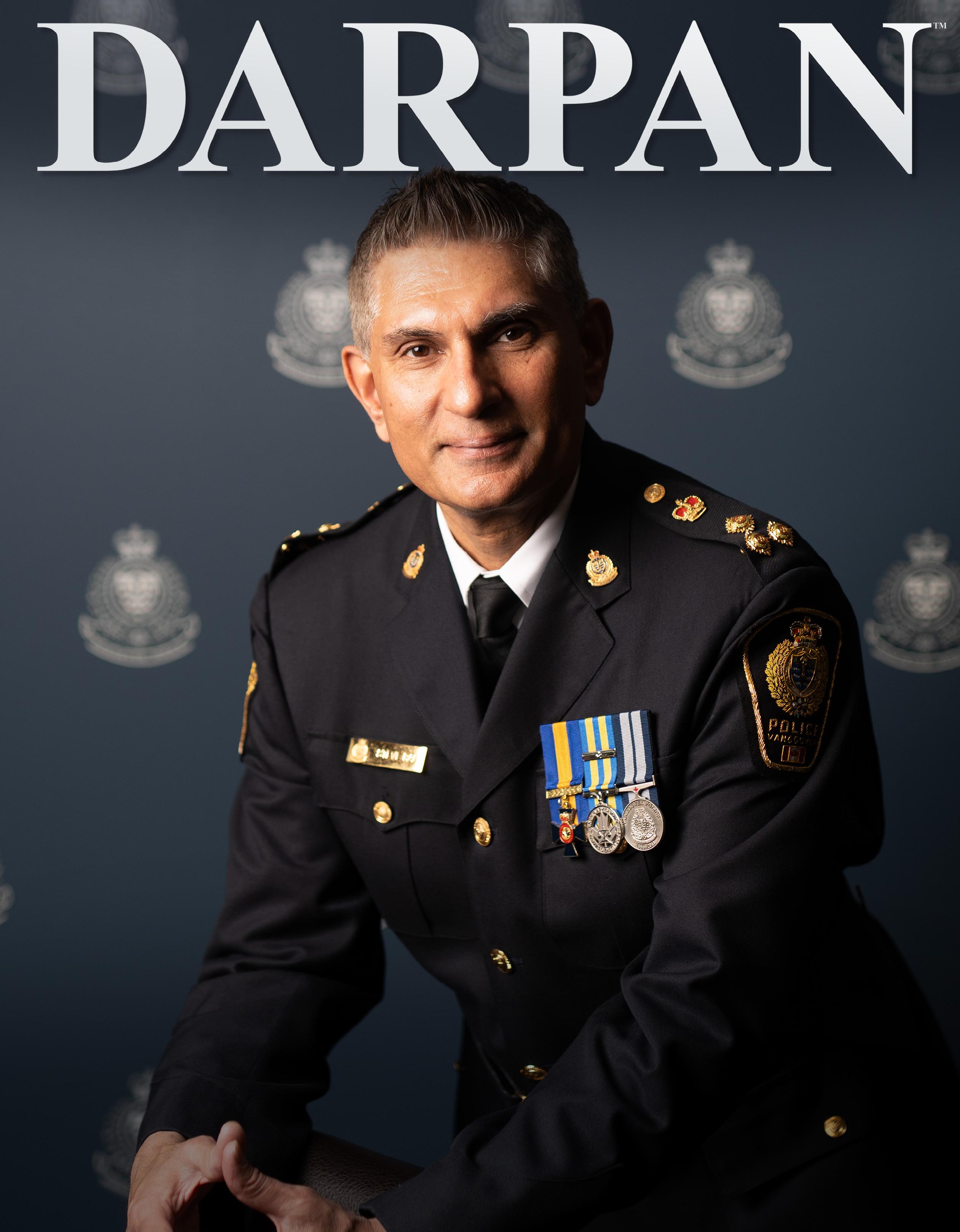
DARPAN SPOTLIGHT
Chanreet Bassi: First South Asian Drafted into the PWHL


NOMINATIONS ARE OPEN
DARPAN FEATURE
Rakhri SpecialThe Beauty of Sibling Bonds
DARPAN SALUTES A Lifetime of Compassion in Action – Suresh Soni

DARPAN SPOTLIGHT
Chanreet Bassi: First South Asian Drafted into the PWHL















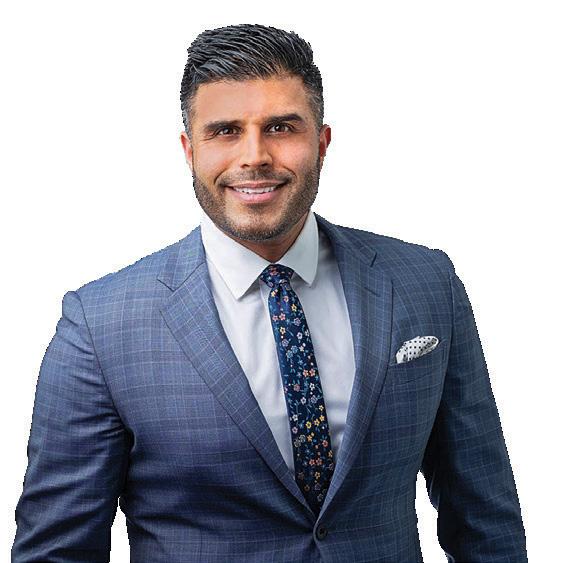



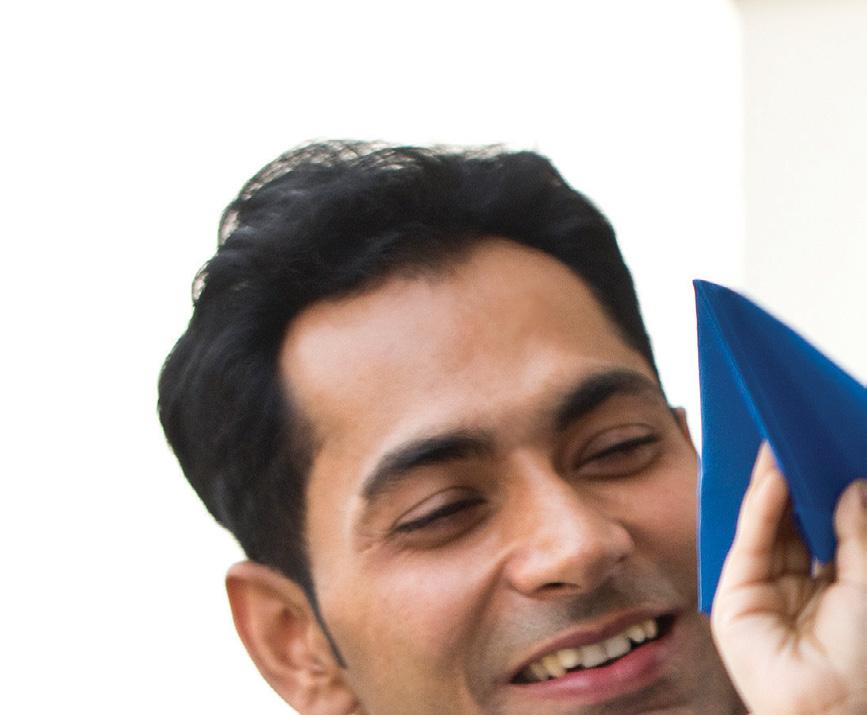
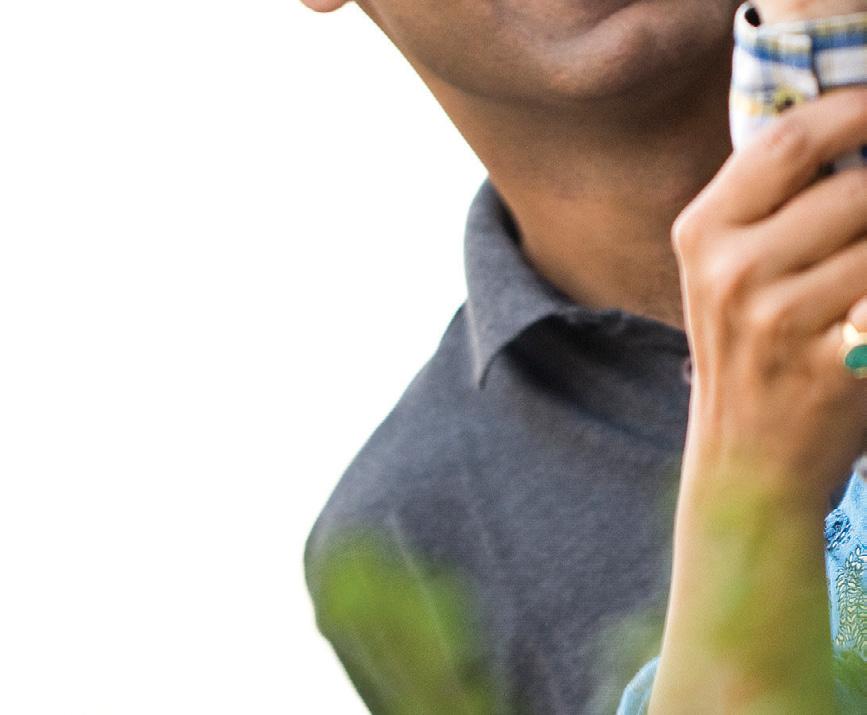








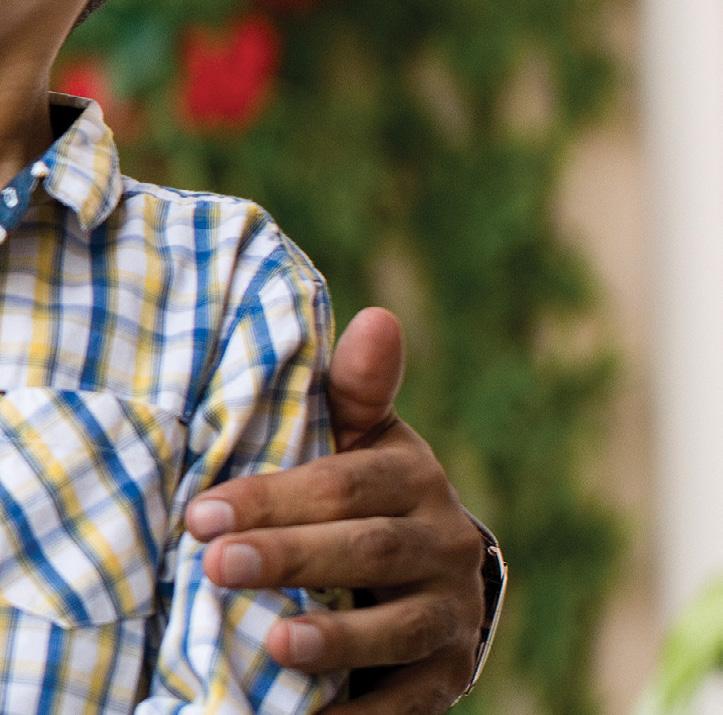








PUBLISHERS
Gurvinder S. Hundal
Ramneek S. Dhillon
EDITOR
Ancy Mendonza
GRAPHIC DESIGNER & VIDEO EDITOR
Annie Velásquez Orjuela
ADVERTISING AND SALES
Gurvinder S. Hundal
Ramneek S. Dhillon
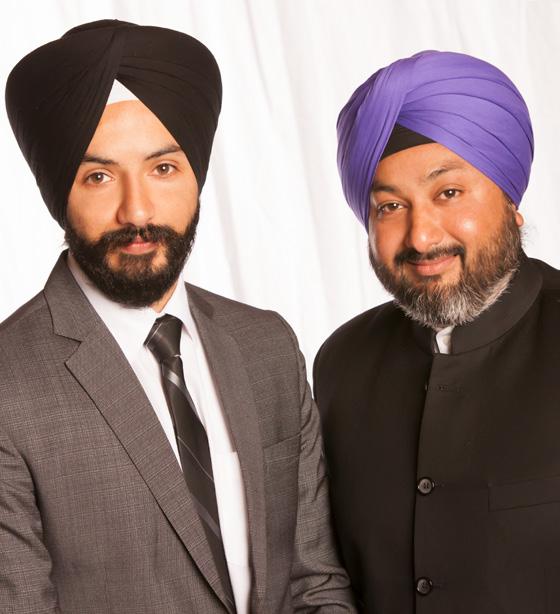
Hello DARPAN readers,
Summer is in full swing, and with it comes sunshine, road trips, long evenings with friends—and of course, a fresh issue of DARPAN! Whether you're unwinding on a beach, catching up with family, or simply stealing a quiet moment for yourself, we hope this issue brings a little extra inspiration your way.
This edition’s cover story is one we’re especially proud of—meet Steve Rai, the first South Asian to serve as Chief Constable of the Vancouver Police Department. His journey is one of resilience, leadership, and breaking new ground, and we’re honored to share it with you.
We’ve also woven in heartwarming stories that reflect the season: a beautiful piece on sibling dynamics, just in time for Rakhi, and an exploration of long-distance friendships that many first-generation immigrants will relate to. Our feature on forest bathing invites you to take a deep breath and reconnect—with nature and yourself.
For our Spotlight section, we’re celebrating changemakers like Diljeet Brar, Chanreet Bassi, Sukhbir Bolina, and the lively UBC Bhangra Club. And don’t miss our main feature on real estate, where we analyze today’s trends in British Columbia and gather insights from realtors across the board. Travel lovers, we’ve got something a little quirky—the strangest hotels around the world— because why not make your next trip unforgettable?
Finally, a quick note: the DARPAN Extraordinary Achievement Awards return on September 19, and nominations are now open! If you know someone doing extraordinary things, let us know—we’d love to celebrate them.
As always, thank you for being part of the DARPAN family.
WRITERS
Ancy Mendonza
Benjamin Yong
Mrinalini Sundar
Naina Grewal
Natasha D'souza
Shweta Kulkarni
CONTACT
Tel: 604-572-0199
Email: info@darpanmagazine.com 340-8140, 128 St. Surrey BC. V3W-1R1
JOIN US ONLINE!
Visit: www.darpanmagazine.com @darpanmagazine

DARPAN Magazine, a bi-monthly release by DARPAN Publication Ltd., is a leading South Asian lifestyle magazine. No part of this magazine, including editorial content, images, or advertisements, may be reproduced or reprinted in any form without the prior written consent of the Publishers. The views expressed by contributors are not necessarily those of the Publishers, who assume no responsibility for any errors or omissions. © 2025 DARPAN Publication Ltd. All rights reserved. Publication Sales Agreement No. 41116014





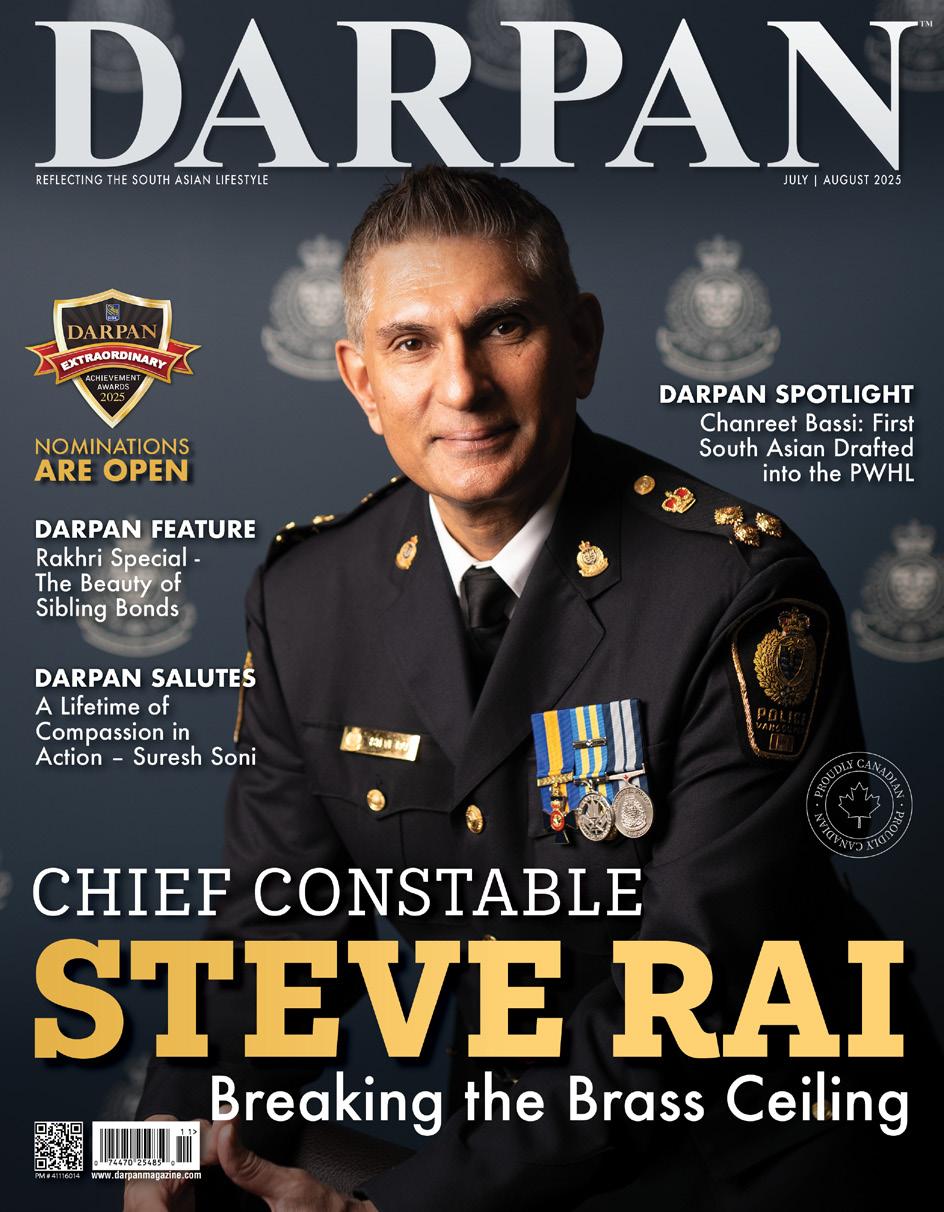

48 Rakhri Special - The Beauty of Sibling Bonds
52 The Unspoken Lifeline of LongDistance Friendships
58 Forest Bathing: A Journey into Nature’s Healing Spaces 64 Parenting Future-Ready Kids
SALUTES
68 A Lifetime of Compassion in Action – Suresh Soni

FITNESS 72 30-Day Wellness OdysseyHolistic Fitness Challenge for 2025
78 Sunscreen Myths Busted: What You Really Need to Know About Sun Protection






Up to 491km of Range 3-Row 7-Passenger Seating
Starting From Only $95,699


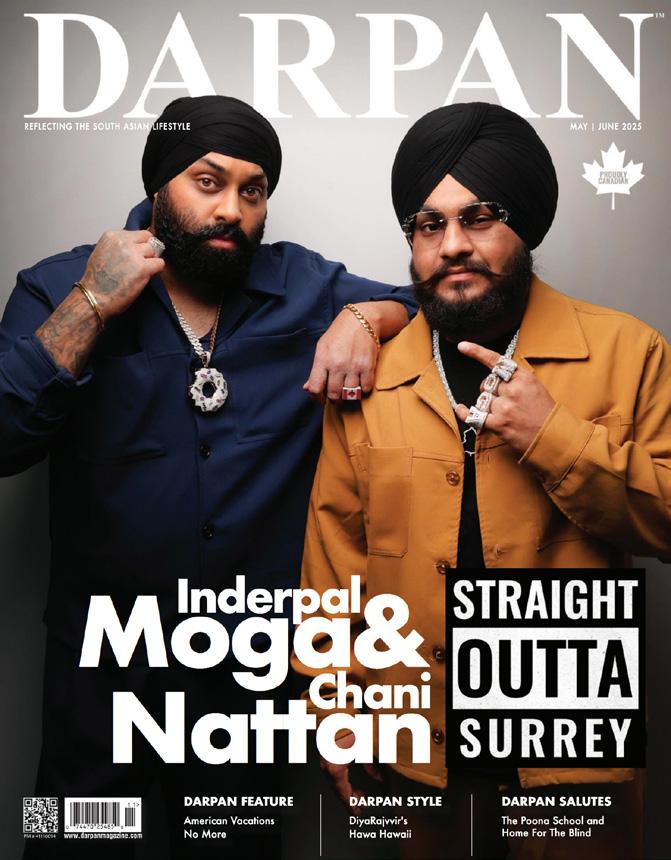
Loved this cover story! It’s so important to highlight homegrown talent like Inderpal Moga and Chani Nattan. Reading about their journey, from Surrey to global hits, was so refreshing. They’re doing big things, and it’s amazing to see DARPAN recognizing that.
– TJ Brar
Re: Thank you for the love! We couldn’t agree more—there’s something extra special about seeing local talent go global, and we were so excited to bring their story to the forefront. Surrey stand up!
– DARPAN Magazine
Write to us: editor@darpanmagazine.com
Tag us on social media: @DarpanMagazine & #DarpanMagazine

This article raised such a valid point—social media is a huge part of kids’ lives today, and it’s not easy for parents to keep track of it all the time. I appreciated the practical advice and how balanced the piece was. Definitely something I’ll be revisiting as a parent.
– Manpreet Jassal
Re: We're so glad it resonated with you! Parenting in the digital age is a challenge, and we believe these conversations are essential. Thank you for reading and reflecting with us.
– DARPAN Magazine
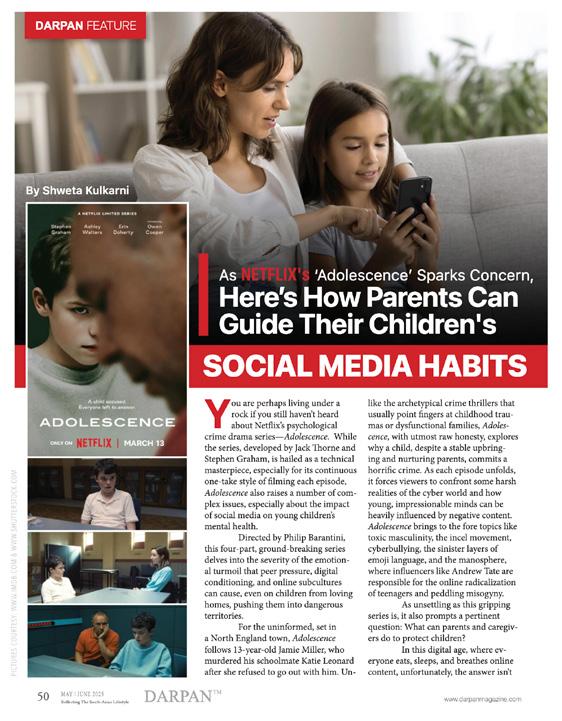
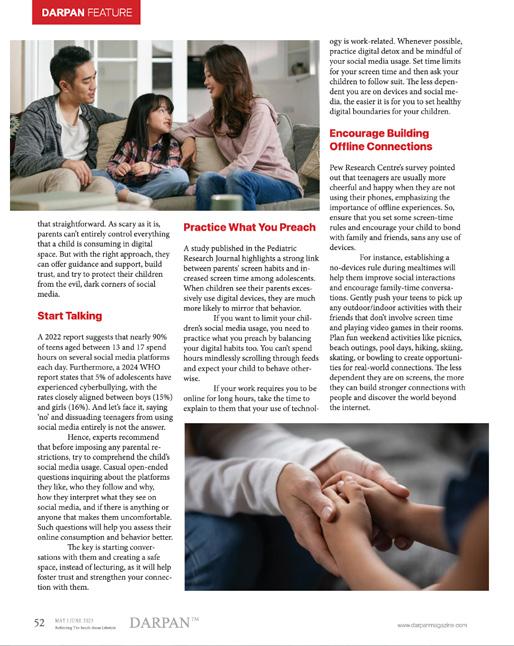

Harjit S. Sandhu, CPA, CA
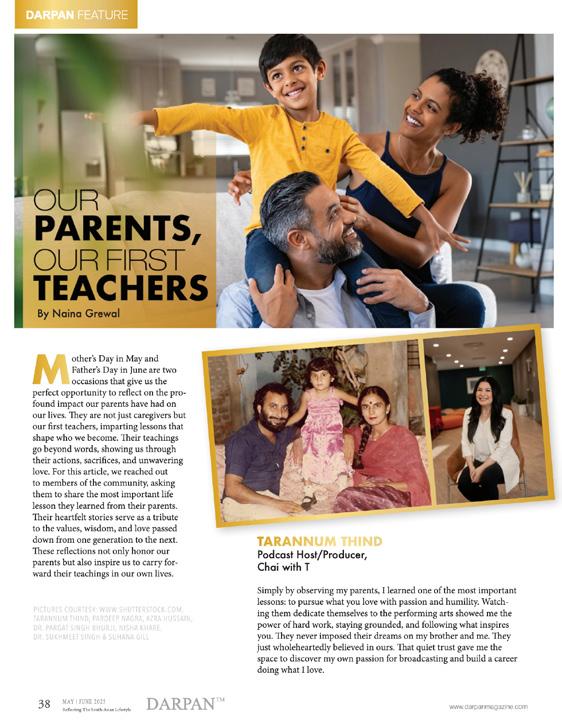

This was such a joy to read. What a beautiful and heartfelt tribute to our parents—brought back so many memories of my own. Articles like this remind us what really matters. Thank you, DARPAN!
– Mrinal Dakshy
Re: We’re so touched the article made you reflect and reconnect. Our parents are our greatest teachers, and we loved putting that love into words. Thanks for sharing!
– DARPAN Magazine
The knowledge you need. The partnership you deserve.

Send money back home, no matter the distance.

Use BMO Global Money Transfer with no-fee* to bridge families and hearts together.
In the current economic landscape, what are the biggest challenges Surrey and White Rock businesses are facing—and how is the Surrey & White Rock Board of Trade supporting them?
Surrey and White Rock businesses face challenges like rising interest rates, inflation, labor shortages, changing global relationships, and supply chain disruptions. The Surrey & White Rock Board of Trade is actively supporting businesses through targeted advocacy, workforce development initiatives, and resources to boost innovation and investment. We continue to champion policies that create a competitive, sustainable, and inclusive local economy.
With rising concerns around public safety— including recent shootings and extortion incidents—what are you hearing from the business community on the ground?
The business community is increasingly concerned. Many are feeling the impact on employee well-being, customer confidence, and overall business operations. The board is actively engaging with the federal government, law enforcement, city officials, and community partners to advocate for stronger safety measures, increased police presence, and long-term wrap-around supports that address the root causes of crime.
Do you feel enough is being done by the government and law enforcement to restore a sense of security and confidence among Surrey businesses?
While efforts are being made, more needs to be done to restore a true sense of security and confidence. The business community is calling for clearer communication, faster response times, and a more coordinated approach between all levels of government and law enforcement. The board continues to push for proactive, long-term strategies that go beyond policing—including investments, legislative action, community-based prevention, and social supports. No one can fix this problem alone. We all need to work together… the community and the public need to be part of the solution.
Have safety concerns started to impact business investment or day-to-day operations in certain parts of Surrey?
Safety concerns have certainly become a growing consideration for some businesses in parts of Surrey. While most continue to operate successfully, there’s an increased awareness around the need for enhanced safety measures. It's a reminder of how important it is to foster a secure environment for both economic growth and community confidence, and the board remains committed to being a strong voice on this issue.

Policymakers need to take a bold, forward-thinking approach that reflects our region’s rapid growth and economic potential. This includes investing in critical infrastructure, addressing workforce and housing shortages, ensuring public safety, and supporting innovation and green industries. "
margins and fewer buffers, so cost increases, supply chain disruptions, and export uncertainties hit them hard. Whether it’s the cost of imported materials or access to international markets, Surrey businesses are feeling the pressure.
maintain open, stable trade relationships. Our business community is resilient, but sustained, coordinated support is essential to help it thrive in today’s complex economic environment.
What role is the Surrey & White Rock Board of Trade playing in advocating for infrastructure, workforce development, and better public safety measures?
We engage directly with all levels of government to push for timely transportation upgrades, investment in education and skills training, and a comprehensive approach to community safety. Through research, policy recommendations, and collaboration with business and civic leaders, we ensure Surrey and White Rock’s voices are heard and that the needs of our growing business communities remain a top priority.
Are you seeing innovation and resilience among local entrepreneurs despite the uncertainty? Any recent success stories that stand out?
Absolutely—despite the uncertainty, local entrepreneurs continue to show incredible innovation and resilience. We’re seeing businesses adapt through digital transformation, sustainable practices, and creative new service models. From tech startups making waves in clean energy to local manufacturers expanding into new export markets, our business community is pushing forward with determination. One standout example is a local agri-tech company that’s using AI to improve crop yields, a great reflection of how Surrey is emerging as a hub for forward-looking industries.
What advice do you have for new or emerging business owners trying to navigate Surrey and White Rock’s current environment?
For new and emerging business owners, the key is to stay informed, connected, and adaptable. Understand the local economic landscape, build strong community relationships, and don’t hesitate to seek support. Prioritize safety, innovation, and workforce development as part of your growth strategy. Most importantly, know that you’re not alone—Surrey and White Rock have vibrant, supportive business ecosystems ready to help you succeed, even in challenging times.
Looking at broader
It has a significant effect on Surrey and White Rock’s businesses.
What would you like to see from policymakers—both provincial and federal— to support Surrey and White Rock’s business community?
Policymakers need to take a bold, forward-thinking approach that reflects our region’s rapid growth and economic potential. This includes investing in critical infrastructure, addressing workforce and housing shortages, ensuring public safety, and supporting innovation and green industries. We also urge both provincial and federal governments to provide targeted support for small and mediumsized businesses, streamline regulatory processes, and
What kind of support or resources are Surrey and White Rock business owners asking for the most right now, and how is the Board responding to those needs?
Business owners are seeking practical support around navigating rising costs, workforce recruitment and retention, and improving public safety. They’re also looking for guidance on accessing funding, adapting to changing market conditions, and building digital capabilities. The Surrey & White Rock Board of Trade is responding by offering targeted programs, advocacy for policy changes, networking opportunities, and tailored resources to help businesses stay competitive and resilient. We’re focused on being a trusted partner that listens closely and acts swiftly to meet the evolving needs of our business community.



By Naina Grewal
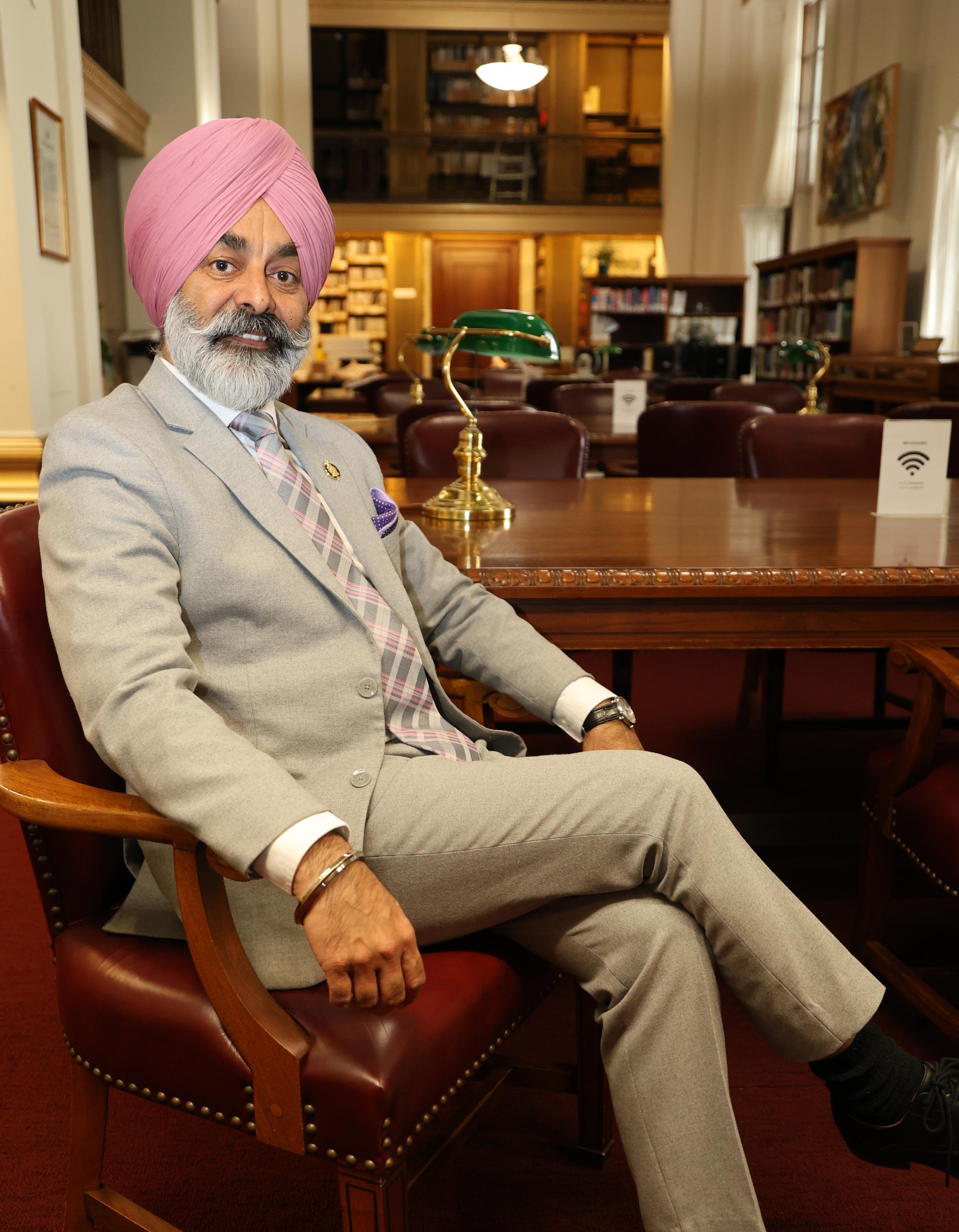
In November 2023, Diljeet Pal Singh Brar made history as the first turbaned MLA to sit in the Speaker’s chair in Manitoba’s Legislative Assembly. For MLA Brar, this was more than a personal milestone; it was a powerful symbol of representation and progress. “This is truly a moment of immense pride and honor—not just for me, not just for the Punjabi community, but for all minority groups in our society,” he shares. This moment was celebrated widely as a historic moment by community members across the province and beyond. In March 2024, he was further appointed as Assistant Deputy Speaker, a role that solidified his commitment to serving Manitoba with dignity and inclusion.
For MLA Brar, these titles are not about individual recognition. He sees them as a reflection of the journey, sacrifices, and resilience of the generations that came before him. “It is important to acknowledge that this moment reflects the struggle, challenges, systemic barriers, and racism that our elders endured during their settlement in this country,” he says. “Despite those hardships, they persevered and laid the foundation for us.”
His presence in the Speaker’s chair is more than a political achievement; it is about visibility and possibility. “It is incredibly meaningful for the next generation— whether visiting the Legislature or following our journey through social media—to see someone who looks like them represented in this space,” he adds. For MLA Brar, true inclusion means that one day, a turban-wearing MLA will not be seen as exceptional but rather as expected and ordinary in the eyes of all Canadians.
MLA Brar’s path to the Manitoba Legislature was not a straight line. He arrived in British Columbia, Canada, on December 31, 2010, as a skilled immigrant, driven by hope and determination. His early days were marked by hard work and resilience as he took on jobs at Kin’s Farm Market and Canada Bread in Langley. He later became a radio host at Sher-E-Punjab Radio and worked in
scientific roles as a lab technician and project manager at Maxxam Analytics in Burnaby.
The dedicated professional’s journey eventually led him to Manitoba, where he continued to build his career and deepen his community involvement. MLA Brar worked as a research assistant at the University of Manitoba, in agricultural research with AgQuest, and as an Extension Coordinator with the Manitoba Department of Agriculture, where he served the farming community for nearly four years.
Beyond his professional contributions, MLA Brar has always been passionate about community building and cultural preservation. He founded Bulla Arts International Inc., a cultural and personality development school ded icated to Punjabi folk dance, language, theatre, journalism, and youth leadership. He also helped establish the Baba Nanak Scholarship for Human Rights Education at the University of Manitoba’s Faculty of Law, which continues to empower future leaders. His fundraising efforts also supported the creation of the Seven Oaks Performing Arts Centre at Garden City Collegiate in Winnipeg.
With the support of his family and community, MLA Brar then made the decision to enter politics. In 2019, he was elected as a Member of the Legislative Assembly for Burrows. During his first term, he served as the Official Oppo sition Critic for Agriculture and as Critic for Sport, Culture, and Heritage. In the historic October 2023 election, he was re-elected as his party formed the government. His current roles include serving as Assistant Deputy Speaker, Legislative Assistant to the Minister of Sport, Culture and Heritage, and as a participant on several cabinet committees. “It is an absolute privilege to represent such a diverse and vibrant constituency in Manitoba, and to be a voice for the people in our province’s sacred Legislative Chamber,” he notes.


One of MLA Brar’s most meaningful contributions is the Turban Day Act, which was passed unanimously in the Manitoba Legislature. This legislation, which he proudly introduced, designates Turban Day to be celebrated annually across the province. Manitoba
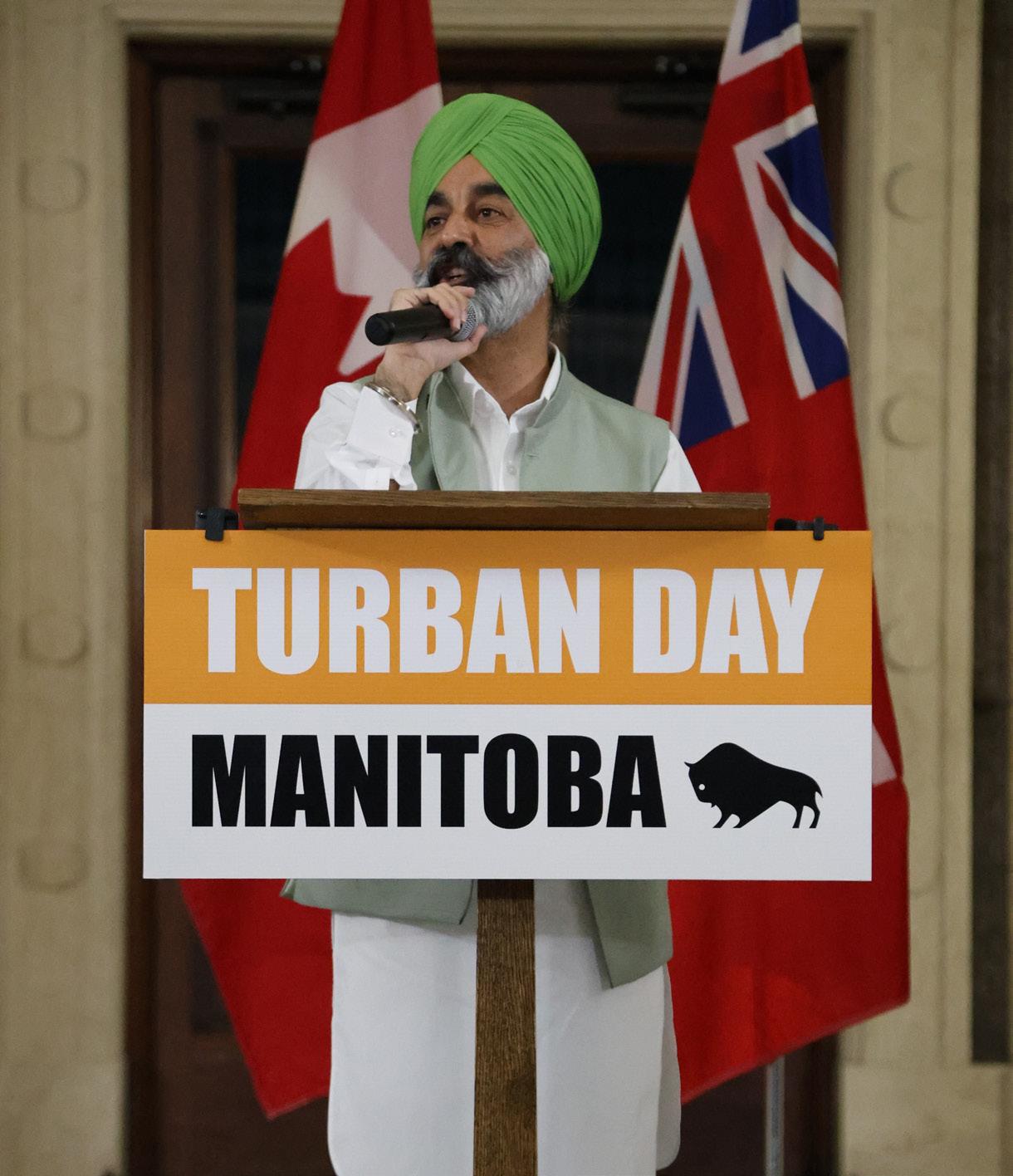
"If I had chosen not to wear my turban to the legislature, you probably wouldn’t be reading about me in this article today.”

remains the only province in Canada to have officially legislated such a day.
“Turbaned Canadians continue to face barriers and racism rooted in prejudice and misunderstanding,” MLA Brar highlights. “As the first turbaned MLA in Manitoba’s history, I felt a deep responsibility to uplift people of color and minority communities.” His experiences as a new Canadian and as someone who visibly stands out inspired him to pursue public education and advocate for cultural understanding. “Manitoba proudly calls itself ‘Friendly Manitoba,’ and the passage of this act reflects our province’s values of inclusion, acceptance, and social justice.”
Fittingly, MLA Brar’s upbringing in Punjab continues to shape his work and outlook. Coming from a farming family, he developed a passion for agriculture and pursued advanced studies in Agricultural Sciences, specializing in Extension Education. Before immigrating to Canada, he served as an Assistant Professor of Extension Education at Punjab Agricultural University, where he taught Agricultural Communication and Extension and worked to support rural development. His background in community engagement, cultural communication, and scientific research has helped him build meaningful connections with his constituents.
To young Canadians, especially those from diverse backgrounds who aspire for leadership roles, MLA Brar offers heartfelt advice. He encourages young people to get involved in public service, start early, and never hesitate to put their names forward, emphasizing, “Be proud of who you are. Never view your identity as a barrier—it is your strength. Canada needs more leaders from diverse backgrounds. Your voice matters, and your presence can help shape a more inclusive and representative future for all. If I had chosen not to wear my turban to the legislature, you probably wouldn’t be reading about me in this article today.”
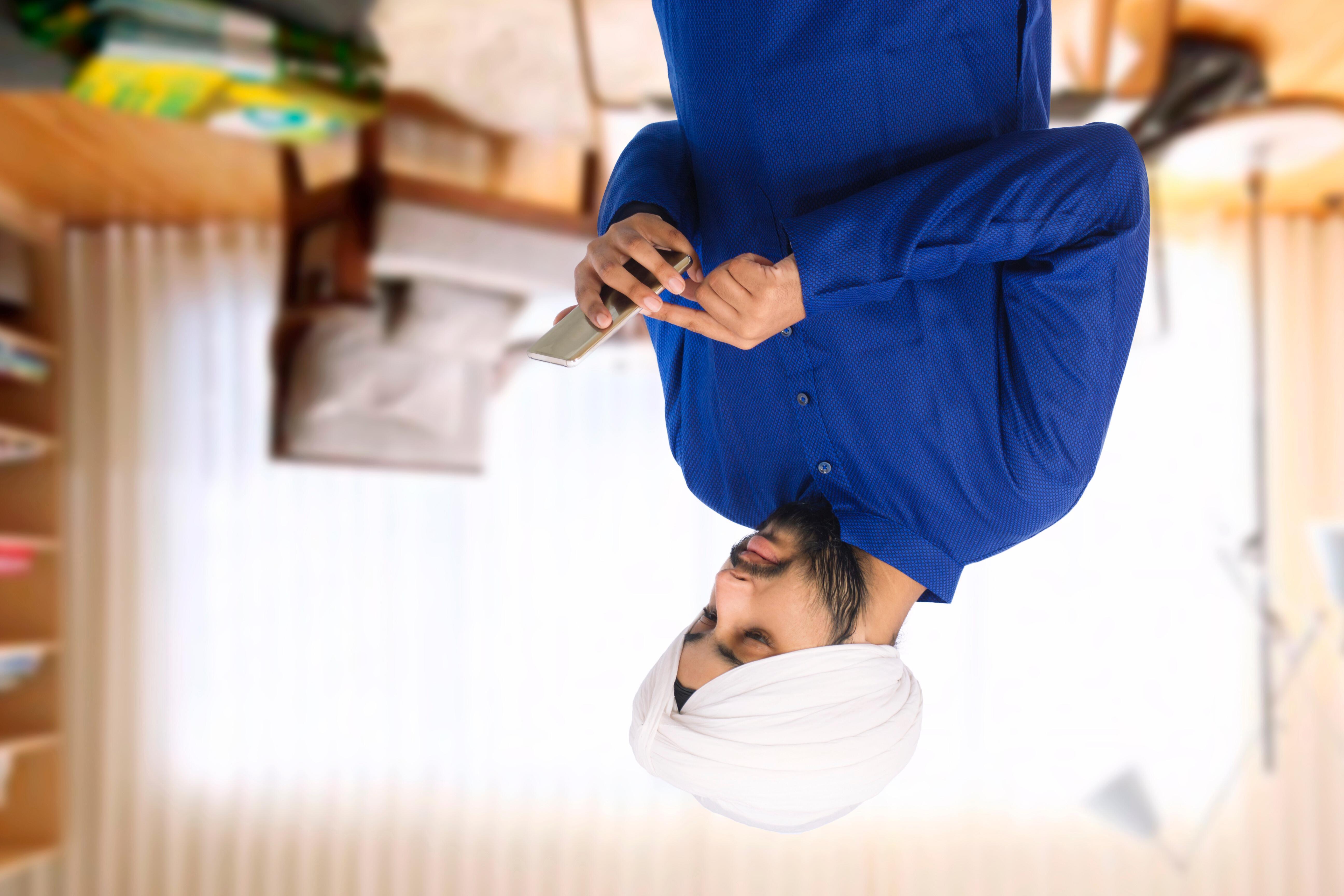



By Naina Grewal
When Chanreet Bassi heard her name called on PWHL draft night, she was beyond excited. With that announcement, Bassi not only secured her place in professional hockey but also made history as the first South Asian player drafted into the Professional Women's Hockey League (PWHL). A standout forward from the University of British Columbia (UBC) Thunderbirds, she also became the first UBC athlete to be selected in the league's draft.
Her journey to this milestone started at just four years old, inspired by watching her older brother play. “My par-

ents first got the idea because one of my cousins played,” she shares. What began as a family-inspired activity soon turned into a passion that would shape her entire life. Growing up in Kelowna, Bassi lived just five minutes from the city’s main ice rink. She often watched Western Hockey League (WHL) teams and looked up to players like Shea Weber, Brendan Gallagher, Tyson Baillie, and Leon Draisaitl. "Some of the WHL players gave me multiple stickers and signed jerseys; I looked up to those players a lot," she remembers. Bassi also drew inspiration from NHL stars. "I especially remember looking up to Sidney Crosby," she says.
Among her other NHL idols were Brendan Gallagher, who went on to have a successful NHL career, and Martin St. Louis, now the head coach of the Montreal Canadiens.
Bassi’s path to professional hockey wasn’t without challenges. For her, the sacrifices began early and stayed with her through university. "You have to sacrifice a lot, like time and vacations. You're training every day and staying consistent," she reveals. "We never went on vacations as a family because of hockey sometimes."
Balancing the demands of sport with academics was another test




of resilience, especially when there was no professional league yet for women’s hockey in Canada. It is worth mentioning that the PWHL, established in 2023 with six teams—three based in the United States and three in Canada— launched its inaugural season in 2024. The league expanded in its third season (2025–26) to include new teams in Seattle and Vancouver.
Anyhow, despite the obstacles, Bassi’s determination never wavered, and her parents were a constant source of support. "My experience is actually the opposite of what people assume. My parents put us in four or five different sports. They really encouraged hockey because they were drawn to how competitive it was. It kept us busy, out of trouble, and helped us make connections."
Her upbringing on the family’s cherry farm in Lake Country, B.C., also played a pivotal role in shaping her work ethic. “That kind of lifestyle is definitely more blue-collar, especially when you’re working for the family,” she says. “We did everything, including digging holes and planting every single tree by hand. My brother and I would work in 40-degree summers. That said, my brother and I’ve only really done half of what my mom and dad have. Nevertheless, it was hard work, especially when we were first getting our farm up and running.” That relentless work ethic would serve her well on the ice, where she became known for her grit and determination. Over her six-year career with the UBC Thunderbirds, Bassi earned a reputation as a fierce competitor and a team leader. She graduated as a four-

time Canada West All-Star, tying the record for all-time career points at UBC with 116 regular-season points. Her performance was consistently stellar as she finished in the top three in conference scoring for four consecutive years and played a crucial role in delivering three straight Canada West championships to her team. In the 2022 postseason, she scored the championship-winning overtime goal, a defining moment that secured UBC’s first conference title in five years.
Bassi’s coach, Graham Thomas, praises Bassi’s dedication and talent: “Chanreet is such a dedicated player. She's so focused on everything she does in her training: her sleep, her preparation, everything. She's already training like a pro, and she has been training for years. She's got great skill, great hands, and a great shot.” As UBC Women’s Hockey Head Coach, Thomas is happy to see that the PWHL is growing, alongside opportunities for players all around the world and in all leagues.

“She's so focused on everything she does in her training: her sleep, her preparation, everything. She's already training like a pro, and she has been training for years.”
Graham Thomas Women's Hockey Coach, UBC
For Bassi, getting drafted into the PWHL is a huge accomplishment, but the journey isn’t over. "Getting drafted was exciting, but now the biggest goal is to make the team," she highlights. “It means a lot. It’s been a goal ever since the PWHL came about. I’m super grateful, especially to everyone who helped me along the way and put so much time and effort into supporting me in this sport.”
Beyond her career, Bassi understands the significance of her achievement for the South Asian community. "I hope younger athletes know that they can do it," she emphasizes. "When I was growing up, I never had that role model of a woman playing in the PWHL. I want the younger generation to see that they can, if they put their mind to it."
The impact of Bassi’s success is already rippling through her community, offering visibility and inspiration where it was once absent.
As she prepares to compete for her place on PWHL Vancouver’s final roster, Bassi’s story stands as a powerful reminder of what’s possible through hard work, sacrifice, and unwavering belief in oneself. Her journey is not just about making history, but about paving the way for others, breaking barriers, and opening doors for the next generation of athletes to walk through with confidence and pride!


By Natasha D’souza
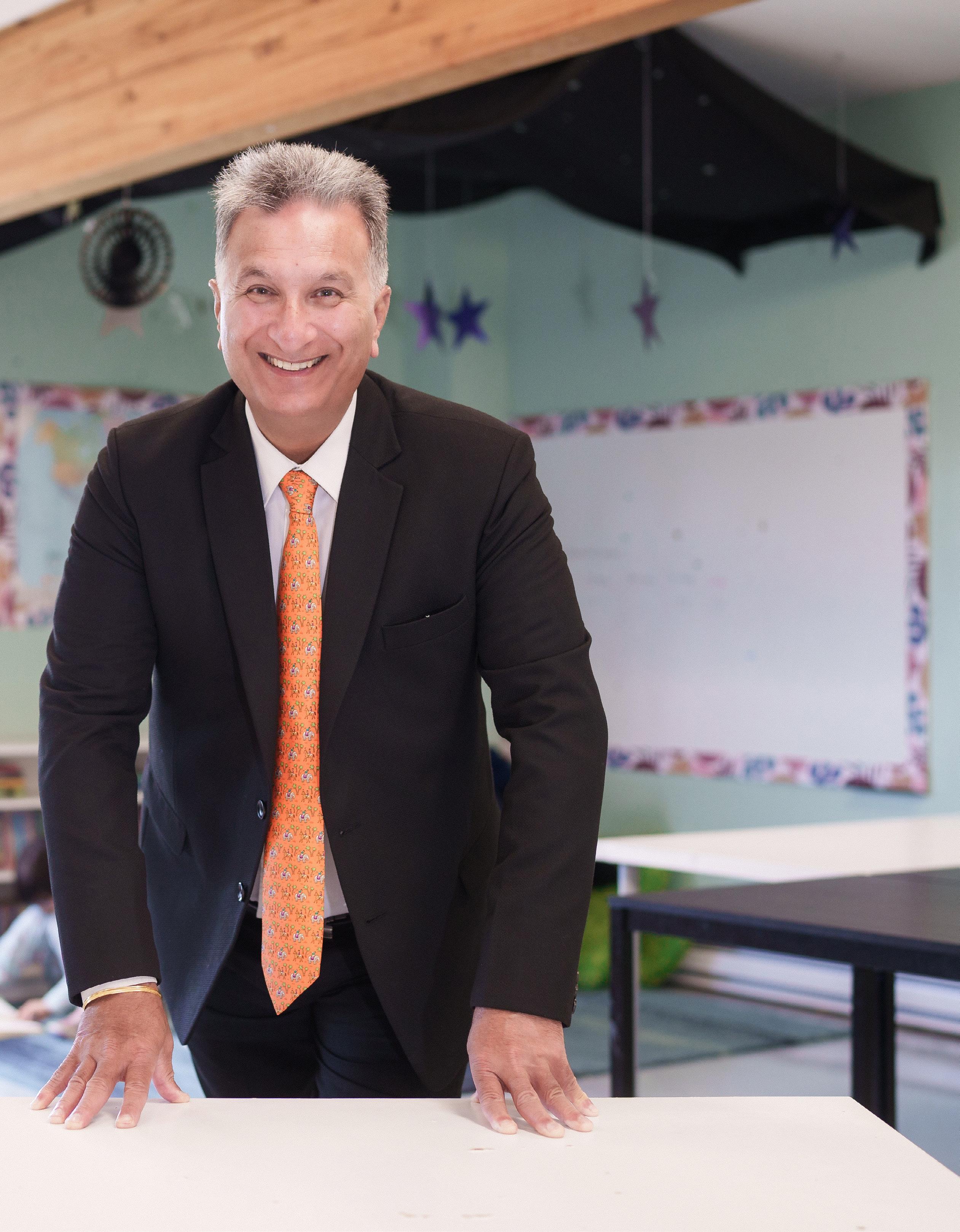
In a world where leadership is often mistaken for power, Sukhbir Bolina defines it differently. For him, true leadership is grounded in service, empathy, and purpose.
With a sharp mind for guidance, a compassionate heart, and a steady resolve to uplift others, Sukhbir embodies the role of a principal not just in title but in impact.
His journey spans continents, from England to Canada, evolving from math tutor to educator to school leader. Throughout, his clarity of vision and commitment to community have shaped his path. Today, as Principal of Choice School for Gifted Children, he leads a transformative approach to education for gifted and neurodivergent learners, many from South Asian families.
“My professional journey began in England, where I earned a Bachelor of Science with Honors in Mathematics from King’s College London. Mathematics is a true passion of mine,” Sukhbir shares.
After immigrating to Canada in 1992, he rebuilt his career, initially working in accounting while tutoring on the side. Teaching drew him in more deeply, and leadership followed.
Relentlessly working around the clock, at Choice School, his mission is to create a space where gifted children thrive academically, emotionally, and socially.
“The current school system often isn’t fully designed for gifted learners. We offer that specialized environment. Even if a child doesn’t enroll, we share resources. These children could become tomorrow’s game changers, the Einsteins and Shakespeares of our time. They may be few, but their potential impact is immense,” he emphasizes.
What sets Sukhbir apart is his human-centered leadership. “It is not about wielding power; it is about caring for people,” he says.
This belief is reflected in everyday moments. “We had a neurodivergent student struggling with anxiety. I knelt at his eye level and gently asked for a hug. That moment changed everything. It wasn’t about training; it was pure compassion,” he recalls.
He personally greets each student every morning with a handshake, high-five, or namaste. “You never know what challenges a child may be facing. It’s important they feel seen and valued,” he says.
He fondly recalls former students. “A student I tutored nearly 30 years ago later studied at one of my schools. He invited my family to his wedding in Thailand and asked me to speak. Another recognized me in a mall after 20 years and introduced me to his entire family. These moments remind me why I do what I do,” he reflects.
With innovation driving his vision, he has introduced programs like math contests, science fairs, and spelling bees, and led the school toward becoming an International Baccalaureate (IB) candidate. “Most schools say, you’re in Grade 3, stick to that level. But we believe in encouraging brilliance. Why dampen it?” he asks.
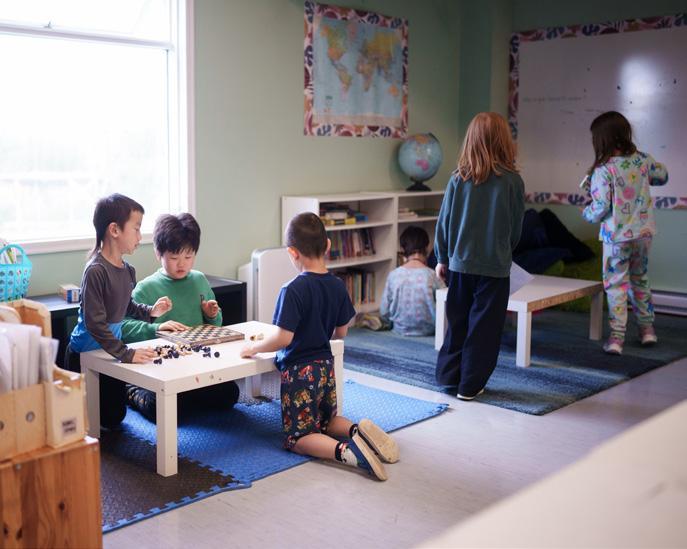
His approach is rooted in his Sikh heritage. “I represent not only myself but my family, culture, and faith. I strive to do the right thing, even when it’s not the easiest path,” he shares.
Sukhbir Bolina is not just leading a school. He is cultivating an educational space where compassion meets excellence, and every child is seen as a seed with infinite potential.




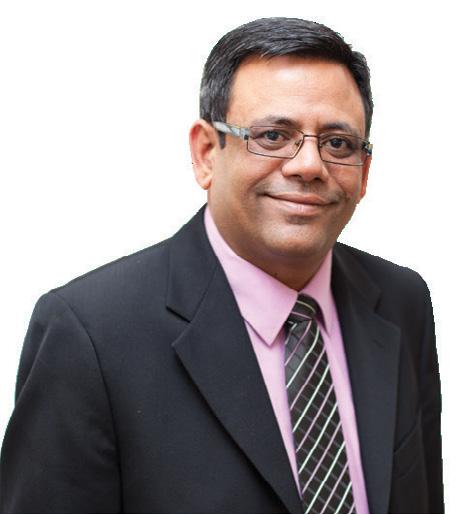






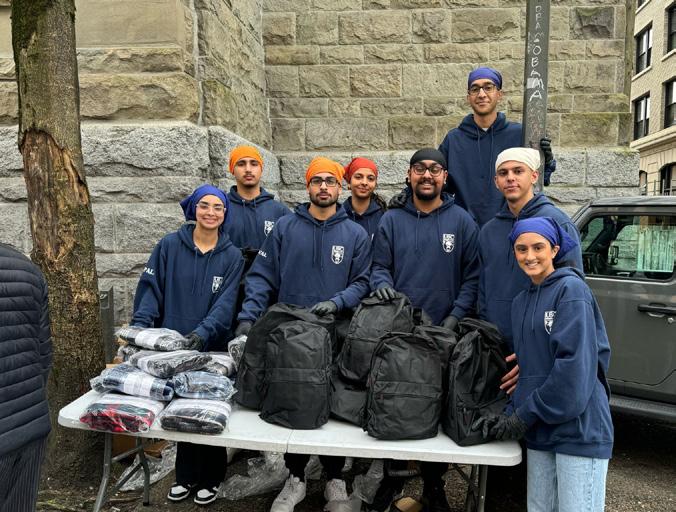
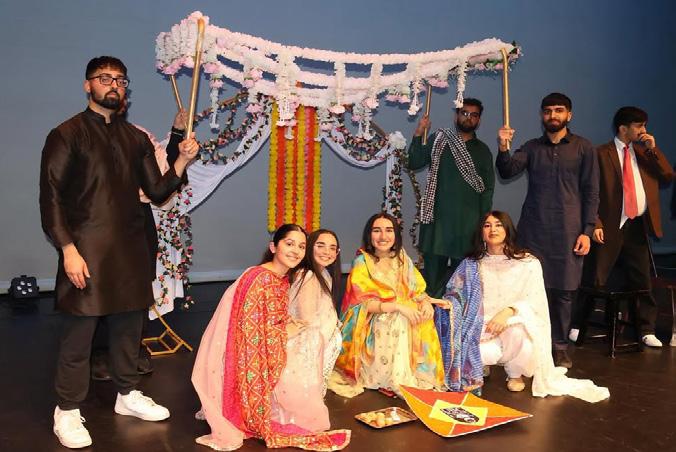

By Natasha D’souza

In the heart of UBC’s vibrant campus, the UBC Bhangra Club stands tall as more than just a dance group.
Founded on October 1, 1992, it has long served as a platform for Punjabi cultural expression. But today, it’s evolved into a dynamic movement, one rooted in community, cultural pride, and seva, aka selfless service.
With over 50 active members, the club has become a powerful example of how tradition can fuel impact. Through fundraising, performance, and shared purpose, the club now plays a central role in shaping cultural confidence and philanthropic spirit on campus.
Co-president and member for three years, Esha Deol, a fifth-year student majoring in health, nutrition, and food, is helping lead the club into a new era. Under her leadership, and alongside presidential teammates Tajveer Grewal, Ekam Mangat, and Prisha Verma, the club recently donated a remarkable $80,000 to the Pingalwara Society, a humanitarian organization in India providing support to the elderly, disabled, and homeless through education and healthcare programs.
“We chose Pingalwara because of their work in education and healthcare,” explains Esha. “We also wanted to introduce this cause to our UBC peers to spark conversation and understanding.”
Esha’s visit to the Pingalwara compound in India further deepened her commitment. “Whether it was at their prosthetic clinic, their school for the deaf, or medical facilities, the sense of community was undeniable,” she says. “It reminded me that when you believe in your team and the process, anything is possible.”
“Being a first-generation Canadian, I knew from an early age that I wanted to make the most of the opportunities my parents gave me. Opportunities they never had!” says Esha. “I think I speak for all our members when I say that this shared experience shaped our ambition.”
That ambition has become a club legacy. In 2023, the UBC Bhangra Club donated $65,000 to Khalsa Aid. Each year, the bar gets higher and the impact deeper. This year’s donation to Pingalwara was more than numbers. It was about raising awareness for a cause close to the community’s heart.
Yet beyond the fundraising, the UBC Bhangra Club’s influence is personal. It’s helped countless students reconnect with their identity. “I’m now so proud of my Punjabi background,” says Esha. “Like many first-generation Canadians, I struggled with the balance between Western expectations and cultural heritage. But through the club, I found people who understood. That made all the difference.”
Leadership has also been a core takeaway. “This club gives you a space to grow, build leadership skills, and gain confidence, all while being surrounded by your friends and peers,” she says. Looking ahead, Esha believes that the club’s work will inspire future student leaders. “I truly hope each year sets a new record in giving and engagement. Just because we’re young doesn’t mean we can’t create lasting change.”
From stage performances to meaningful service, the UBC Bhangra Club continues to redefine what student organizations can do, keeping culture alive while dancing its way toward a better future for all.



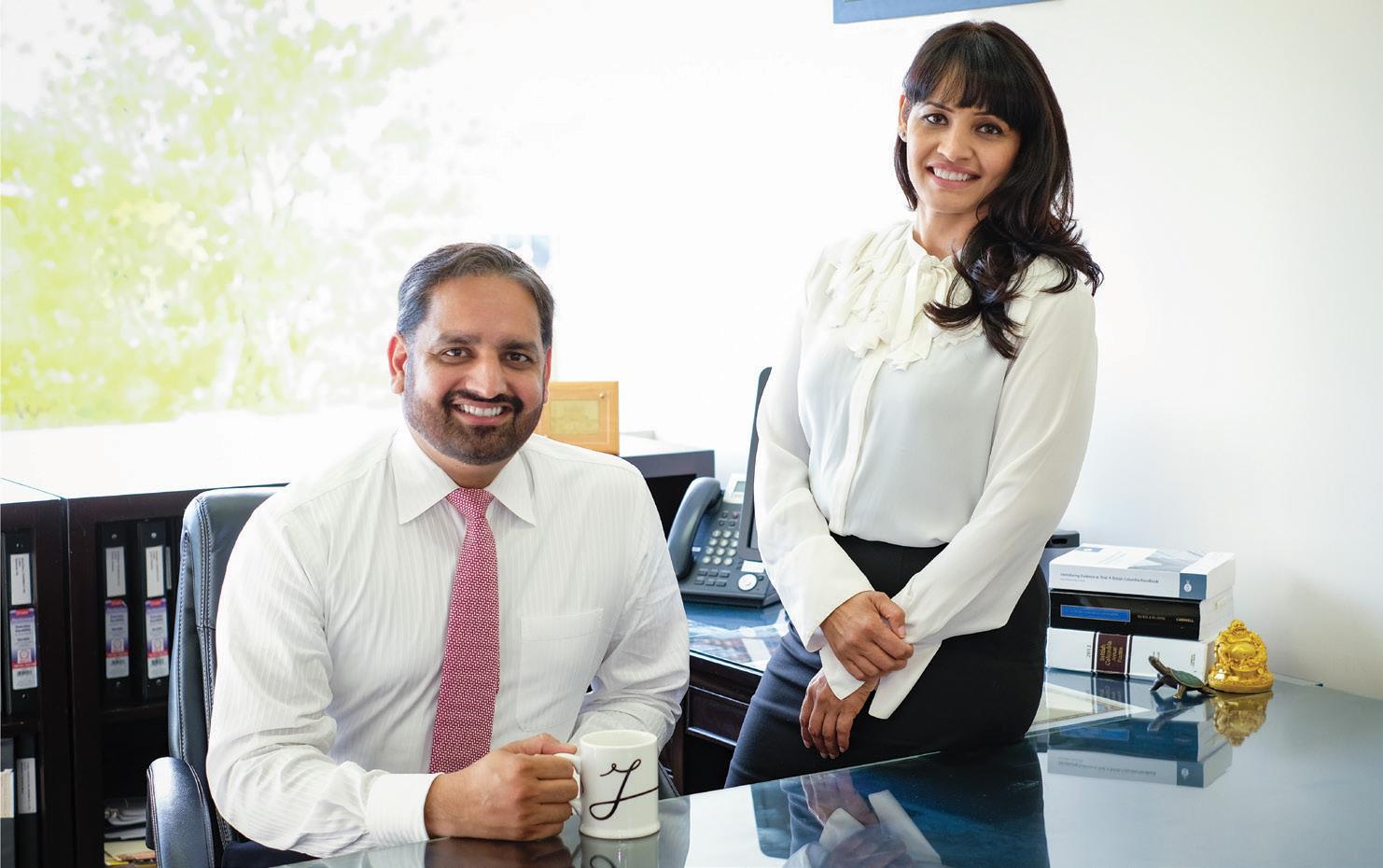






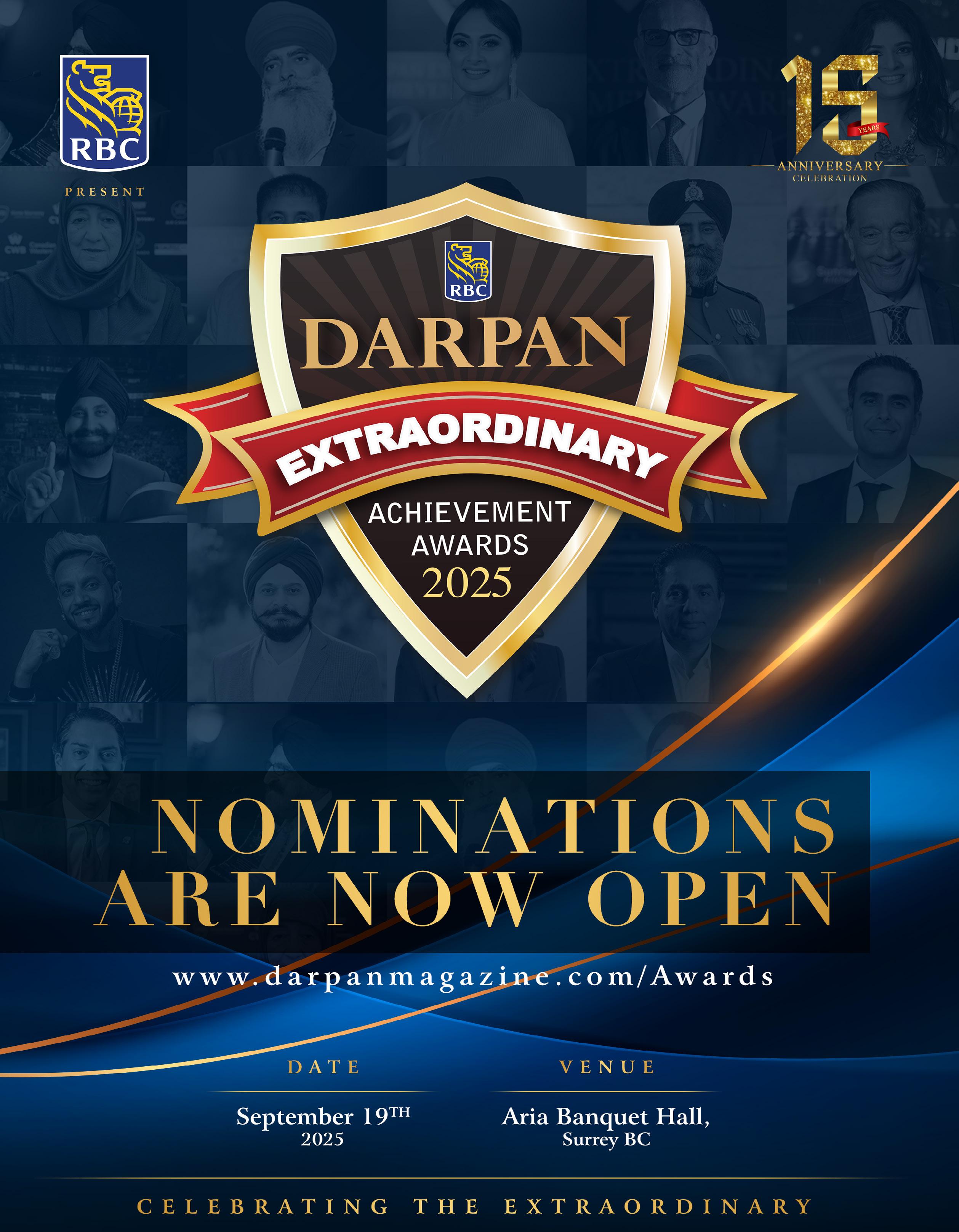
Amar Randhawa knows that healing is never a straight path—and that’s exactly why he’s committed to walking it with others. Amar offers support to individuals and families dealing with mental health struggles, addiction, and trauma. His approach is rooted in lived experience, honesty, and compassion because he himself has walked through the pain to find his purpose. Amar came to a turning point after overcoming his own personal battles: to either stay stuck in his struggles or use that pain to grow. He chose growth and now helps others find peace, meaning, and joy in their lives, even in the middle of difficult circumstances.
Amar works as a recovery coach, mindfulness-based stress reduction facilitator, interventionist, outpatient group facilitator, and provides counseling services with his team. But more than that, he’s someone who listens without judgment. Each plan he creates is tailored to the unique needs of each client and their family. Whether someone is just starting to seek help or already on their healing journey, Amar meets them where they are—with patience, understanding, and a clear path forward.
Amar’s work in the field of mental health and addiction is different because of how real and personal it is to him. He very well understands the shame, fear, and cultural stigma that can stop people, especially in South Asian communities, from asking for help. That’s why his mission is to build trust and create safe, supportive spaces for open conversations.
Amar and his team are known for a holistic approach to wellness, combining practical strategies with mindfulness, emotional regulation, and long-term goal setting. Amar believes in building genuine connections and community. Healing doesn’t happen in isolation—and he has built a network where people can support and inspire one another as they grow.
Every success story fuels Amar’s mission. He’s seen children reconnect with parents, relationships rebuild, and individuals find joy again. For him, there’s no greater reward than watching someone reclaim their life.
If you or a loved one is struggling, know this: help is here, and change is possible. All it takes is one step, and Amar is here to walk the rest with you. Reach out to him at amar_randhawa1@outlook.com or 604 401 3640.
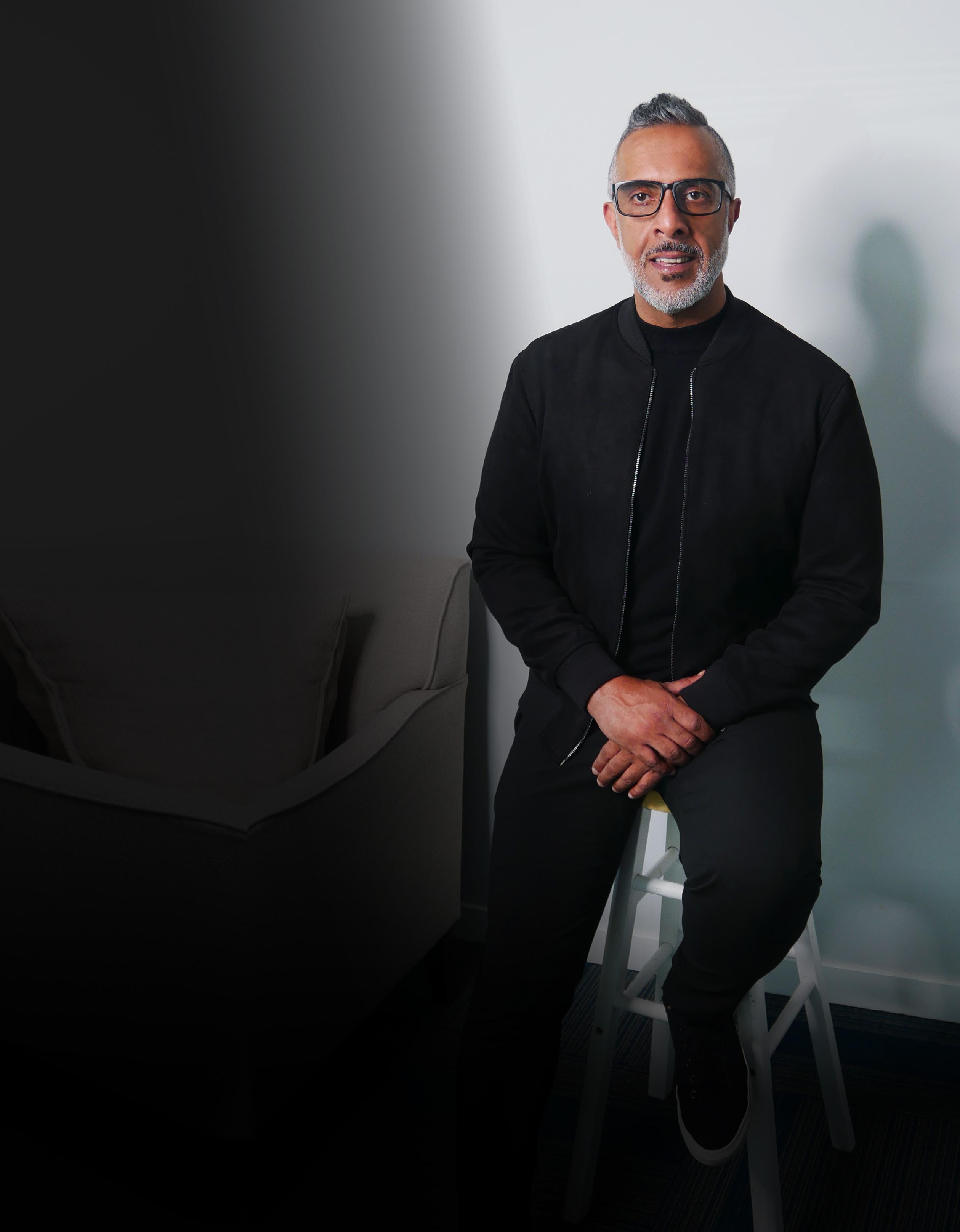
By Ancy Mendonza
Riding high on the success of Deluded—a hauntingly stylish music video in collaboration with YXNG SXNGH that has garnered over 300,000 views on YouTube within two weeks, UK-based music artist Khushi Kaur is rapidly emerging as one of the most exciting new voices in the global Punjabi music scene. Blending classical Indian training with contemporary soundscapes, she’s redefining what it means to be a modern Punjabi artist with every release.
Born and raised in Nottingham, Khushi’s journey began at age 11, singing Kirtan at her local Gurdwara—a spiritual foundation that continues to shape her work. “This foundation most definitely changed my entire perception of music entirely,” she reflects. “After learning about the importance of Kirtan and music within Sikhi, I began to love music even more. This then encouraged me to explore other avenues of music.”
Her passion led her to train in Hindustani classical vocals under Ustaad Roben Gill and at the Shankar Mahadevan Academy. While her current tracks lean into Punjabi pop and Western-infused beats, her classical training remains central to her sound. “Whether the beat is contemporary or mainstream, there’s no rulebook that says you can’t blend the two,” she says. “As a UK-born Punjabi artist, merging tradition with a global perspective feels like a natural expression of who I am.”
Khushi’s breakout came with Kokka, a standout collaboration with DJ LYAN and Juss Nandhra that landed her on the BBC Asian Network A-list and the Official Asian Music Chart. “DJ LYAN first reached out to me with a concept, and once we connected in the studio, everything just clicked,” she shares. “It was my first time experimenting with a garage-type sound. The response was incredible; people connected with it instantly, and the love is still coming in even a year later.”
She kept the momentum going with her debut EP For The Taking, created with YXNG SXNGH. Tracks like Black and Copper quickly went viral, bringing a fresh, fearless energy to the Punjabi scene. “I noticed that not many female artists were exploring this

By Natasha D'souza
























fusion,” she says. “That really motivated me to step into that space and offer something fresh.”
And while doing all that? She was also grinding through university. “When I wasn’t studying, I was singing—and when I wasn’t singing, I was studying,” she laughs. “It got especially intense around release time… but with good time management and staying focused, it all worked out in the end.”
A die-hard Karan Aujla fan, Khushi already has the perfect collaboration in mind. “I’d go for a vibe like Admirin’ You (Unplugged),” she says. “I actually posted a cover of it on my Instagram, and the response was amazing… Karan even commented on it himself, which was crazy!”
As for what’s next? She’s not slowing down. “I’ve got a few new projects and some collaborations coming out this summer. Hopefully, people connect with them and enjoy what’s coming.”
From Kirtan to going viral, Khushi Kaur is doing it all on her own terms. Unapologetically Punjabi, proudly Gen Z, and just getting started—this is her moment, and she’s owning it.












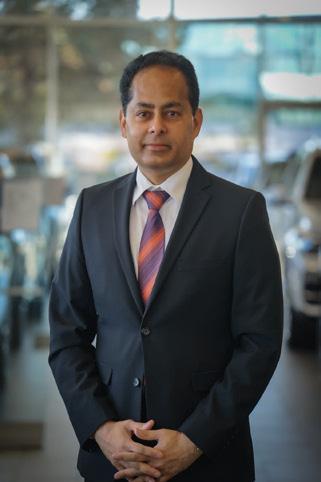


By Naina Grewal

British Columbia’s real estate market has long reflected the province’s global appeal. After the 2010 Winter Olympics, Vancouver emerged as a city of opportunity, attracting global attention for its culture, safety, and natural beauty. Migration and investment surged, fueling an unprecedented housing boom. However, as prices rose, homes became unattainable for many local and first-time buyers. Properties shifted from homes to high-stakes investments, pricing out residents. In response, the government introduced cooling measures like foreign buyer taxes, speculation taxes, and short-term rental regulations, aiming to restore balance and give local buyers a fair shot in an increasingly competitive market. While these measures curbed some of the aggressive investment activity, they also led to unintended consequences. Developers, facing mounting restrictions and soaring construction costs exacerbated by new U.S. tariffs on Canadian goods, began to pull back. The cost of building materials like steel, aluminum, and lumber surged, making new projects less financially viable.
As Milan Mann, president of real estate development and construction at BM Group, explains, "The biggest threat is not any individual cost increase—it’s the broader economic uncertainty that can paralyze activity across the industry." Milan Mann highlights that current housing policies have placed an undue burden on developers. "Too often, recent policies have placed developers in the role of messengers, creating confusion and misunderstanding for buyers," he says. He believes that a clearer, more streamlined process is needed, with direct subsidies to buyers and a GST rebate for all new homes, regardless of price point.
Milan Mann also stresses the importance of deferring Development Cost Charges (DCCs) until occupancy to ease financial pressure during the early, most vulnerable stages of development. "We have the unique vantage point of seeing activity at both ends of the project lifecycle—from early planning and site preparation to final fit-outs and handovers," Milan Mann notes. "What we’re seeing is a declining number of project starts across the industry."
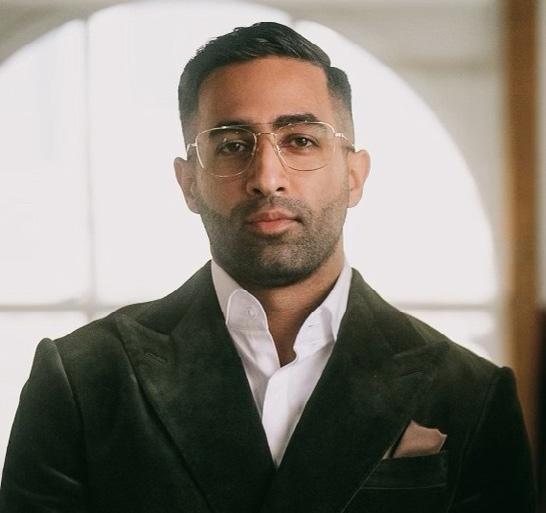
"
The biggest threat is not any individual cost increase—it’s the broader economic uncertainty that can paralyze activity across the industry."
Milan Mann President, BM Group


This slowdown is more than a temporary dip; it signals a constricted housing pipeline that could exacerbate affordability issues in the years to come.
JT Mann, a development land sales specialist, echoes these concerns and calls for urgent public-private collaboration. "The private sector gets things done fast and efficiently," he notes. "We need to accelerate housing supply, streamline approvals, invest in infrastructure for growth, strengthen affordability, support buyers, address speculation, and stabilize demand."
Both industry experts point to the province’s new short-term rental regulations as a major disruptor. Under the Short-Term Rental Accommodations Act, most short-term rentals are now limited to principal residences, severely restricting the once-thriving Airbnb market. JT Mann explains that many property owners have been forced to sell or convert their properties into longterm rentals. While this has provided some relief to the rental market, it has also diminished investment opportunities and potentially stifled tourism-related housing options.
Furthermore, the impact of U.S. tariffs cannot be overstated. JT Mann reveals, “The BC government estimates a cumulative loss of $69 billion in provincial economic activity between 2025 and 2028, with 124,000 potential job losses
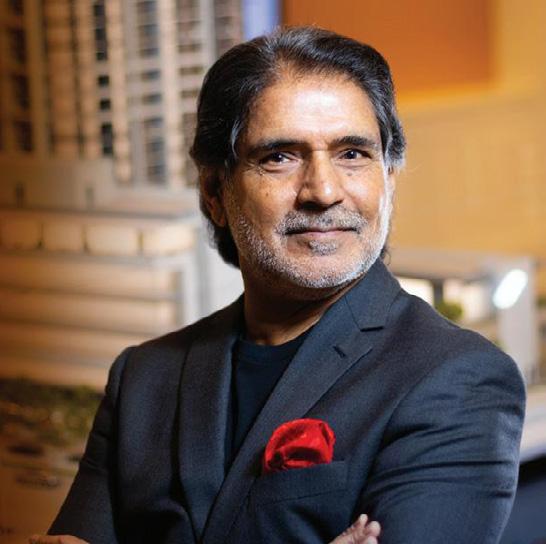
"Restrictions have also negatively affected local businesses that depend on tourism, as reduced visitor accommodation has led to fewer customers for restaurants, shops, and service providers."
Charan Sethi Founder & President, Tien Sher Group
and a substantial decline in corporate profits and government revenues.” Undoubtedly, construction costs are rising, project timelines are extending, and developers are facing tough decisions about whether to proceed or pause.
Charan Sethi, founder and president of Tien Sher Group, shares similar concerns and emphasizes that the speed of municipal approvals and the expansion of housing supply must remain top priorities. "Streamlining the permitting process, rewarding municipalities that meet or exceed housing targets, and allowing greater density are all critical steps," he comments. Charan Sethi commends cities like Surrey for improving their permitting systems, but stresses that policy consistency is crucial. "Sudden regulatory changes create uncertainty and slow progress. A consistent, long-term approach will restore market confidence."
Charan Sethi also advocates for broader support for homebuyers, including reintroducing 30-year amortizations, revising the mortgage stress test, and expanding down payment assistance. "Extending the GST exemption to all new homebuyers—not just first-timers—would provide further relief," he notes. He underscores the importance of encouraging purpose-built rentals through tax incentives and warns against penalizing investors who con-







JT Mann Development Land Sales Specialist
The recent short-term rental restrictions, while aimed at addressing housing shortages, have had ripple effects across the
Charan Sethi points out that many individuals who relied on short-term rental income, particularly retirees, now face financial strain. He details, “Restrictions have also negatively affected local businesses that depend on tourism, as reduced visitor accommodation has led to fewer customers for restaurants, shops, and service providers." Additionally, the surge in U.S. tariffs has pushed up the
cost of building homes by as much as $10,900 per unit, forcing developers to delay projects and renegotiate contracts. Looking ahead, industry leaders anticipate that BC’s residential sales will remain subdued in 2025, with a potential rebound in 2026 as economic confidence improves. Charan Sethi predicts that home prices will stay stable with modest recovery expected through 2026 and 2027. However, slow presale activity and developer caution could limit new project launches, potentially worsening the housing shortage by late 2026.
Milan Mann emphasizes that the government should consider partnering with developers to share risks and encourage housing starts. "Such an approach would enable more projects to move forward, maintain momentum in housing starts, and ultimately benefit the broader market," he explains. JT Mann stresses that a balanced, multi-pronged strategy is essential for market stability. "A multi-pronged approach—centered on boosting supply, supporting infrastructure, curbing speculation, and fostering innovation—will stabilize BC’s real estate sector and support both buyers and sellers," he says.
Surely, despite the current challenges, there is cautious optimism that British Columbia’s real estate market can recover with the right policies and collaboration. Lessons from past booms, affordability struggles, and regulatory changes can guide a more balanced future focused on stability, accessibility, and ensuring housing remains within reach for all residents.



































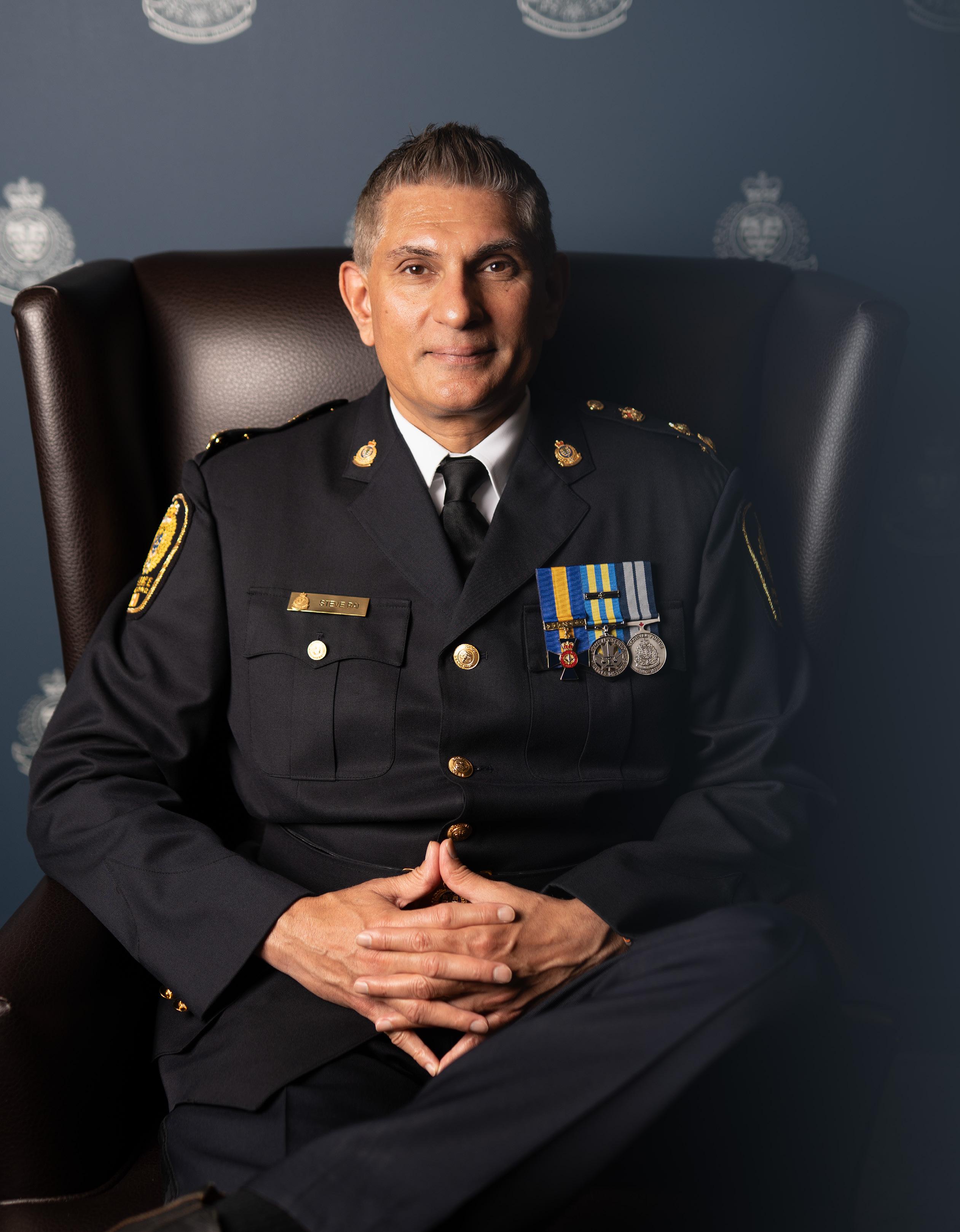
By Ancy Mendonza
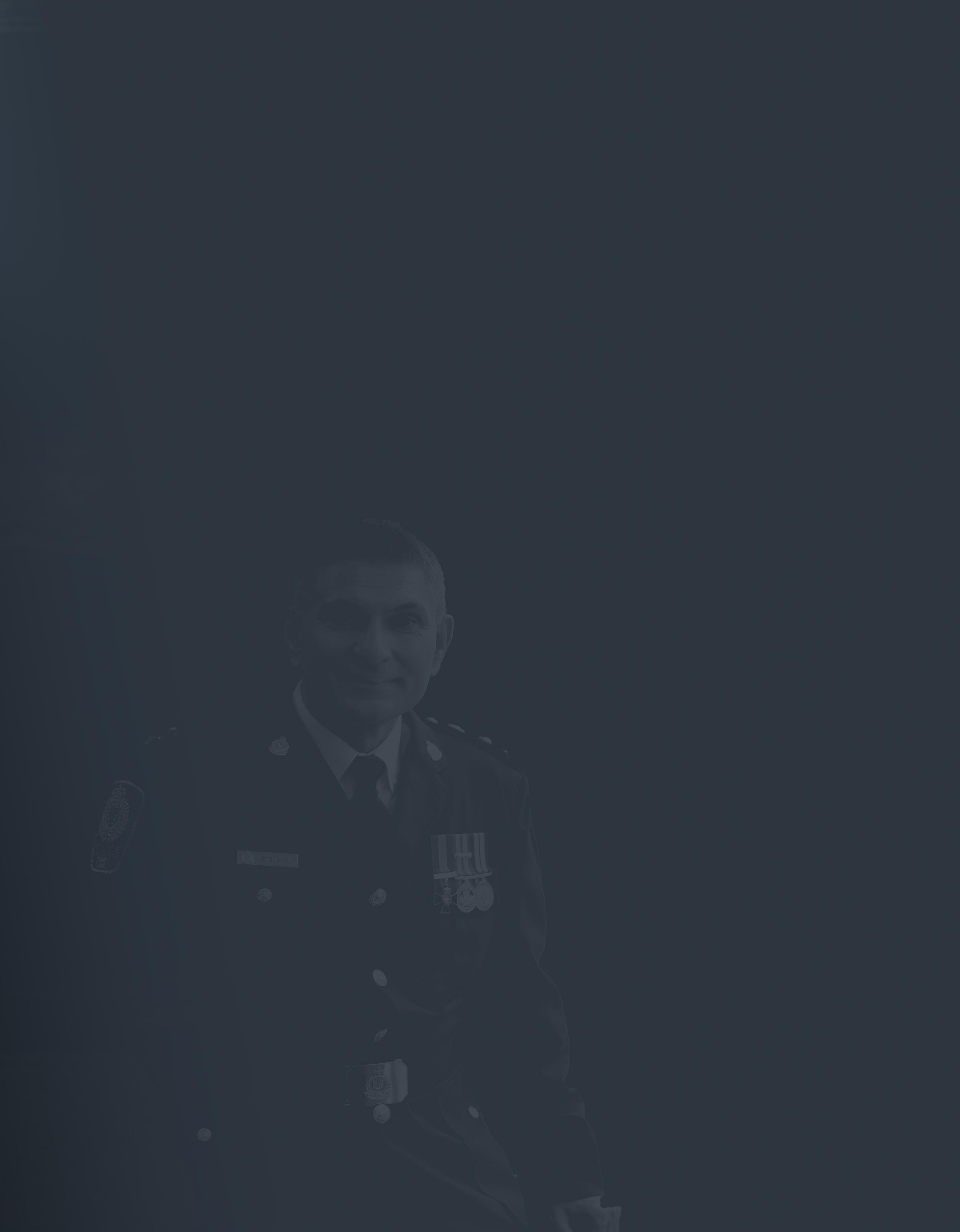
“There’s an obligation. I want to show people—especially South Asian youth—that you can reach these positions without compromising who you are.”
In a quiet corner of Vancouver, a young immigrant boy once stood by his backyard fence as his neighbor, uncertain and unfamiliar with his name, decided to call him “Steve.” Satwinder Singh Rai—new to Canada, new to the neighborhood, and just five years old—accepted the name without protest. He didn’t know it then, but that small moment of adaptation would become a lasting emblem of the balance he would master between two worlds: heritage and home.
Today, that boy is the 32nd Chief Constable of the Vancouver Police Department—the city’s first leader of South Asian descent. At 59, Chief Constable Steve Rai carries the name given to him by circumstance, but the rest—his journey, discipline, empathy, and integrity— he has claimed for himself.
This is not just the story of a police chief. It’s the story of an immigrant, a son, a father, a teammate, and a bridge-builder. A story of humility and honor, of cultural duality lived with grace, and of a man who has carried his roots through every rank and precinct.
Born in rural Punjab, Chief Rai recalls his early childhood with striking clarity, despite having left at the age of five. “I still remember the banyan tree in our village,” he says. “There was this unspoken closeness among people in India. Everyone felt like family.”
His parents emigrated to Canada from Punjab in the early 1970s, joining a small but growing community of South Asian immigrants who arrived with little more than hope and grit. Chief Rai’s father, then just 20, worked backbreaking hours in northern B.C.’s lumber mills to support the family he
had left behind. “He had one jacket, and drank Cremo milk for calories,” Chief Rai says, reflecting on the resilience of that generation. “You didn’t complain. You worked.”
Eventually, his father found work as part of the Vancouver Police Department’s building maintenance team. “He loved that job,” Chief Rai shares. “The officers treated him with respect, like family. That stayed with me and my brother. Even today, some officers might not know me, but remember my dad.”
What also stayed was the impact of early struggles in a new country. As the only Punjabi family on a largely Greek street in Kitsilano, Chief Rai saw the duality of both community and caution. “A neighbor put up these massive fences after we moved in,” he says. “They talked to us, but they were uncomfortable. And yet, over time, those barriers came down.”
Chief Rai never saw his identity as something to be hidden. He wore it with quiet pride, even while navigating a childhood where no one around him looked like him. “I’ve always felt I could be both— proudly Canadian and deeply rooted in Indian culture.”
He pursued a degree in Asian Studies at the University of British Columbia, choosing to minor in Sikh history. He continued on to earn a master’s in Criminal Justice from the University of the Fraser Valley, and later attended programs at Harvard, the FBI Academy, and even abroad in Singapore and Australia. But education was just one part of a larger pursuit—to be excellent at whatever he did. From the very beginning of his career with the VPD, Chief Rai stood out because of how he approached work.
Street Cop Who Never Said No
Chief Rai began his VPD career in 1990 at 23 years of age, serving as a frontline patrol officer in District 3 for 8 years.

He patrolled East Vancouver at a time when gang activity and organized crime were escalating. “Those early years are about building a reputation,” he says. “Not for promotion, but because you want your peers to know you’re someone they can rely on.”
He built his name by saying yes to challenges others might avoid. He worked in jail operations, human resources, and recruiting. He ran the Davie Street Community Police Office, where he helped bridge relationships with Vancouver’s LGBTQ2+ community, leading to the return of uniformed officers in the Pride Parade.
He also spent a decade as a hostage negotiator, a role that demanded not just strategy, but deep emotional intelligence. “You learn how to listen. How to guide someone through a crisis. You’re not just talking people off ledges, you’re listening for what’s missing in
their life story.”
In 2011, he served as public order commander during the Stanley Cup riot, an event that brought Vancouver to a standstill. With calm leadership, he helped de-escalate a situation twice as volatile as the infamous 1994 riot in just under four hours. “No one was seriously injured. That was a good day, considering how it started.”
Even as he climbed the ranks, Chief Rai remained grounded in service. He speaks with special pride about helping vulnerable South Asian women—often young, newly arrived, and in difficult domestic situations—who had no family or support system to lean on.
“I could use my language, my culture, to connect. I saw them like daughters, sisters, like my own community. That’s
“I could use my language, my culture, to connect. I saw them like daughters, sisters, like my own community. That’s something I’ll always carry with me.”



something I’ll always carry with me.” When asked about his leadership style, Chief Rai reflects not just on authority, but empathy. “I’ve hired a majority of the officers walking these halls today. I know their stories. I know what they bring to the table. But I also know that being a leader sometimes means saying no, even to people you care about.”
He also understands the expectations that come with being a visible figure in the community. “There’s an obligation. I want to show people— especially South Asian youth—that you can reach these positions without compromising who you are.” His historic appointment hasn’t gone unnoticed either. “Many people from the South Asian community have reached out. I’m deeply grateful for their support—and especially grateful to Mayor Ken Sim and the Vancouver Police Board.”
He’s especially passionate about guiding the next generation. “Our parents came here with nothing. We owe it to them to move forward, not backwards. That’s why it pains me when I see youth in gangs or drugs. We have to build, not destroy.”
Today, Chief Rai oversees a department of almost 2,500 staff members. He’s at the helm of the largest municipal police department in B.C., second only to the RCMP provincially.
His vision is both pragmatic and progressive. He wants a leaner, sharper force—one that isn’t stretched thin dealing with social issues like mental health and homelessness, which he believes should be addressed by better-funded support systems.
“The model of policing hasn’t really changed since the 1800s,” he says. “We need to evolve. We need to stop doing the jobs of five different sectors and get back to core policing.”
At the same time, he wants the department to continue intelligently diversifying. “Representation matters. It’s important that leadership reflects the community. But success has to come from skill, not skin color. Otherwise,

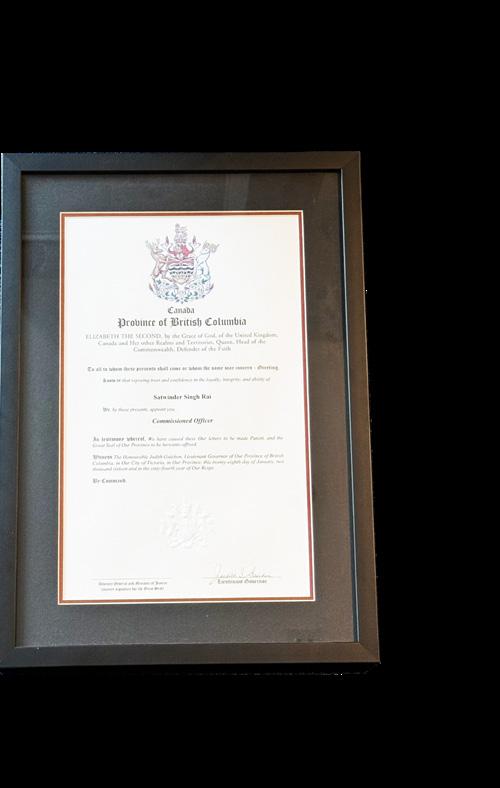
“Our parents came here with nothing. We owe it to them to move forward, not backwards. That’s why it pains me when I see youth in gangs or drugs. We have to build, not destroy.”
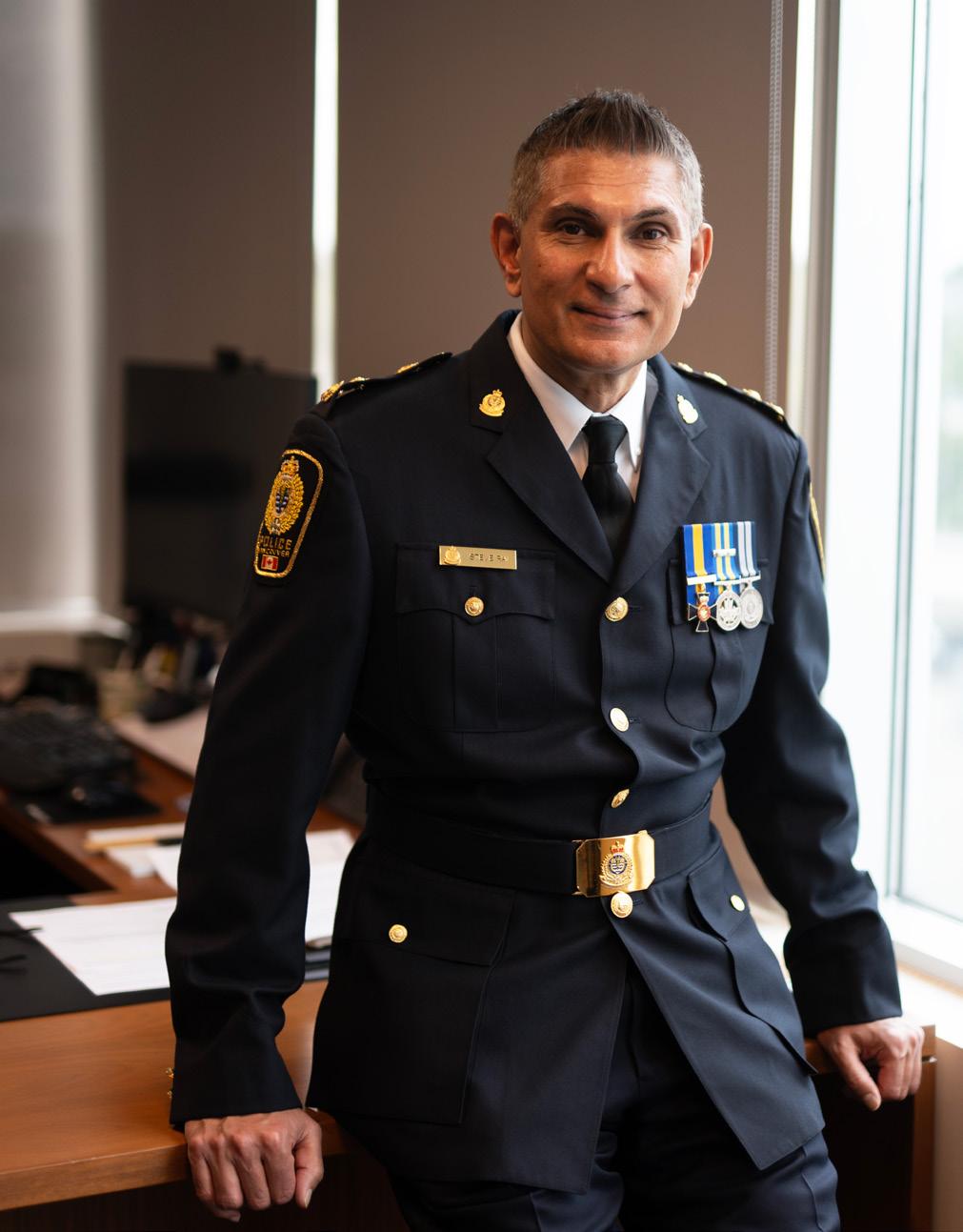
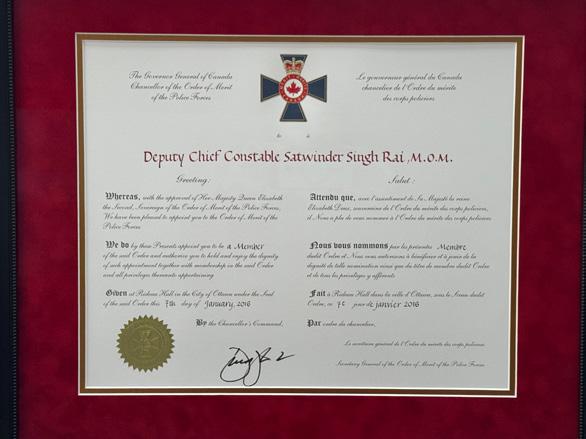
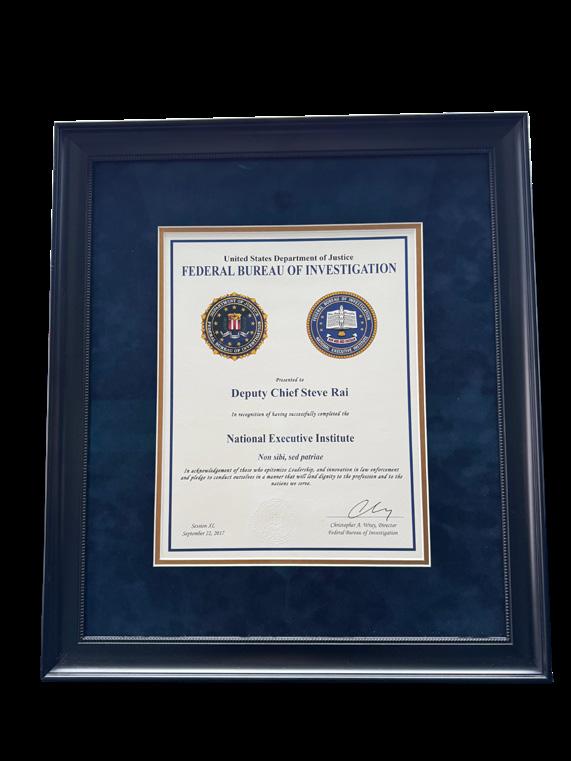
you risk tokenizing people. And that doesn’t help anyone.”
Away from the uniform, Chief Rai is a man of quiet joys. He likes to barbecue, water the lawn, and walk his dog. He recently picked up skiing again, inspired by his son’s love for snowboarding. And he still has a soft spot for astronomy, though time rarely permits much stargazing.
“This job is 24/7,” he admits. “Calls don’t stop when I leave the office. They come in while I’m walking the dog, or driving, or even getting ready for bed. But that’s the commitment it takes.”
He credits his family for their unwavering support—his daughter, a pediatric nurse, and his son, a university student, are both living their own journeys of purpose. “It’s a good time to be doing this job,” he says. “They’re grown, and they understand the demands.”
Chief Steve Rai’s story isn’t just about law enforcement. It’s about honoring where you come from while committing to where you are. It’s about embracing identity, navigating complexity, and still choosing to lead with humility.
For the countless South Asian immigrants flipping through these pages, his story will resonate. It is, in many ways, our story—a reflection of the hope our parents carried in their suitcases, the bridges we’ve tried to build in every profession, and the quiet belief that with hard work and integrity, you can shape an entirely new path. He may not have chosen the name “Steve.” But everything else—he’s earned, on his own terms.

Clients need more than legal knowledge in today’s complex and often high-stakes world of litigation. They need a team that delivers clarity and strategy, and that's where ALMA - Ahuja Litigation Mediation Arbitration delivers on all fronts. Founded by senior counsel Sumit Ahuja, ALMA is a results-driven legal firm rooted in integrity, collaboration, and high-performance advocacy. With offices in Surrey, New Westminster, and Kelowna, the firm has quickly emerged as a trusted legal partner across British Columbia.


Built on the Foundation of Collective Strength
At ALMA, legal issues are never handled in isolation. Every client benefits from a collective approach—multiple legal minds working together to achieve one goal: resolution. The firm’s motto, “Collective Strength, Personalized Solutions,” is not just branding—it is a fundamental operational philosophy. Clients receive tailored legal strategies backed by a full team of professionals who collaborate to identify the most efficient path forward. This team-based model sets ALMA apart. “When you choose ALMA to represent you, you’re not just getting one lawyer, but an entire team that’s aligned around your case,” says Sumit Ahuja. “We’re structured in a way that ensures consistency, responsiveness, and forward-thinking legal strategy.”
Practice Areas & Legal Expertise
ALMA provides comprehensive legal services across multiple areas of law:
• Family Law
• Civil Litigation
• Mediation & Arbitration
• Immigration Law
• Wills & Estates
• Criminal and Traffic Matters
In particular, ALMA has developed a reputation for strength in family law and high-conflict litigation—handling sensitive matters with discretion, strategy, and courtroom experience. The firm’s litigators have appeared in courts across the province, bringing deep knowledge of both procedure and advocacy to every case.
Leadership Rooted in Experience
Sumit Ahuja, a qualified family law mediator and arbitrator, brings nearly
“We’re structured in a way that ensures consistency, responsiveness, and forward-thinking legal strategy.”
15 years of legal experience across some of BC’s most recognized firms. His background includes work in boutique and large firm environments, giving him a 360-degree perspective on the legal landscape. With a focus on client advocacy and pragmatic dispute resolution, Sumit is known for his strategic clarity and courtroom readiness.
In addition to his legal credentials, Sumit is also an advocate for access to justice. Under his leadership, ALMA has established community initiatives and pro bono clinics with a focus on empowering individuals through knowledge and representation.
Sumit himself is open about his personal journey. He brings extraordinary empathy and resilience to his work. “If you’ve been through something difficult, you can recognize it in others,” he says. “It changes how you see people — and how you advocate for them.”
Sumit didn’t name ALMA after himself by accident. While the full name is Ahuja Litigation Mediation Arbitration, the acronym ALMA also means “soul” in Spanish, a fitting representation of the firm's deeper mission. The firm has grown rapidly, now with 15 staff members and some of the most passionate lawyers in the region. The team consists of Jason Hansra, known for his tireless client advocacy; Jasmin Kang, a rising legal force with exceptional grit; Jasdeep Kang, a precise legal thinker; Harman Kang, who brings creativity and calm to
civil matters; and Dr. Arminder Bratch, a former pharmacist turned brilliant legal strategist with a mind like a steel trap.
These professionals, along with a dedicated support team, deliver coordinated, consistent, and compassionate representation.
Clients come to ALMA at some of the hardest points in their lives—separation, custody battles, financial disputes, or immigration hurdles. And while the legal work is serious, the tone at ALMA is always approachable. “We’re not counselors,” Sumit clarifies. “But we do care. And we’ll always tell you the truth, even when it’s hard.”
That honesty, paired with compassion, makes a difference. One client, a mother financially outmatched in court, was represented by Sumit on a reduced-fee basis. “Her children were suffering,” he recalls. “We came in, met aggression with resolve, and equalized the playing field. That’s the work that matters.” In another case, ALMA overturned an unfair court order that had temporarily blocked a father from seeing his children. “Getting that picture from him, holding his kids again—that’s the moment you know you did your job right.”
As ALMA grows, the vision remains crystal clear: be the firm people turn to when they need not just legal representation, but strength, clarity, and a path forward. “We’re here to walk with you through whatever storm you’re in, and get you to the other side,” assures Sumit. That, in essence, is the ALMA promise: real people, real strategy, and real results — delivered with soul.
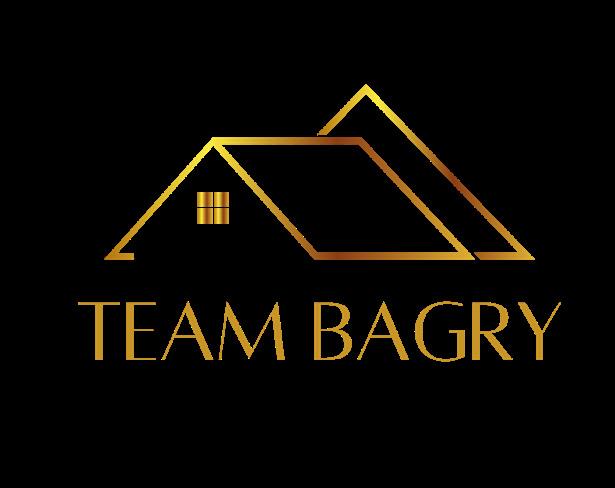
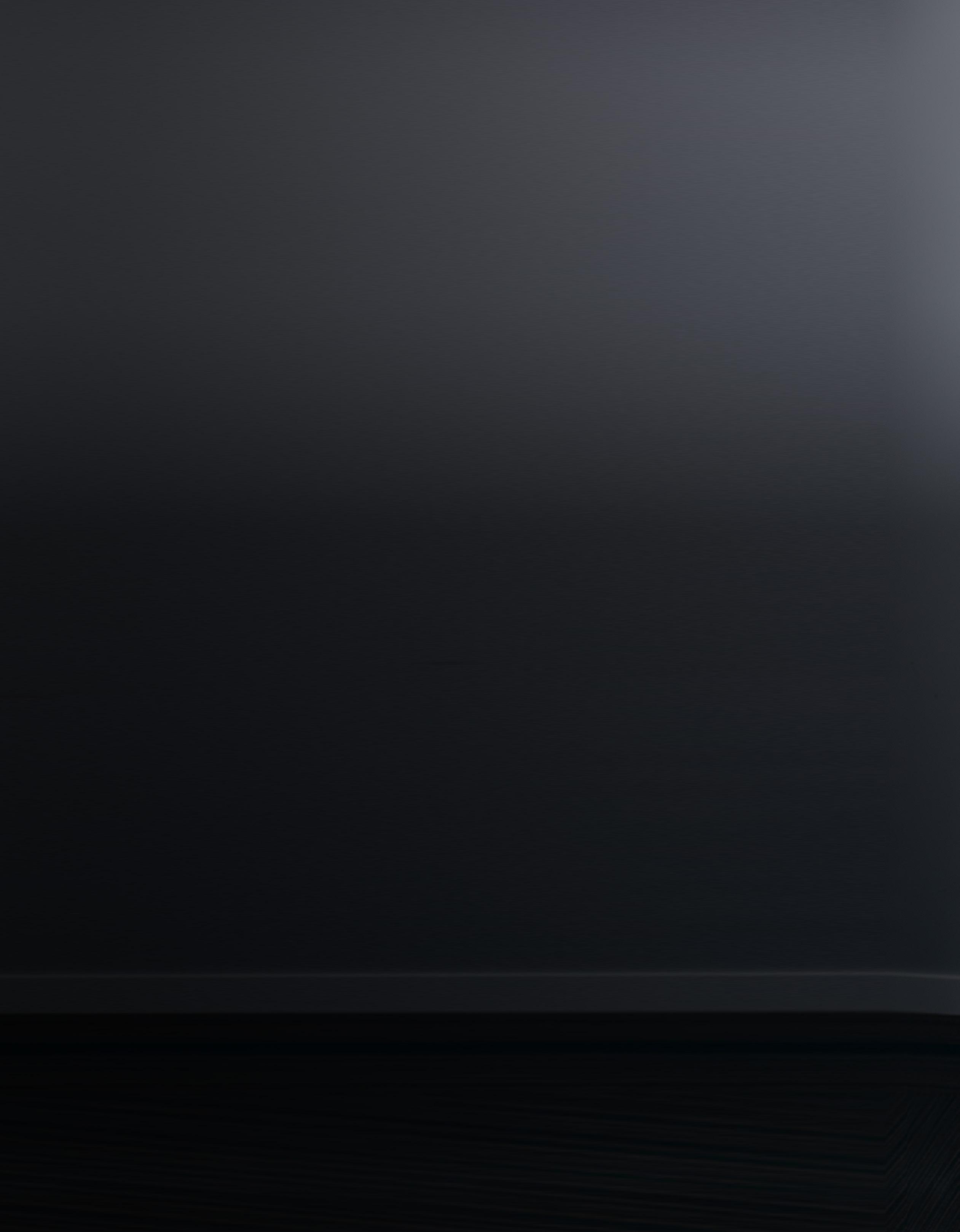
I“We’re advisors who can guide clients through building equity and making smart, future-proof decisions.”
n one of Canada’s most competitive real estate markets, Team Bagry has built a strong reputation for performance, professionalism, and results. This family-run team, led by Sam and Jin Bagry and joined recently by Joven Bagry, operating primarily in Vancouver and Burnaby, brings a wealth of market knowledge and a client-first approach to every transaction.
With over 40 years of combined real estate experience, the team has consistently delivered results across shifting market conditions. They’ve sold over 100 homes in the past two years alone—a testament to their efficiency, strategic execution, and understanding of the region’s dynamic real estate landscape. Their achievements include being named among the Top 10% of All Greater Vancouver Realtors and earning a place in the 2024 Medallion Club, a recognition awarded by the Real Estate Board of Greater Vancouver for top-producing agents.
Sam Bagry entered the real estate industry in 2005, followed closely by Jin in 2006. Their combined backgrounds— Sam’s in investment and long-term value-building, Jin’s in client service and a passion for architecture—have allowed them to operate with both strategic and relational strengths. In 2022, Sam’s son, Joven Bagry, joined the business, bringing a younger perspective and fresh insights into marketing, digital strategy, and modern client engagement.
Team Bagry serves a wide client base, from first-time buyers to seasoned investors, covering residential resale, new developments, and investment properties. Their understanding of
both the emotional and financial sides of real estate allows them to create strategies that are tailored to each client’s unique goals.
While Bagry’s are associated with high-performance results, what drives their business forward is a structured, disciplined approach to daily operations. The team’s day-to-day includes early morning market analysis, proactive client communication, property tours, and real-time deal management.
Team Bagry places a strong emphasis on market data, pricing trends, and strategic timing—especially in an environment where interest rates, housing supply, and buyer demand are in constant flux. Their ability to adapt and remain client-focused regardless of market cycles has ensured sustained performance.
“We’ve seen many phases of this market,” says Sam. “Our clients rely on us for guidance, and our job is to stay informed, objective, and solutions-oriented.”
Though the team operates at a high volume, client service remains a cornerstone of their brand. They are known for clear communication, transparency, and taking the time to educate buyers and sellers throughout the process.
Rather than focusing on shortterm wins, Team Bagry emphasizes long-term client relationships, often working with families across multiple transactions and generations. A significant chunk of their business comes from referrals and repeat clients, reflecting
a strong reputation built on trust and consistency.
“Our philosophy is simple— treat clients the way we’d want to be treated,” says Jin. “That means honesty, clarity, and putting their best interests first.”
Looking ahead, Team Bagry is continu ing to evolve in step with the region’s changing real estate trends. The increasing presence of multi-family developments, combined with limited land availability and growing demand from new immigrants, means the market is becoming more complex.
With Joven now part of the leadership structure, the team is investing further in digital marketing, property technology, and client-facing platforms to stay ahead. They are also actively exploring strategic development and investment opportunities, allowing their clients to not only buy or sell property — but build long-term wealth.
“We want to be more than just agents,” says Joven. “We’re advisors who can guide clients through building equity and making smart, future-proof decisions.”
In a high-stakes market like Greater Vancouver, choosing the right real estate team matters. With a track record of proven success, a strong understanding of local trends, and a multi-generational perspective, Team Bagry offers a business-minded approach grounded in professionalism and reliability.
For buyers, sellers, and investors seeking real estate partners who prioritize results, strategy, and long-term value, Team Bagry remains one of the region’s most trusted names.
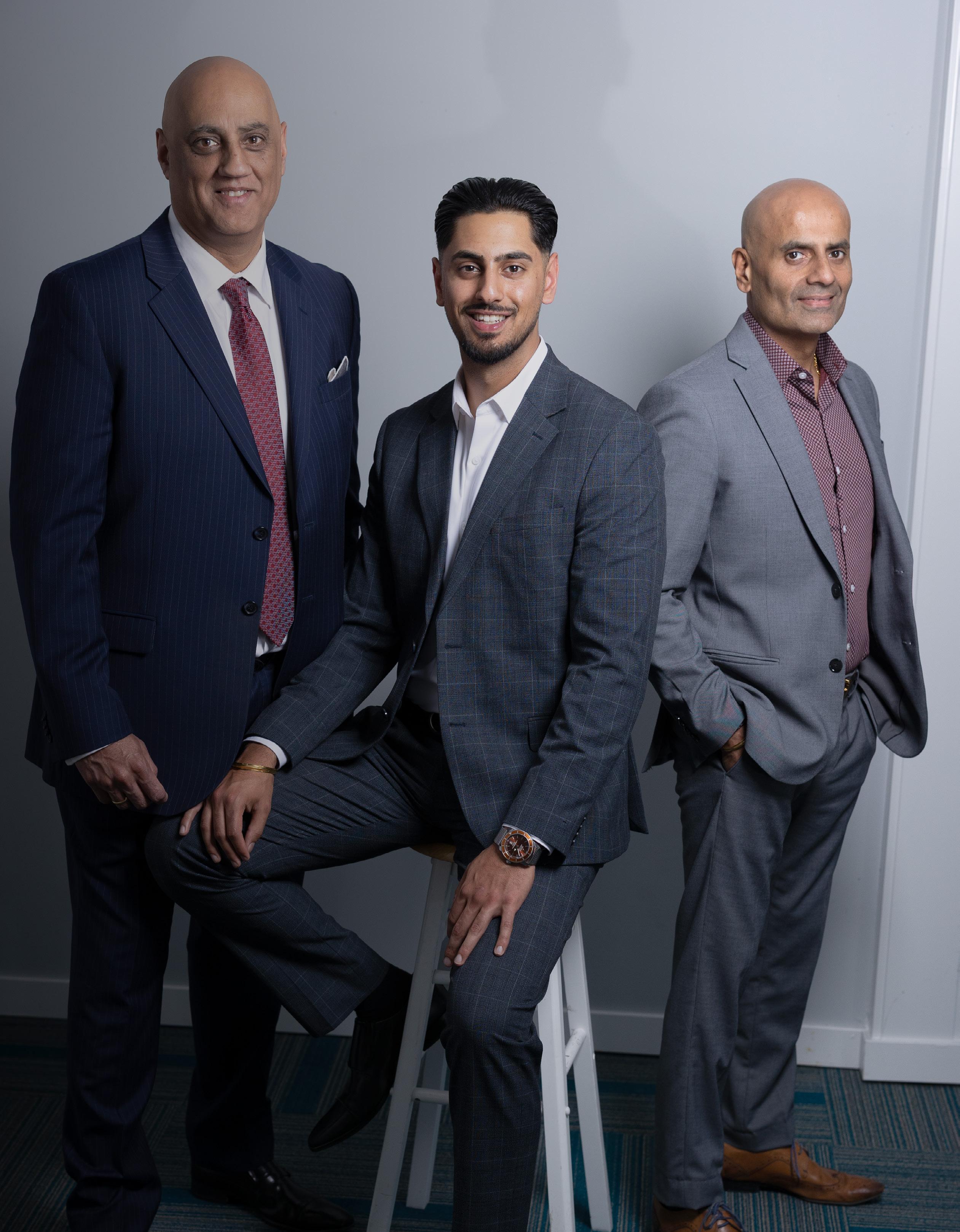

By Naina Grewal
There is something extraordinary about the bond between siblings. It’s a connection that weaves together childhood memories, shared milestones, and countless inside jokes. Siblings are our first best friends, our fiercest rivals, and our lifelong cheerleaders. They challenge us, support us, and see us through a variety of our life’s phases.
As we celebrate Rakhri, a festival that honors the love, protection, and connection between siblings, it’s the perfect moment to reflect on these special relationships. For those that celebrate, Rakhri is not just about the thread we tie, but about the lasting promise it symbolizes: to always stand by each other, through thick and thin.

Jessy Sahota (Police Officer) Paul Sahota (Social Worker)
This year, DARPAN Magazine is highlighting community siblings whose stories showcase what makes these relationships so unique. Whether through sports, academics, or shared adventures, these siblings prove that the love between brothers and sisters knows no bounds.
Q: What do you admire most about your sibling?
Jessy: It might sound a bit cliché, but my brother Paul is truly my rock. He’s my biggest cheerleader and always supports me no matter what I’m trying to do.
Whatever I’m up to, I know I can count on my little sidekick brother to be right there with me, cheering me on every step of the way.
Paul: I really admire how my brother always leads by example. He’s got that natural talent for being a great leader. He’s been there for me through everything, offering support, advice, and guidance along the way. Honestly, I’m pretty much who I am today because he set such a high bar for me!
Q: What’s your alltime favorite memory together?
Our favorite memories are of winning big wrestling and kabaddi tournaments together. We’ve coached at Tamanawis High School and won four provincial titles. Those victories have become a special part of who we are. We are both pretty competitive, so we definitely feel a bit disappointed when we lose, but we also feel a huge sense of pride when the Sahota brothers come out on top.
Q: What’s one silly fight you still remember?
Paul: Back in high school, Jessy and I would hit the gym together before school, which meant waking up at 5 AM. Jessy has always been a morning person, but I’m not quite wired that way. Jessy would wake me up every morning, which was a struggle for both of us. One morning, I was having a tough time staying awake and actually dozed off on the gym bench. Jessy, being the caring brother that he is, decided to wake me up by dragging me off the bench as everyone in the gym held their breath and watched. I fell to the floor and quickly had to collect myself. The rude awakening led to a silly fight that we still laugh about.

Helena Billen
(International Olympic Weightlifter & Coach, SFU Alumni)
Jeenat Billen
(International Olympic Weightlifter, SFU Alumni)
Angel Billen
(International Olympic Weightlifter, SFU Student)
Udaypartap Singh Billen (International Wrestler, Grade 11 Student)
Q: What do you admire most about your siblings?
Helena: We come from a sports family, and after paving the way in Olympic weightlifting, I’m proud of my siblings’ discipline and the goals they’ve set for themselves.
Jeenat: I admire their consistency. They always show up and put in the work, no excuses. It is a testament to their dedication and commitment. They inspire me to be more reliable in my training Angel: I am impressed by their creativity in finding new ways to improve. They're always experimenting with new techniques to better themselves. Their hard work inspires me to keep pushing myself forward.
Udaypartap: I appreciate their ability to stay positive and think about the bigger goal they have for themselves, even after a tough loss. They always come back
stronger, which helps me realize to never give up.
Q: What’s your alltime favorite memory together?
Our favorite memory together is training in the same facility and getting to watch each other, excel, and learn from one another. We believe siblings share a bond that lasts forever. No matter what happens, it is essential to stick together through thick and thin and cherish every moment together.
Q: What’s one silly fight you still remember?
We really do not fight. We try to rise above any disagreement without conflict so that we carry on building a foundation of love and respect for one another.

Aditi Kapil (Business Owner, Brightside Foods)
Deepti Kapil
(Undergraduate Student, UFV)
Geetansh Kapil
(Undergraduate Student, UofT)

Q: What do you admire most about your siblings?
Aditi: I love how excited they get about things. They light up rooms, get so curious about random topics, and laugh their hearts out. They are so fluid and flexible. It doesn’t matter if it’s a study session, grocery trip, walk in the park, or jumping off a cliff—they are always ready to go and bring the energy.
Deepti: No matter what challenge I’m facing, I know I can always turn to my siblings. We’re always on the same team, and we work through problems together by sharing different perspectives. It’s always ‘us against the problem’.
Geetansh: Our bond is about the choice to love one another. My siblings can be both fun and serious, and that balance is what makes our relationship so special.
Q: What’s your alltime favorite memory together?
Anytime we are together! Endless trips, adventures, shenanigans, but our favorite is all the little moments: coming
home to each other, the inside jokes, or a little coffee shared together. These moments make us forget about all our worries, connect, and laugh. The setting and location don’t matter. When we are together, we know we are having a good time.
Q: What’s one silly fight you still remember?
We once had an argument over a completely made-up scenario. We were creating hypothetical situations, and one of us got upset because someone didn’t attend their imaginary 50th birthday party! It still makes us laugh.
These sibling stories remind us that sibling love is one of life’s greatest gifts. Siblings offer a unique kind of companionship that lasts a lifetime. Through victories, silly fights, and shared dreams, siblings build a bond that doesn’t just tie threads but ties hearts. This Rakhri, let’s celebrate these beautiful connections and the joy of being each other’s lifelong teammates!




When leaving your home country, you prepare paperwork, finances, accommodation, and career plans. But what about your friendships? Especially if you’re the first to leave your “squad”.
For initial movers—those who leave familiar circles to build new ones abroad, friendships become anchors to their identity and past. You can pack your things, but not your people. Instead, they travel with you in voice notes, memes, and old messages you can’t delete!
By Natasha D'souza
Long-distance friendships hold your most authentic self. They’re a comforting link to shared memories, slang, even how you like your Maggi. These bonds are vital for mental well-being, especially when new friends don’t share your background or history. These friendships aren’t just personal; they’re cultural memory banks carrying the weight of shared festivals, TV shows, childhood routines, and more.
Being the ‘first’ in your group to move can feel isolated. New friendships may eventually form, but they
rarely come preloaded with context. As an immigrant, the shortcut to comfort often comes from those who know your story without explanation. These bonds become “emotional infrastructure”, especially in cultures where mental health support is still stigmatized. Your friend becomes your therapist, cheerleader, and mirror!
Chai meetups become scattered video calls, spontaneous jokes turn into meme check-ins, but the intimacy doesn’t fade. Long-distance friendships aren’t about replicating the past; they build a new way forward.





“My best friend’s name is Abhilash Sabu. He’s a youth counsellor and also my unofficial therapist, life coach, and comedian,” says Hrishikesh. “We met way back in the day, probably bonding over who had the worst handwriting or who could dodge homework better. From there, the chaos just clicked. Moving countries, starting fresh, questioning my entire existence? Been there, done that, and he’s been the guy reminding me not to spiral.” Hrishikesh recalls a late-night meltdown call, “He picked up immediately, stayed on the line until I laughed, and sent me a custom voice note series, one part therapy, one part stand-up special. The man’s got range. We might not talk every day, but when we do, it’s like zero time has passed. Real friendship ages like wine—better, stronger, and just hits the right notes.”

Manasi Sohoni and Purvi Rambhiya
Manasi met her best friend Purvi Rambhiya during their master's in communications while back home in Mumbai. “We’ve been in touch for six years across countries, always scheduling FaceTime calls weeks in advance. Regular check-ins help us pick right where we left off, no matter the distance,” she says. “We keep a running list of places to eat, talk skincare, and wellness—things I never cared about before. It’s fun seeing how we grow together. We always talk about wanting to travel together and learn new things about each other. I can’t wait to go back and give her a tight hug,” she exclaims.



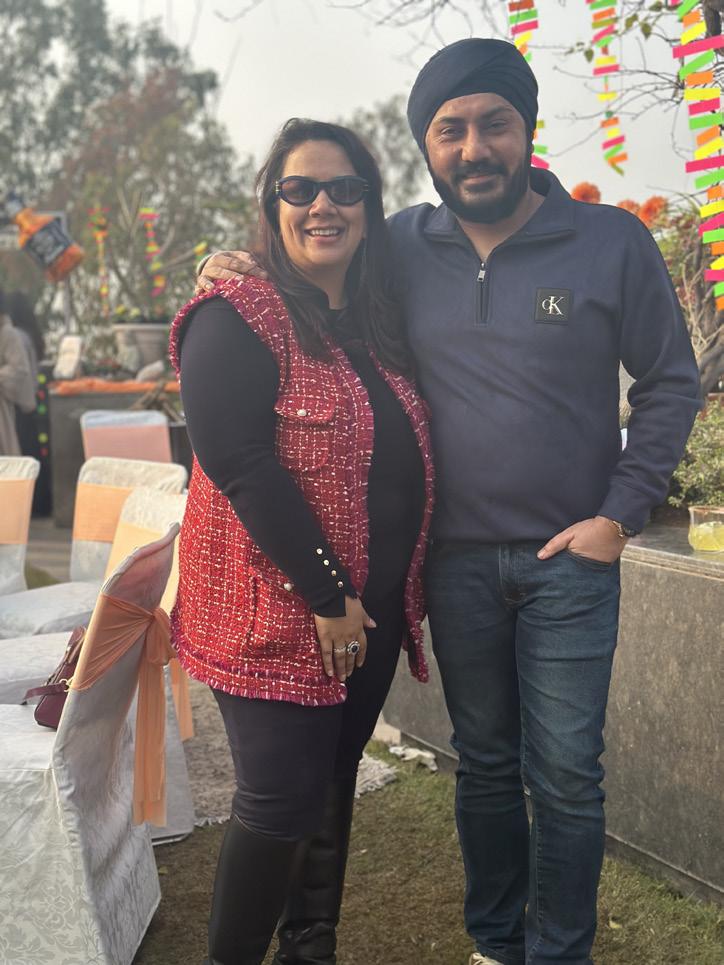



“My best friend is Sakshi Jai,” says Harmandeep. “She’s been my go-to person for life advice, including career and family issues.” Harmandeep shares how Sakshi’s encouragement helped him pursue his PR Express Entry to Canada. “When I was applying to Humber College, I was short of money, and Sakshi helped me fill the gap and never asked for it back.” “We don’t talk as much as we used to because she’s married and has a child, but we still share memes and chat every other month. When I visit India, we meet, and it feels like we’re back in the good old times. In fact, in 2018, I took nine days of unpaid leave to fly to Delhi just for her wedding. Couldn’t miss it,” he proudly elaborates.
• Friendships Don’t Have to Be Daily to Be Deep: Trust, not frequency, keeps bonds alive
• Let Silence Happen Without Fear: Pauses don’t mean distance; life just takes a breath
• Accept That You’re Both Changing: Make space for evolving versions of each other
• Re-entry Will Be Awkward, and That’s Okay: Old rhythms resurface with time
• Show Up When It Counts: Don’t miss big moments—breakups, health scares, anniversaries
• Don’t Archive the Friendship— Update It: Create new rituals, jokes, and memories



• Cross-Time-Zone Playlist: Send each other songs with notes for the week
• Mirror Days: Once a month, do the same activity separately like cook, watch, dress alike
• Time-Delayed Letters: Write letters to open on tough days
• Co-invest in Activities: Read a book or watch the same movie/ web-series to connect and discuss
• Friendship Receipts: Collect memories and share a year-end recap

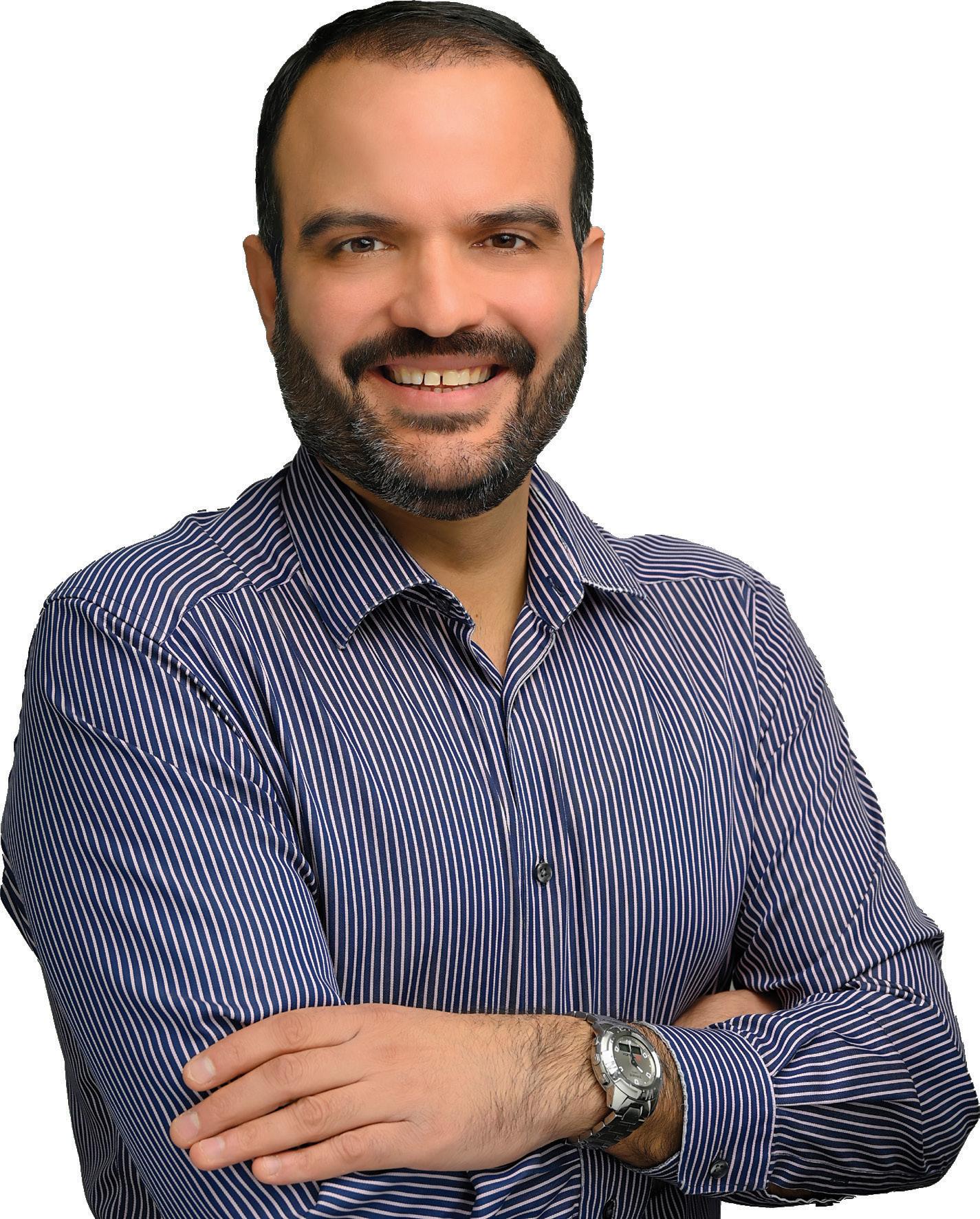











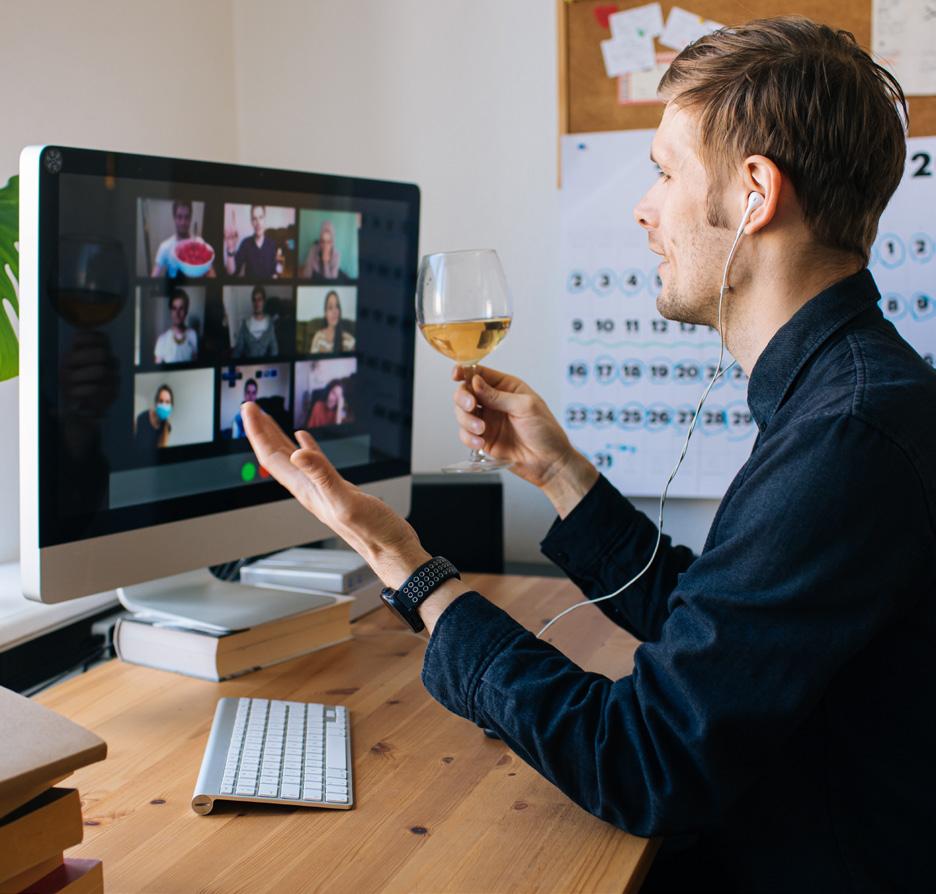
In a world that celebrates reinvention, these friendships ground you in memory and meaning. They keep you real in a place that often demands a curated version of you. They hold space for your contradictions, for being homesick and excited, overwhelmed and grateful, lost and hopeful.
And while oceans, languages, and time zones may separate you, these friendships remind you: love doesn’t need proximity but presence, consistency, and a little creativity.
Because in the end, no matter how far you go, real friendship is never out of reach. It stretches. It softens. It stays!

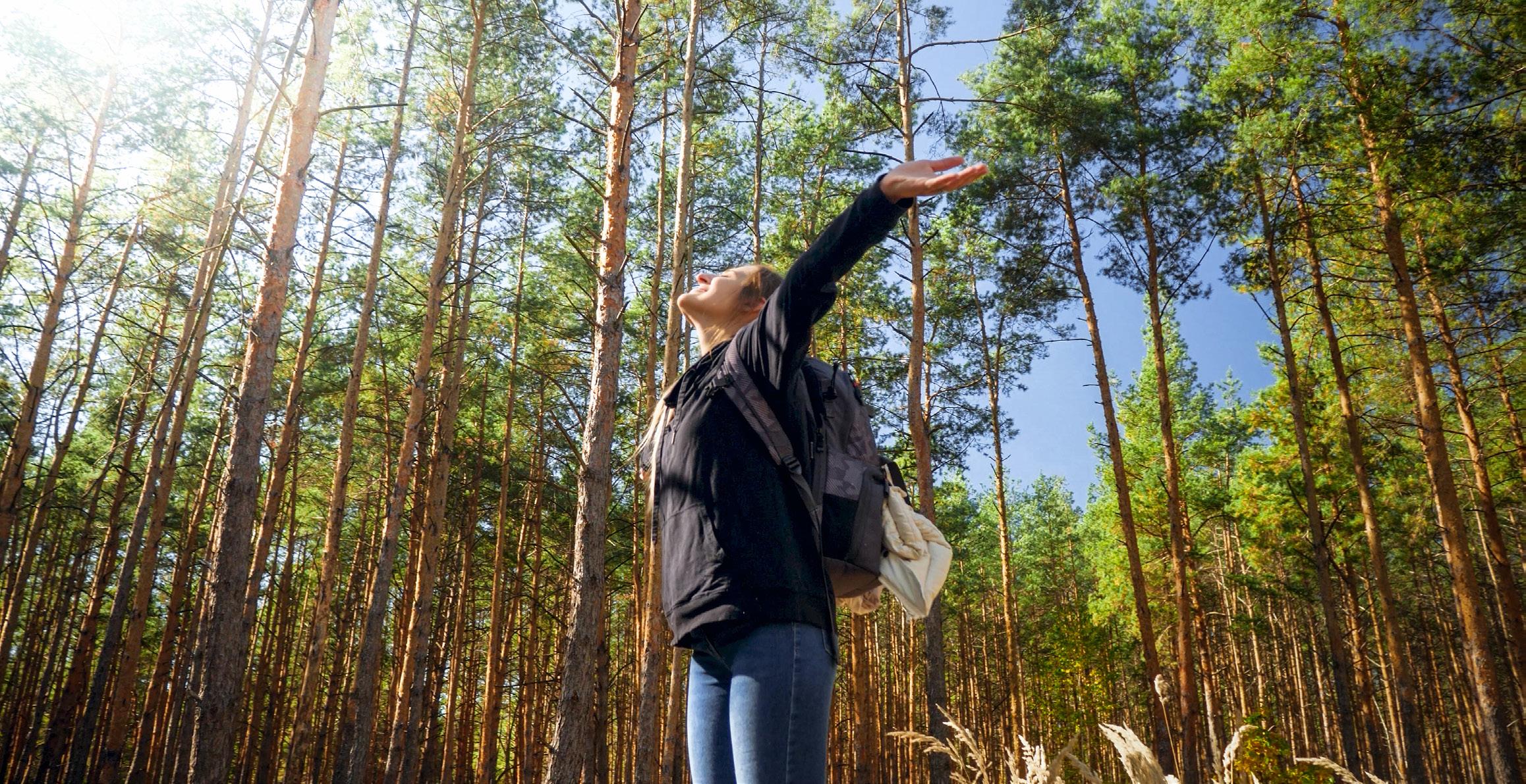
By Naina Grewal
In a world often driven by speed, screens, and constant demands, more people are rediscovering the power of simply slowing down and stepping into the natural world. One of the most profound ways people are doing this is through the practice of forest bathing, which is a mindful, sensory immersion in nature that invites us to be fully present with the world around us. Though it originated in Japan in the 1980s as Shinrin-yoku, forest bathing has taken root globally and continues to grow as a wellness practice with both scientific support and deep emotional resonance.

Forest bathing emphasizes the gifts we receive from nature. Nature and forest therapy extends it into a relational and embodied practice.“
Emily Pleasance MA, ExAT, Founder - Forest Bathing Club Canada
Emily Pleasance, MA, ExAT, nature & forest therapy guide, ecopsychology practitioner, and founder of the Forest Bathing Club Canada, explains that forest bathing is not just about the benefits we can extract from nature, but about cultivating a reciprocal relationship with the land, “Forest bathing emphasizes the gifts we receive from nature. Nature and forest therapy extends it into a relational and embodied practice. While we still receive support from the natural world, this approach also asks: how might we give back? How can we be in a meaningful relationship with the land, not just as users of its benefits, but as participants in a living, reciprocal connection?”
Pleasance’s journey into forest bathing began during the early days of the COVID-19 pandemic, a time when life slowed down and many sought new


ways to reconnect. What started as simple walks with friends and family quickly became a meaningful practice that supported both personal and community well-being. What makes the Forest Bathing Club unique, she explains, is its core belief that human health and planetary health are inseparable. The practice isn’t limited to remote forests; it can take place in city parks, backyards, or even from a window.
Ken Ouendag, founder of Nature Connected, certified forest therapy guide, and trainer with the Association of Nature and Forest Therapy, echoes this point, noting that forest bathing is fully accessible to urban dwellers. “Whether a tree is in the middle of a park or deep in the forest, people can still connect with it,” he reveals. He often emphasizes that forest bathing is about slowing down, awakening the senses, and simply being with the forest. “We're literally bathing in the atmosphere of the forest,” Ouendag notes. “Trees emit phytoncides—essential oils that they use for protection—and it turns out that humans benefit from bathing in these phytoncides, too. They support our immune system.”
Pleasance also emphasizes that forest bathing is not just about what we gain, such as stress relief and improved focus, but about fostering genuine connection with the natural world. Participants often share that they feel grounded, emotionally lighter, and reconnected with themselves and their surroundings after a walk. “Some have shared that it was the first time they truly slowed down in years,” she highlights. However, not all experiences are immediately peaceful. Sometimes, slowing down brings restlessness, grief, or even anger. “That’s all part of the practice,” Pleasance reassures.
Ouendag notes that participants frequently describe the practice as “effortless” and more approachable than traditional meditation. “Common words I hear are grounded, calm, relaxed, alive, and supported,” he observes. Forest bathing, as he guides it, can feel serious or playful, quiet or
communal. His advice to beginners is to seek out a certified guide who can offer invitations to explore nature in new ways and create a safe, supportive environment.
For those starting their practice, Pleasance encourages beginning with small, accessible steps: “Go to a natural space you feel comfortable in and simply notice. Engage your senses one by one: What do you hear? What do you see moving? Can you feel the sensation of air on your skin? Can you smell any scents flowing through the wind? It is useful to close your eyes and limit the amount of information so that you can get very tuned to one sense at a time. There’s no wrong way.”
Registered Clinical Counsellor Kimi Combow also recommends the practice of walking in nature as a simple but powerful form of self-care. “I often encourage my clients to walk in nature as part of their self-care,” she reflects. “I feel that walking in itself is therapeu-

""Trees emit phytoncides—essential oils that they use for protection— and it turns out that humans benefit from bathing in these phytoncides, too. They support our immune system.“
Ken Ouendag







"“I often encourage my clients to walk in nature as part of their self-care, I feel that walking in itself is therapeutic, and nature can have a similar effect.”
Kimi Combow
Registered Clinical Counsellor
"tic, and nature can have a similar effect. Both can help us feel more present and grounded. I personally love walking by the ocean or hiking in a forest.” Combow’s approach reinforces the idea that even everyday walks can carry profound emotional benefits.
Pleasance believes that forest bathing offers not only personal restoration but a collective response to the ecological crises we face: “We can’t care for what we don’t love, and we can’t love what we don’t feel connected to.” Forest bathing, she argues, is more than a wellness trend. Rather, it is a radical, embodied act of choosing presence in the face of disconnection and loss. “When you relax your body, move through stress, and connect with the living world, you’re engaging in a kind of internal activism,” she points out.
Undoubtedly, the practice of forest bathing reminds us that nature is not a distant retreat, but a living, breathing partner in our everyday lives.

By Dr. Shimi Kang and Manjot Mann

We have reached a critical juncture in parenting; the world feels like it’s on fire, and we don’t know how much of this we should share with our children. Whether it’s discussing war, politics, safe and ethical use of AI, or climate change, there is no shortage of topics for us to navigate with our children. So, where is the line? How do we differentiate between teaching our kids to be critical thinkers who are resilient in the face of adversity, while still allowing them to hold on to their innocence? Here are a few things to consider as we delve into these conversations:
Most parents (myself included) spend a considerable amount of time doom-scrolling on Instagram, TikTok, or Facebook. We are inundated with bad news all the time, thanks to the
constant news cycle available on social media. As a result, we don’t always have the capacity for such conversations with our kids. Don’t discuss climate change or politics without checking in with yourself first. Have you eaten? Are you distracted? Can you give this conversation the attention it deserves? If you don't, that's okay, save the discussion for another day. We can’t foster resilience in our children if we don’t model that behavior first. Resilience comes with being emotionally regulated enough to have these crucial discussions, and it’s important to know when you have the capacity and when you simply don’t.


Dr. Shimi Kang MD, FRCPC Mental Wealth, Addiction & Motivation Specialist, Global Speaker, Media Expert & #1 Best-selling Author, Clinical Associate Professor, UBC
Dr. Shimi Kang is an award-winning Harvard-trained doctor, researcher, and keynote speaker specializing in the science of motivation. She founded Future-Ready Minds, is the host of ‘Mental Wealth with Dr. Shimi Kang’ on YouTube, and is the author of the #1 national bestselling parenting book ‘The Dolphin Parent.’ Her work focuses on mental health, addiction, and brain-related conditions, offering assessments and treatments like psychedelic-assisted therapy and more.







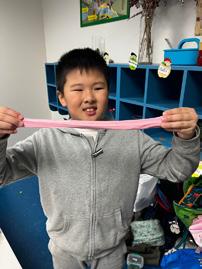
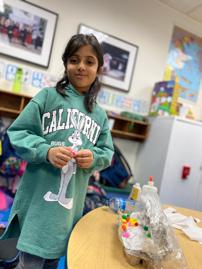


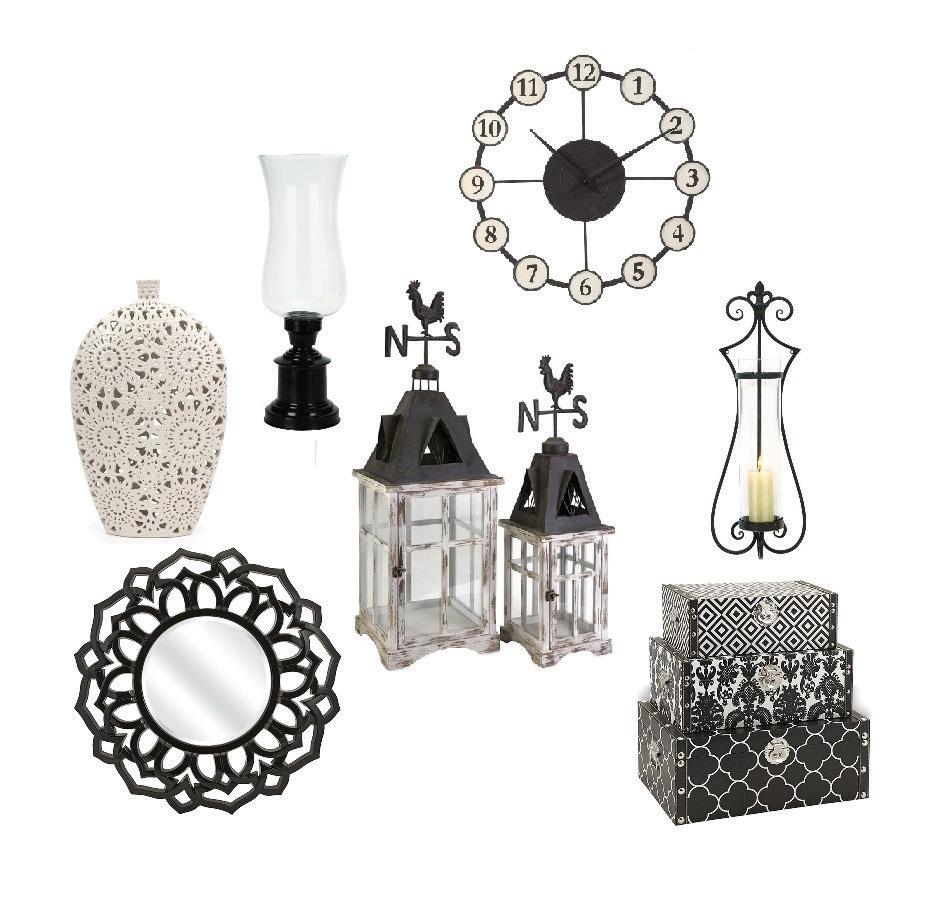








As we navigate a changing world, parents often express discomfort around not knowing enough. How much do we know about climate change? Probably only what we read in the newspaper. Do we fully understand AI and the pros and cons of using smart technology? No, but we know ChatGPT is here to stay and changing our lives. When we feel overwhelmed by a constantly changing world, we can use it as an opportunity to learn with our children. Ask your child to research all the cons of AI while you research the pros, and then have a family discussion. Climate change might feel like too big a topic to tackle, so start taking your seven-year-old to the bottle depot to explain the importance of recycling. Start small, start where you are, and grow together. You don’t need to know everything, and your child needs to see you be curious.
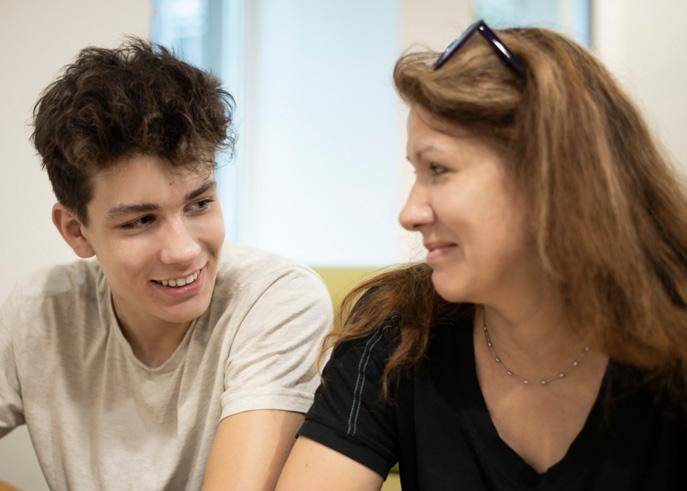
As you choose activities for your child, look for extracurriculars that align with your concerns and goals. One such program is Dr. Shimi Kang’s Future-Ready Minds Leadership Camps for ages 6-13-year-olds. Sending your child to Future Ready Minds camps helps them become strong and ready for today's fast-changing world. At camp, kids learn important life skills like managing feelings, solving problems, and working well with others. They practice emotional skills that help them handle stress and understand their feelings better.
At Future-Ready Minds, campers explore technology safely, learning how to use it in healthy and balanced ways. Mistakes are seen as chances to learn and grow, helping children stay positive even when facing challenges. These important skills help kids grow into strong, capable, and resilient people who can succeed in school and life, no matter what challenges the 21st century brings. Parenting is hard, and a constantly changing world doesn’t make things easier. However, if you’re reading this, then you’re already doing a great job!

Counsellor, MA, RCC
Compassionate Journey
Counselling
Manjot Mann is a Registered Clinical Counsellor with a Masters in Counselling Psychology from Yorkville University. She works with adults and families from various backgrounds, helping them navigate their past experiences while working towards a vibrant future. Manjot is passionate about supporting her clients as they uncover their strengths and potential. In addition to her counseling practice, she offers valuable advice through her successful column, ‘Ask Manjot,’ where she discusses topics around mental health and navigating cultural expectations, boundaries, and more. You can find Manjot on Instagram at @askmanjot.


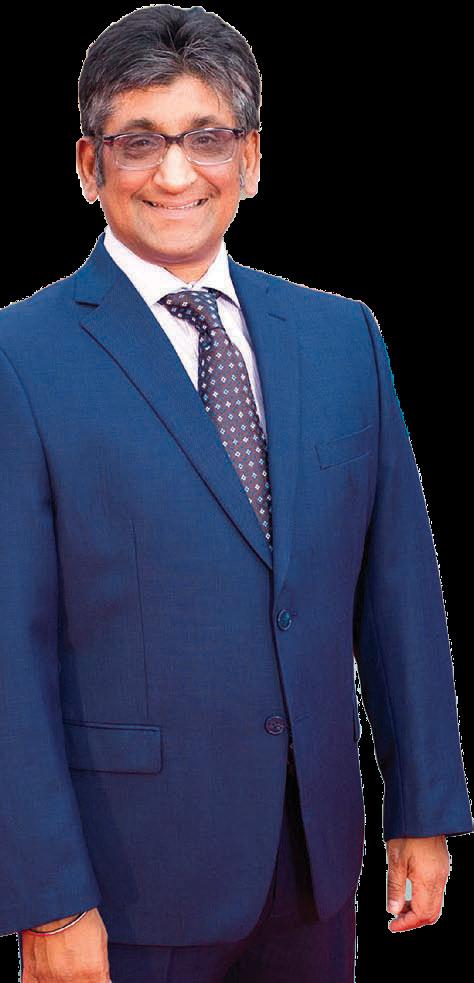
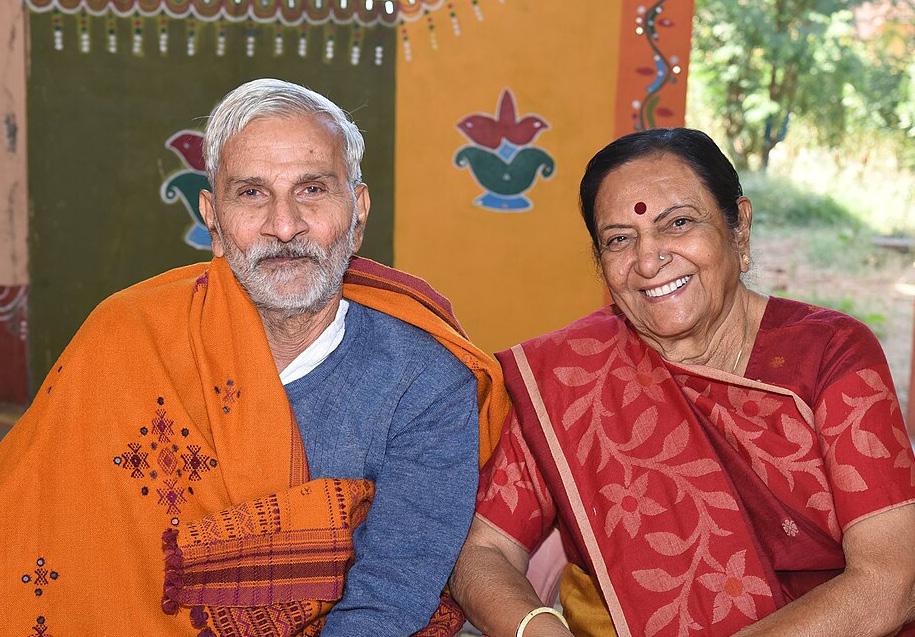
By Mrinalini Sundar
At 80, most people are winding down. Suresh Soni is still building. The 2024 Padma Shri awardee has dedicated over five decades of his life to those society has forgotten: leprosy patients, people with mental disabilities, the blind, and children born into suffering. But more than the sheer scale of his impact, it’s the unwavering humanity behind his mission that makes Soni’s story extraordinary.


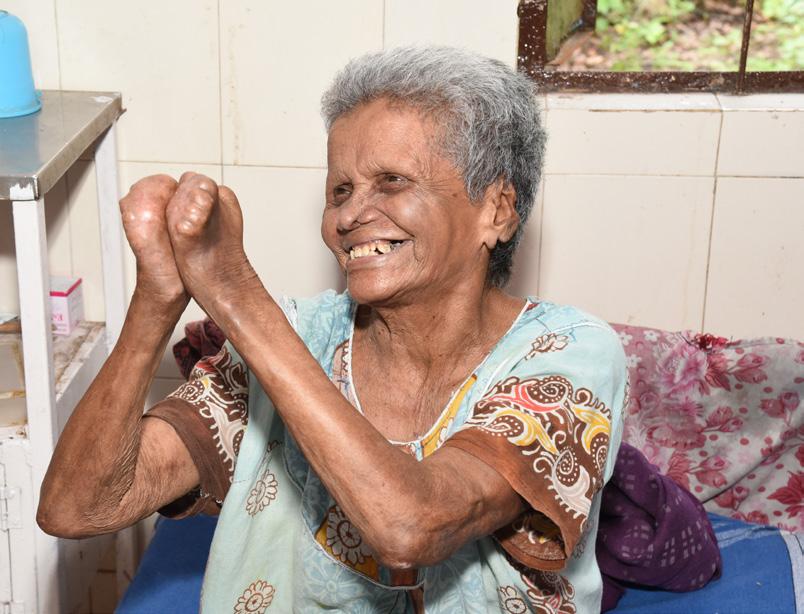

" We don’t just treat diseases here. We treat isolation. People are not untouchables here. They are our family.”
Suresh Soni
Founder - Sahyog Kushtha Yagna Trust
Born in 1944 in Gujarat, Soni was a gifted student. He earned a master's degree in mathematics from MS University of Baroda, graduating first class with distinction and setting a record that remains unbroken. He began his professional life as a lecturer at the university, positioned for a secure and prestigious academic future. But quiet restlessness gnawed at him. In the slums of Baroda, he saw people with leprosy begging, disfigured and discarded, denied the most basic dignity. And he couldn’t look away. “I realized I couldn’t just lecture students about equations while ignoring people suffering on the streets,” Soni recalls. “Leprosy wasn’t just a medical issue. It was a human one.”
In 1970, he walked away from his career, comfort, and status. He began working directly with leprosy patients—giving them medicines, dressing wounds, and helping them leave behind begging through vocational training. Eventually, he helped establish the Shram Mandir Trust, a unique rehabilitation center for leprosy beggars. When ideological differences forced him to part ways with the trust in 1988, Soni did what few would: he started again from scratch. “At that time, I had no money, no land, no institutional support. Just the goodwill of people who knew the work I had done,” he said.
That trust—named Sahyog Kushtha Yagna Trust—was founded in June 1988. A local farmer offered him 31 acres of land with a tube well, completely free of charge. On that bare patch of earth in Sabarkantha district,
Soni began a new experiment in compassion. Within months, he welcomed 20 leprosy patients and six children to the site. Over the years, that humble beginning evolved into Sahyog Village: a vibrant residential campus now home to over 1,000 people, including leprosy patients, mentally challenged adults, people with schizophrenia, disabled persons, and children of destitute parents. There is also a 45-bed hospital on-site, schools up to the eighth standard, vocational training, cultural activities, and communal prayers. The campus is powered by solar energy, has an election booth, a crematorium, and a temple that features the icons of all major world religions. This isn’t just a charitable shelter—it’s a model of inclusive living. Residents work in various roles—spinning khadi, farming, helping in the kitchen, doing office work, or caring for others in need. “We don’t just treat diseases here. We treat isolation,” Soni said. “People are not untouchables here. They are our family.” On Thursdays, the community gathers to sing songs. Every evening, lamps are lit outside every home to offer prayers, not just for their own peace, but for those who have helped and supported Sahyog. “We light a lamp for the people who helped us, those who remember us, and those we’ve yet to serve,” he said. “It keeps us grounded in gratitude.”
Despite running an operation that requires over ₹5.25 crores annually, Sahyog does not accept foreign aid or government maintenance grants. “Since 2018, we decided not to take even a rupee of state maintenance grants. If the work is sincere, support will come,” he
said. That support comes from everyday donors, people moved by the purpose and purity of the work.
Soni’s legacy is also one of empowerment. Under his leadership, Sahyog helped organize historic reconstructive surgery camps across Gujarat. In collaboration with the Gujarat government and recognized by the Central Government, the trust facilitated over 5,200 surgeries—many during backto-back camps that lasted hundreds of hours. These initiatives earned national acclaim and personal appreciation from Dr. A.P.J. Abdul Kalam. But for Soni, the real reward lies elsewhere. “There’s a boy here who came with his leprosy-afflicted mother. Today, he’s an engineer. Another girl is now a government officer. These are the real Padma awards for me,” he said with quiet pride.
The Padma Shri recognition in 2024 came as a surprise. “When I got the call, I was shocked,” he shared. “I never thought someone working silently in a
small village would be recognized by the Government of India.” And yet, nothing about the award has changed his day-to-day life. He continues to live simply on the campus, helping new residents settle in, keeping meticulous track of donations, and guiding staff. “Work goes on. We had new admissions this week. People still need help,” he said plainly.
In a world that often celebrates visibility over value, Suresh Soni’s life is a powerful countercurrent. It is a life of quiet revolution—of choosing service over success, people over prestige. His is the kind of legacy that can’t be built overnight, only brick by brick, prayer by prayer, and life by life.
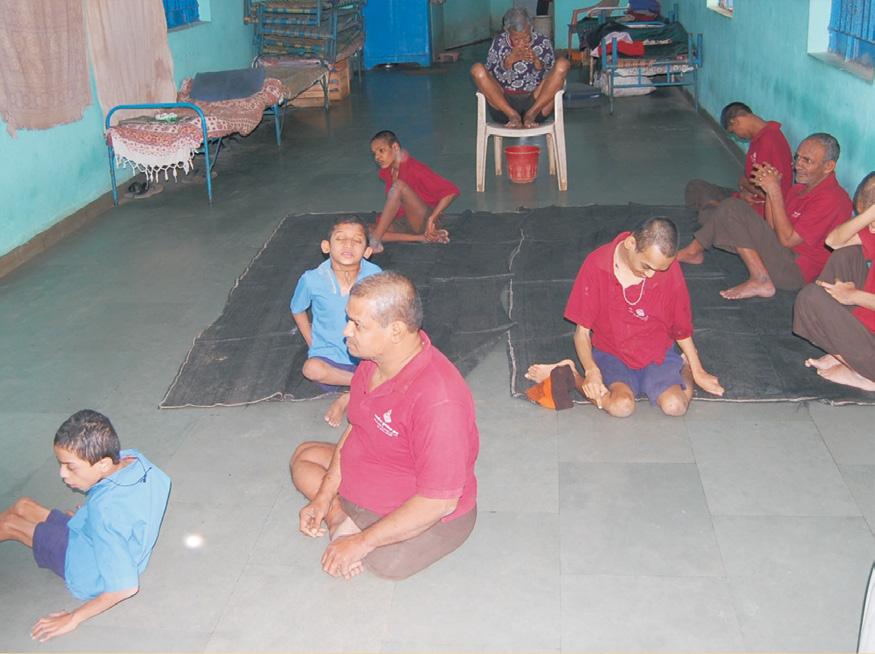


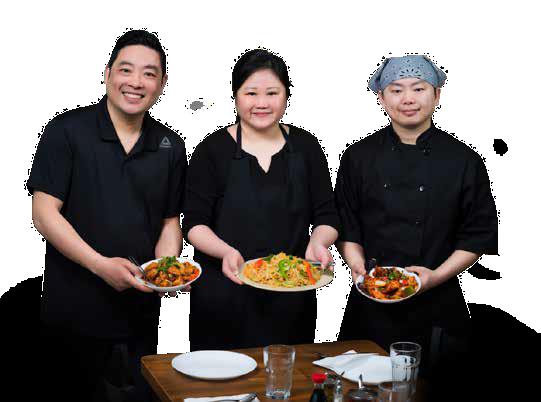

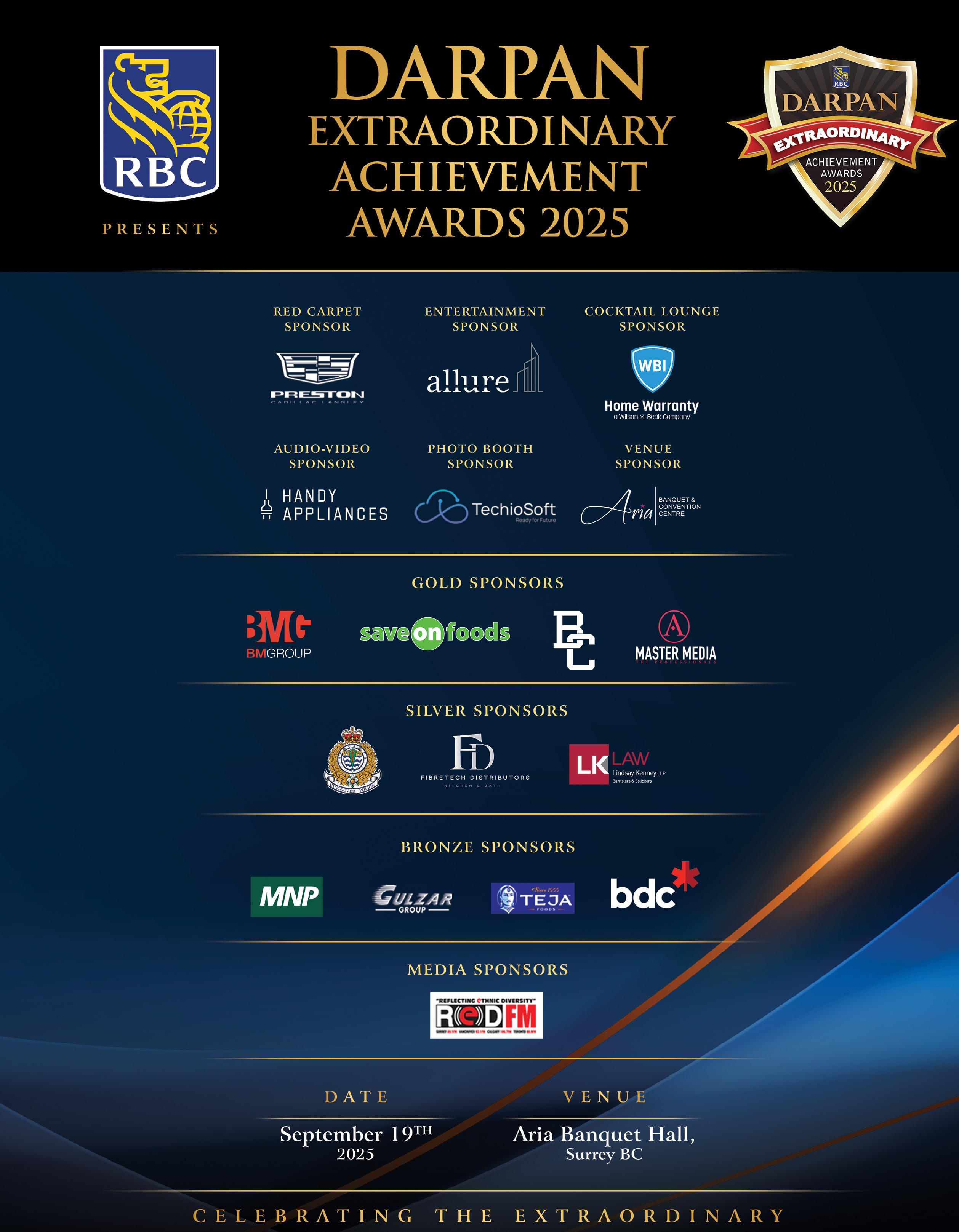

In a world constantly juggling productivity, mental fatigue, and a flood of wellness trends, one community-driven initiative is cutting through the noise. Midway through 2025, “The 30-Day Wellness Odyssey” has emerged as a cultural reset, a month-long challenge that goes far beyond burpees and salads. It’s a holistic wellness experience designed for individuals who want to feel stronger, think clearly, and stay connected, all in one journey.
The Odyssey isn’t just another calendar-based bootcamp It’s a reimagination of what it means to be truly well, combining physical activity, mental clarity, and community support. Designed for people seeking balance rather than burnout, this challenge integrates daily fitness, mindfulness practices, and interactive group engagement. It offers participants the opportunity to build sustainable habits and feel good doing it.
In the aftermath of the global health crisis, the concept of wellness has fundamentally evolved. People no longer view health through a purely physical lens. Instead, there’s a growing demand
By Mrinalini Sundar

for routines that integrate the mind and body, supported by technology and real human connection. The 30-Day Wellness Odyssey taps directly into this shift, offering a curated daily experience that’s structured but never rigid.
Each day unfolds with a new focus, combining dynamic physical training with calming mental health practices. This is wellness that adapts to real life, whether you're a working parent, a student, or simply someone looking to reset midyear.
What makes the Odyssey’s movement philosophy stand out is its variety and practicality. Instead of promoting a type of exercise, the challenge rotates through a blend of training styles to create a well-rounded foundation. High-intensity interval training is balanced with restorative yoga. Functional fitness—think squatting, lifting, stretching—is built into the weekly flow to simulate and improve everyday activities. Pilates and mobility sessions are layered to improve posture and prevent injuries.
One of the most talked-about components of the program is the “Functional Fitness Gauntlet.” During
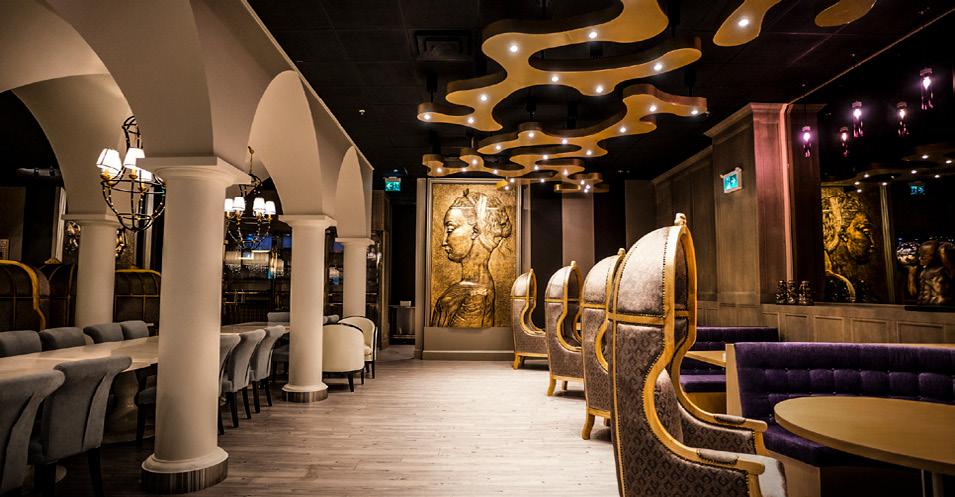
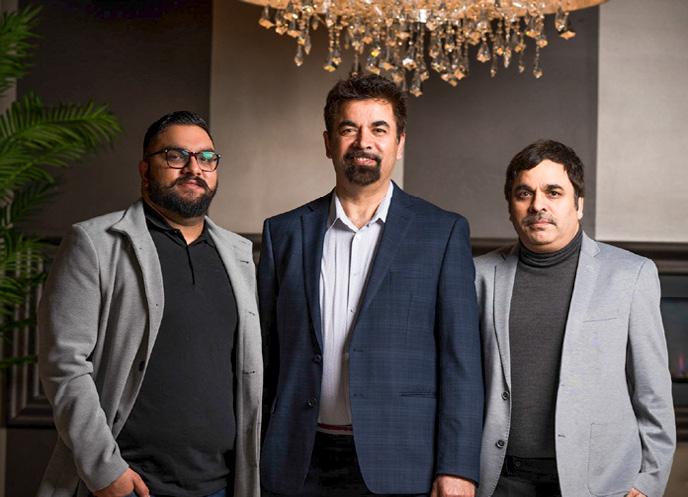
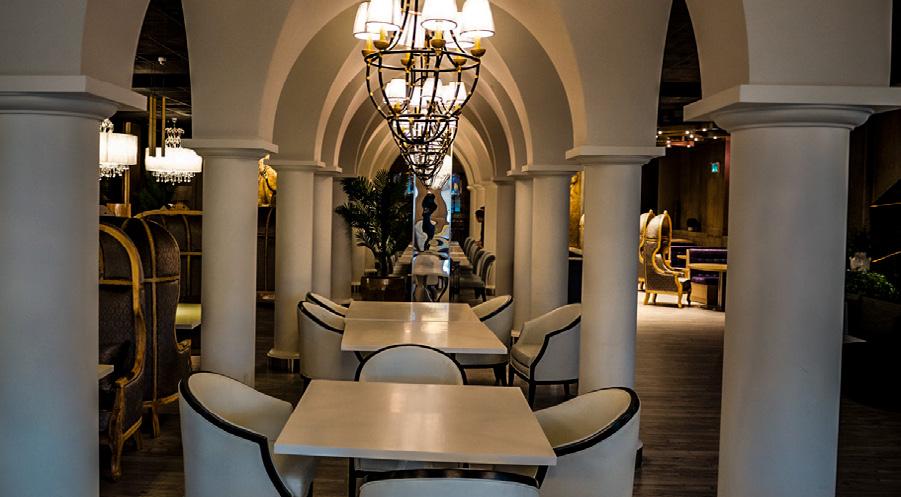

this themed week, participants tackle exercises inspired by daily life—carrying groceries, taking stairs, lifting safely, and managing physical tasks with confidence. It's a reminder that fitness isn’t just about performance in the gym; it’s about improving the way we move through the world.
While the physical aspect of the Odyssey is strong, the inclusion of daily mindfulness sets it apart. Known as the “Mind-Body Reset,” this part of the challenge invites participants to spend a few minutes each day focused inward, through guided meditation, reflection prompts, or light journaling.

underscores that wellness doesn’t stop at the gym door.
The idea isn’t to create another task on the to-do list. It’s to build a moment of stillness into each day, helping participants manage stress, reframe challenges, and cultivate a more intentional mindset. Backed by research from institutions like Harvard, this approach
At its core, the 30-Day Wellness Odyssey thrives because of its community. Unlike many solo fitness programs, this challenge is built to
be shared. Participants are encouraged to connect with others through a dedicated online platform.
Each week features fun, thematic mini-challenges like “Plank & Praise,” where users perform timed planks while giving shoutouts to fellow participants. Another popular initiative, “Step Into 2025,” gamifies walking goals by assigning virtual destinations to step counts, turning 10,000 steps into a walk to Machu Picchu or the Pyramids of Giza. This sense of shared progress helps build momentum and keeps motivation high.
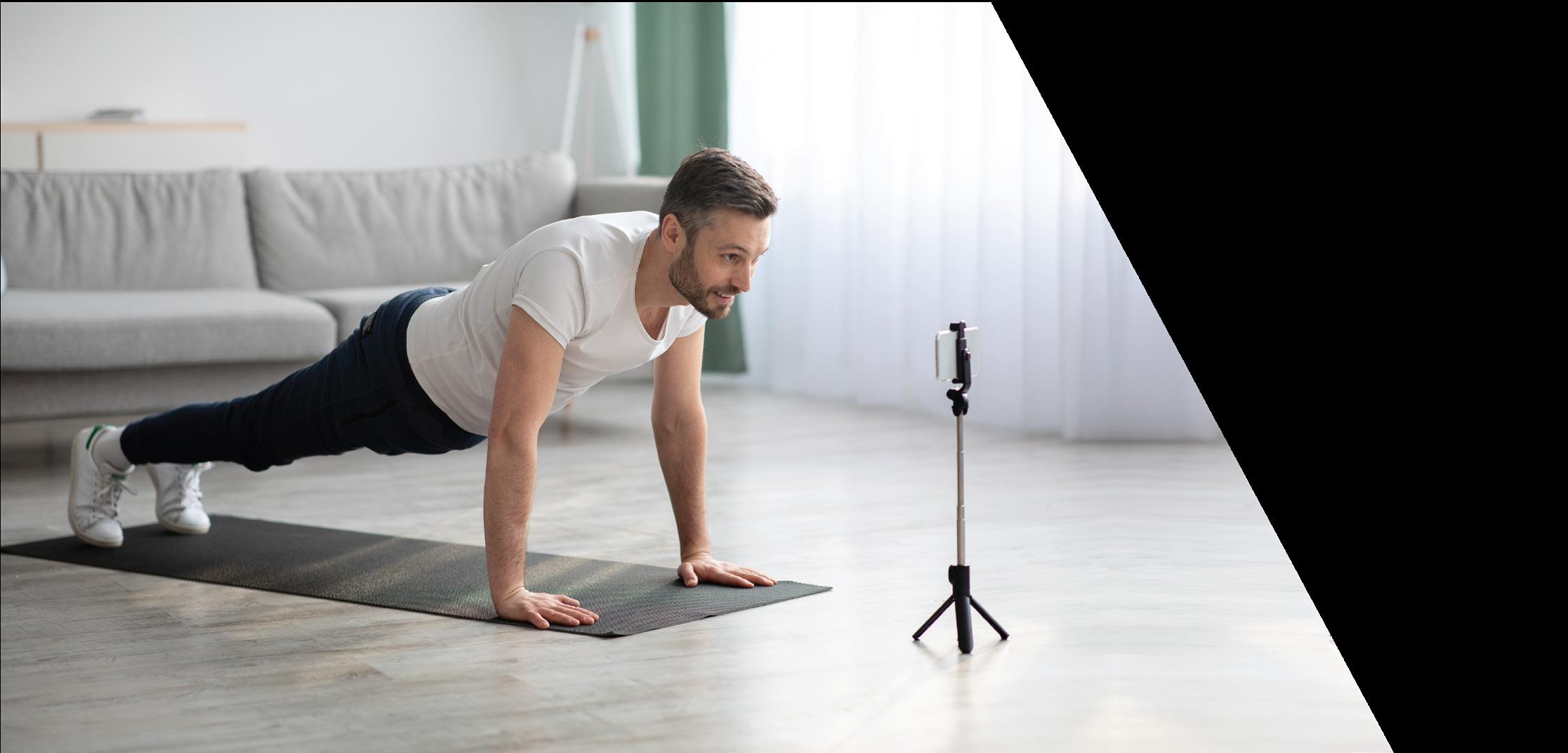


No wellness journey is complete without nutrition, and the Odyssey takes a refreshingly inclusive approach with its “30-Day Nutrition Sprint.” Rather than prescribed rigid meal plans, the challenge focuses on gentle behavioral shifts that add value. Participants might aim to include a leafy green with each meal one week, then try cooking a new whole-food recipe the next. Hydration reminders and mindful eating practices round out the guidance.
The result is a nutritional experience that feels empowering, not punishing. By focusing on addition over restriction, participants build habits that stick and improve energy, digestion, and mood along the way.
Tech That Keeps You Going
Behind the scenes, a custom-built app powers the entire challenge. Easy to use and beautifully designed, the app
delivers daily workout videos, mindfulness cues, and journaling spaces. It tracks progress in real time and awards digital badges for milestones like workout streaks, hydration goals, or group participation.
Perhaps, most importantly, the app integrates personal data in a way that feels motivating, not invasive. Participants can monitor their trends over time and adjust their pace, with nudges and notifications that feel supportive, not stressful.
Who Is It For and Why It Works
The Odyssey is open to everyone, regardless of age, fitness level, or schedule. Its flexible structure makes it especially appealing to busy professionals, parents, and anyone who’s struggled to maintain a rigid fitness plan in the past. There’s no special equipment required, no gym membership needed, just a willingness to show up, day by day.
Whether you’re aiming to reset, rebuild, or simply reconnect with your well-being, this challenge offers a map. And the journey? It’s one where you won’t be walking alone.


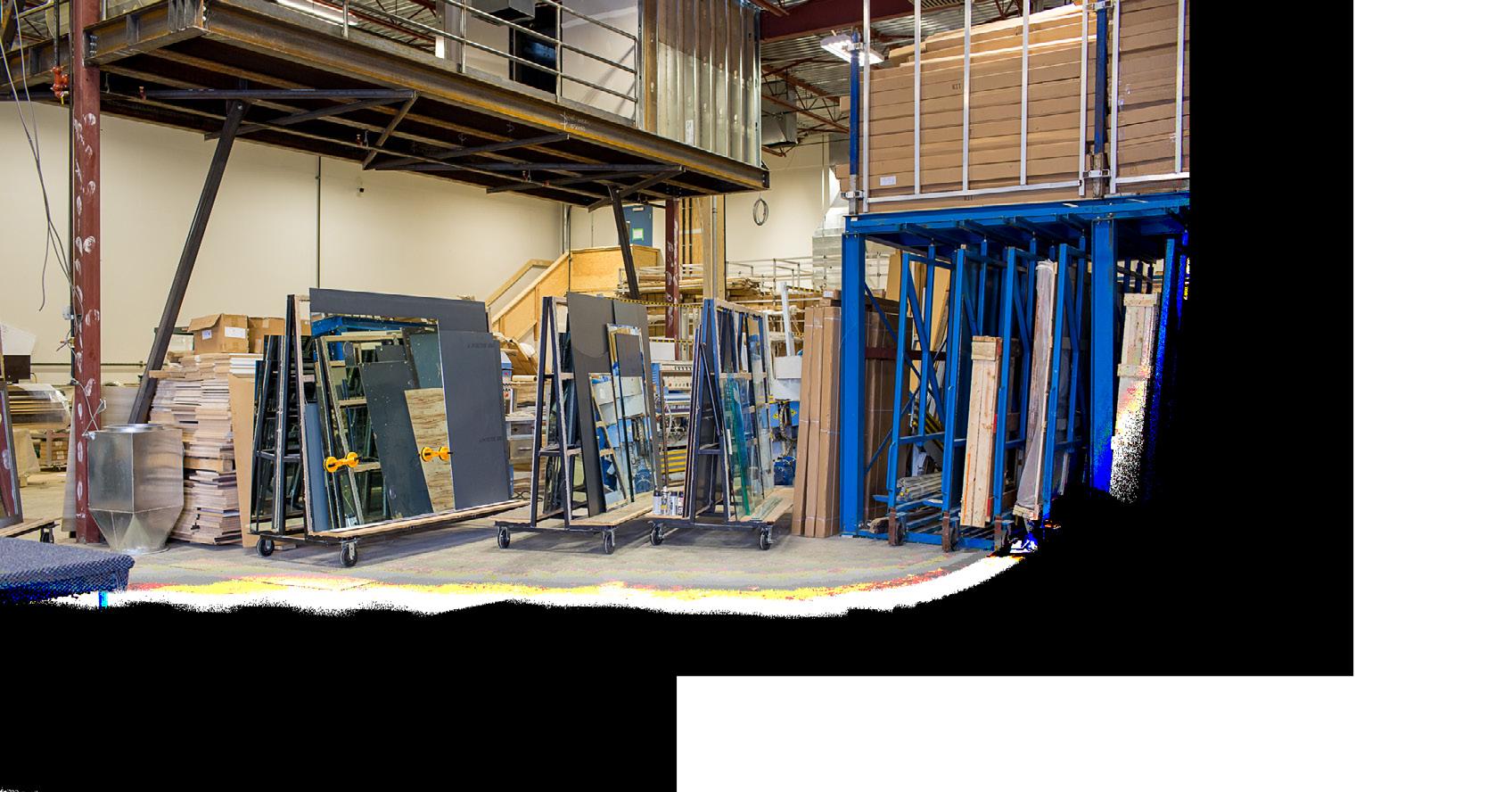







As summer arrives and Canadians across the country flock outdoors to enjoy the much-awaited sunshine, the importance of sun safety takes center stage. That said, despite years of public awareness campaigns, sunscreen remains surrounded by myths and misconceptions. Undoubtedly, sun protection is essential to staying healthy year-round, and understanding the facts can help everyone make smarter choices for their skin.
Myth #1:
Sunscreen is only needed on sunny days or at the beach.
One of the most persistent misconceptions is that sunscreen is only necessary on sunny days, tropical vacations, or when spending long hours outdoors. In reality, harmful UV rays are always present, regardless of the weather or season. "Most people believe sunscreen is only necessary to apply on sunny days, at the beach, or in tropical places, but UV rays can penetrate clouds and windows year-round," says Garica Pataria, esthetician and owner of Sculpt Skin Bar. Even indoors, UV rays can filter through windows and contribute to skin damage over time. Consistent daily
By Naina Grewal
application is critical to protecting your skin from premature aging and reducing the risk of skin cancer.

Most people believe sunscreen is only necessary to apply on sunny days, at the beach, but UV rays can penetrate clouds and windows year-round.
Garica Pataria
Esthetician and Owner, Sculpt Skin Bar
Myth #2:
People with darker skin tones don’t need sunscreen.
A dangerous myth is that people with darker skin tones are naturally protected from sun damage and don’t require sunscreen. While it's true that higher melanin levels provide some natural defense, the protection is not complete. Corrective Skin Specialist Sarah Kazimi , echoes this point, emphasizing that darker skin tones can still experience hyperpigmentation, sunspots, and even skin cancer. "All skin types are at risk of sun damage and hyperpigmentation," she says. Sunscreen is a universal necessity, regardless of skin tone, to maintain healthy, even-toned skin and minimize long-term damage.
Myth #3:
Sunscreen entirely prevents you from tanning.
Pataria highlights a common misconception she hears frequently in her practice: "Funnily, many people believe sunscreen blocks our skin from getting ‘darker’, which is not true but always a good conversation opener." Sunscreen

helps prevent burning and excessive damage, but does not completely block all tanning, especially if sun exposure is prolonged. The goal of sunscreen is not to eliminate tanning in totality, but to protect the skin from harmful UV rays that accelerate aging and increase cancer risk.
Chemical vs. Mineral Sunscreens: What’s the Difference?
When it comes to choosing sunscreen, many people are confused by the variety of options in the market, particularly the difference between chemical and mineral formulas. Both types are effective when used properly, but work in different ways. "Chemical sunscreens work to absorb UV rays, while mineral ones, like zinc oxide or titanium dioxide, sit on the skin’s surface and reflect UV rays off," Pataria explains. Kazimi adds, "Mineral sunscreens are often preferred for sensitive skin and are less likely to irritate, while chemical sunscreens tend to be more lightweight and invisible on the skin." This makes chemical sunscreens an attractive option for individuals with deeper skin tones who want to avoid a noticeable white cast.
Sun Safety Tips: Consistency is Key
Even the best sunscreen won’t be effective if it’s not applied correctly and consistently. "Consistency is key! Sunscreen only works if you apply enough and reapply every two hours when outdoors. Also, remember that SPF in makeup or moisturizers alone usually isn't enough," Pataria stresses. She further reminds her clients to apply sunscreen to often-forgotten areas such as the ears, lips, and tops of feet.
Kazimi reinforces the importance of reapplication, especially when spending time outdoors or sweating: "Reapplication is just as important as applying in the first place, especially if you're outdoors or sweating." She highlights that sunscreen is your best

defense against premature aging, uneven skin tone, and skin cancer, making it an essential part of everyone’s daily routine.
Kazimi offers an additional pro tip for maximizing sun protection: "Always apply your vitamin C serum in the morning, followed by moisturizer and SPF. Vitamin C is a powerful antioxidant that protects the skin from environmental damage like UV rays and pollution." She explains that vitamin C enhances sunscreen’s effectiveness, brightens the skin, and helps prevent signs of aging.

What to Look for in a Sunscreen
Choosing the right sunscreen can be overwhelming, but both Pataria and
Always apply your vitamin C serum in the morning, followed by moisturizer and SPF.
Vitamin C is a powerful antioxidant that protects the skin from environmental damage like UV rays and pollution.
Sarah Kazimi Corrective Skin Specialist
Kazimi emphasize a few key factors:
1. Always select a broad-spectrum sunscreen that protects against both UVA and UVB rays, with an SPF of at least 30.
2. Look for a formula that blends well without leaving a white cast. Chemical or hybrid sunscreens usually blend in better. Gel, serum, or tinted options are often better for darker skin.
3. Look for sunscreens that contain additional skincare ingredients like niacinamide or hyaluronic acid, which offer added hydration and anti-aging benefits.
The Bottom Line: Daily Sunscreen is Non-Negotiable
Sun safety isn’t just a summer concern, but a year-round commitment. By understanding the facts, debunking myths, and building good habits, we can all enjoy the sun safely while keeping our skin healthy for years to come!


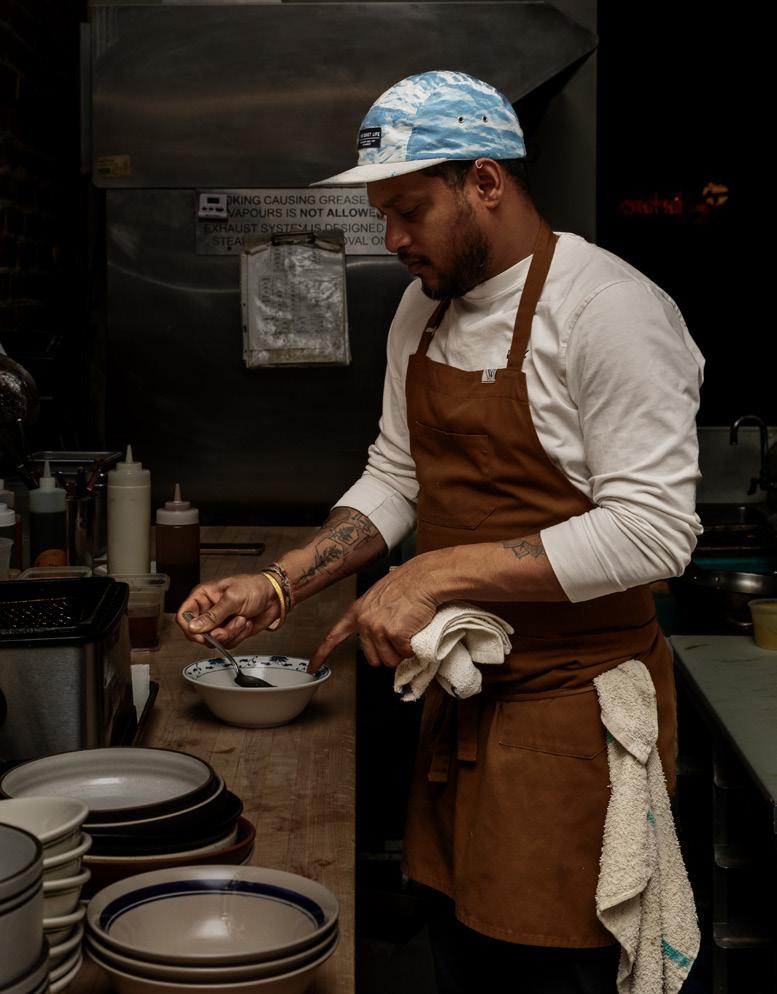
Chef Tushar Tondvalkar brings over a decade of culinary experience, having staged at the Michelin-acclaimed restaurants Gaggan and Gaa in Bangkok, and worked in several of Vancouver’s well-known kitchens, including The Fish House in Stanley Park, Bauhaus, Blue Water Cafe, and as head chef at Mumbai Local. Over the past year, you may have experienced Chef Tushar’s cooking at pop-ups across the city or through his brand, The Indian Pantry, known for its simmering sauces and spice blends. Owning a restaurant has always been his dream, and now Chef Tushar is ready to welcome you into his culinary world with Kavita—his first restaurant, named after his mother, opening this fall.
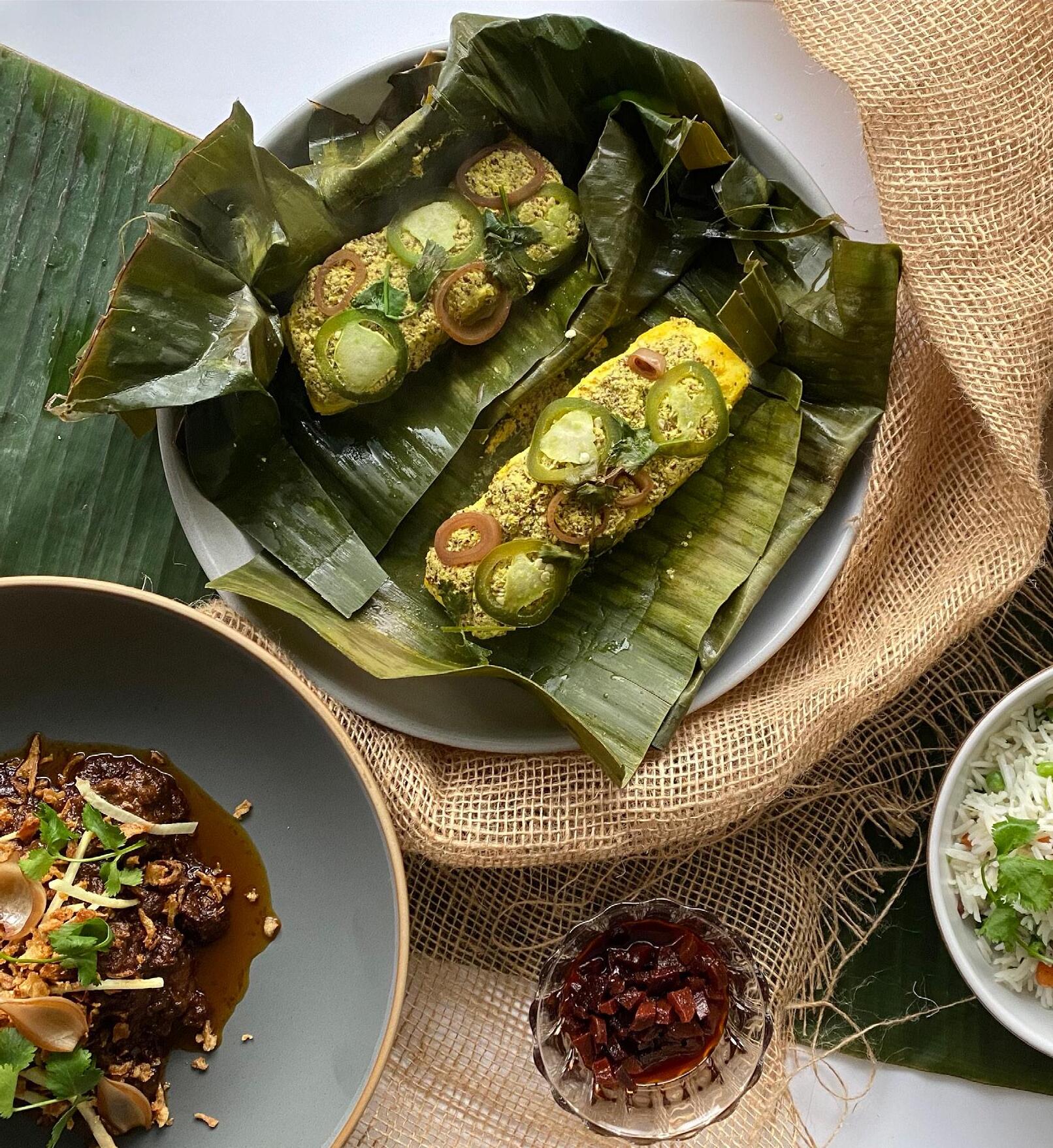
Yield: 850 gms (80 gms per portion)
• 100 gms desiccated coconut
• 150 gms cilantro
• 75 gms mint leaves
• 10 gms green chilies
• 30 gms garlic
• 20 gms ginger
• Juice and zest of 1 lemon
• 10 gms salt
• 250 ml water
• Wash all the greens and keep them aside.
• Add all the ingredients to a blender and blend at high speed. Make sure all the ingredients are ground into a smooth paste.
• Marinate any fish in the paste, approximately 80 g of paste for a 4 oz fish fillet.
• Wrap the fish and herb paste in a banana leaf and steam it for 10 minutes or until the fish is cooked.

Yield: 16 portions
• 340 gms mawa (khoa)
• 600 ml milk
• 6 whole eggs
• 2 teaspoons vanilla extract
• 600 gms all-purpose flour
• 2 teaspoons salt
• 4 teaspoons baking powder
• 100 gms butter (room temperature)
• 5 gms cardamom powder
• 450 gms sugar
• Preheat the oven to 325°F.
• Add mawa (khoa), sugar, and butter in a bowl and beat with a hand blender until it's pale and fluffy.
• Mix flour, cardamom powder, and baking powder and keep aside.
• Add all the eggs to the mawa mixture and mix well with a whisk.
• Add ⅓ of the flour to the mawa mixture with ⅓ of the milk, and mix well.
• Add the remaining ingredients, mix well, and make sure there are no lumps in the batter.
• Divide the batter into 16 portions.
• Bake it for 20-25 minutes or poke a toothpick to check if the cake is ready.











Etasha by Asha Jain’s Banno is a dreamy collection that blends heritage craft with contemporary elegance and emotional storytelling.

By Shweta Kulkarni

Flowy crinkled metallics, intricate zardozi, and mirrorwork set a dreamy, almost surreal tone for Etasha by Asha Jain’s latest collection, Banno. Known for being a luxurious oasis where tradition daringly meets contemporary elegance, Etasha is not just a brand about fashion, but it is a living canvas of reimagined heritage. Founded by homemaker-turned-couturier Asha Jain, Etasha, today, has become synonymous with luxury and artistry, dressing women across generations, including celebrities like Shilpa Shetty, Raveena Tandon, Sunny Leone, Diana Penty, Gauahar Khan, Divya Khosla, Hina Khan, and many more.

Every ensemble at Etasha celebrates the richness of Indian craftsmanship while embracing the sensibilities of the modern woman, and Banno is no exception.
Banno is a poetic homage to the Indian bride. Describing the inspiration behind the collection, designer Asha Jain says, “Banno was inspired by the emotional journey of the Indian bride—her joy, vulnerability, strength, and transformation. The spark came from observing how a bride carries centuries of tradition yet desires her look to feel deeply personal and fresh. That duality inspired the collection.”
As for the name, it couldn’t be more fitting. “Banno evokes nostalgia, festivity, and femininity. It symbolizes the bride in her full glow—adorned, celebrated, and deeply rooted in love and rituals. The name captures the spirit of our collection—classic, emotional, yet ever-evolving,” Asha enlightens.
The collection strikes a delicate balance between classic elegance and modern expression, featuring silhouettes that have been treated with undivided

attention. Textured metallic lehengas and sarees, asymmetric drapes, and artful blouse pairings give Banno an ethereal voice. With silhouettes that shimmer and move like emotion itself, Banno invites the wearer to revel in heritage while embracing their narrative. Commenting on the overall aesthetic and mood, the designer explains, “It’s celebratory, feminine, and timeless. The mood blends regal elegance with playful vibrance and is perfect for the modern woman who honors tradition but writes her own story.”
There is also a story about the kaleidoscopic splash of colors used in this collection. Asha Jain says, “Each color in Banno evokes an emotion—rust for rootedness, pink for love, turquoise for fresh beginnings, and red for timeless bridal energy. The palette is diverse because no two brides are the same, and their stories are reflected in these hues.”
The designer further adds, “Our signature of the crinkled metallic fabrics combined with various embroideries, reinvented for the new-age bride, is our USP. The silhouettes, combined with emotion-led storytelling, make Banno not just clothing, but a memory woven in the

fabric.”
The collection focuses on ease of movement and is designed for the modern-day bride. “Today’s bride wants comfort, individuality, and elegance. Banno offers lightweight luxury, easy drapes, and versatile pieces that can be worn beyond the wedding day—each look is made to move, dance, and be remembered,” shares Asha.
The fabrics, as usual with Etasha, are thoughtfully chosen. “We have used handwoven silks, tissue, organza, and Etasha’s signature metallic-crushed gota. Every fabric is chosen for its ability to drape gracefully and carry intricate craftsmanship beautifully,” reveals Asha. These carefully selected materials lend a dreamlike quality to the pieces, allowing them to flow with effortless grace while showcasing the artistry behind every stitch.
Etasha is known for its exquisite embroideries and mastery over metallic fabrics. Each piece at Etasha is handcrafted, ensuring that every stitch and thread embodies the essence of luxury. Banno is certainly no different. Giving insights into the craftsmanship, Asha explains, “Banno features handcrafted crinkled metallics, zardozi, mirror work, and hand embroidery. We have worked closely with skilled artisans from Varanasi to ensure the legacy of these crafts shines through each garment.” She adds, “Every piece in Banno is a labor of love. It’s not just about looking beautiful; it’s about feeling like the most authentic version of yourself on your most important days.”


The collection is available for purchase at the Etasha studio and select multi-designer stores across India. “Banno is also available on our website - www. etashabyashajain.com for everyone,” informs Asha. “We create bespoke ensembles according to the client’s requirements, so every piece is uniquely theirs.” This madeto-measure approach ensures that while the collection may have a signature look, no two outfits are ever quite the same.
With prices ranging from ₹25,000 to ₹2.5 lakhs, the collection is positioned to make luxury feel both aspirational and accessible. Whether you are looking for a statement wedding-day ensemble or something versatile for the many celebrations around it, Banno offers a beautifully crafted answer that is steeped in sentiment yet styled for the present.


Release date: July 11, 2025 (OTT Release)
Directed by: Vivek Soni
Starring: R Madhavan, Fatima Sana Shaikh
The season for romance is back in Bollywood, and this time, it is getting a refreshingly modern twist with Netflix’s upcoming film Aap Jaisa Koi. The film

By Shweta Kulkarni
Heady romance is in full bloom and action-packed sequels are roaring back in Bollywood’s movie-scape these coming months, and it sure seems like a grand treat. First up is the emotional romantic saga Aap Jaisa Koi, followed closely by the breezy rom-com Param Sundari. And just when you thought it was getting too mushy, the much-awaited Son Of Sardaar 2 kicks in style with equal doses of action, drama, and comedy, followed by the hotlyawaited cinematic power-packed event—War 2. So, get ready for a delightful mix of heartfelt stories and high-octane action drama, because the coming months promise a whole lot of entertainment.
marks the return of the ever-charming R Madhavan to the romantic genre as Shrirenu, a quiet and reserved Sanskrit teacher who unexpectedly finds himself drawn to Madhu, a spirited French instructor, played by Fatima Sana Shaikh. At its heart, this emotional romantic drama explores the intricacies of a connection between two opposite people and embraces the awkwardness and vulnerability of love. Speaking about the film, R Madhavan shared in an interview, “It's a story of an older person, who falls in love for the first time. This girl happens to be much younger than him. How does romance work out in today's world between these cynical age groups? How does it work out between Gen Zs and Gen Alphas? It's a very interesting story.”
Director Vivek Soni adds, “Aap Jaisa Koi
is a love story that's tender, messy, and intimate, one that embraces vulnerability without losing its charm and breeziness. It's a modern romance that speaks to the need for real connections in today's world.” Well, Aap Jaisa Koi already feels like the love story we have been waiting for, and we look forward to falling for it.



Release date: July 25, 2025 (Tentative)
Directed by: Tushar Jalota
Starring: Sidharth Malhotra, Janhvi Kapoor, Suniel Shetty, Sanjay Kapoor
Following the modern-day love saga Aap Jaisa Koi is another heart-warming rom-com—Param Sundari, featuring the heartthrob Sidharth Malhotra and the talented Janhvi Kapoor in the lead. Set against the lush and scenic backdrop of Kerala, the film explores a cross-cultural love story where two different worlds collide, as the North Ka Munda meets the South ki Sundari. While the premise may not be entirely novel, the makers promise an unforgettable cinematic experience, especially because of the fresh pairing of Sidharth and Jahnvi and the simplicity with which the story is told. Coming from the house of Maddock Films, a production house known for its offbeat, content-driven cinema, Param Sundari certainly seems like a breezy romance worth keeping an eye on.


Release date: July 25, 2025
Directed by: Vijay Kumar Arora
Starring: Ajay Devgn, Mrunal Thakur, Neeru Bajwa, Sanjay Mishra, Sanjay Dutt, Kubbra Sait
Touted as the spiritual sequel to the 2012 laugh-riot of the same name, Son Of Sardaar 2 has been generating quite a hype ever since it was announced. While the original gave us the memorable action sequence of Ajay Devgn standing and riding two horses at the same time, the daredevil action hero has upped the game this time and will be seen riding two tanks in his iconic Devgn style. Though the makers are tight-lipped about the plot, they have hinted that Son Of Sardaar 2 will have a fresh storyline rather than a direct continuation, blending action, comedy, romance, and high-energy family dynamics. The makers unveiled the film’s poster with the tagline, “Haath mein kada aur dil sabse vadda,” while Ajay Devgn shared it on social media, writing, “This time, he's not just bringing the storm… he is the thunder.” And knowing Devgn’s flair for high-voltage drama and daring stunts, we have no doubt he will deliver nothing but thunder on the big screen.

Release date: August 14, 2025
Directed by: Ayan Mukerji Starring: Hrithik Roshan, NTR Jr, Kiara Advani
Two titans of Indian cinema, Hrithik Roshan and NTR Jr, are gearing up for an epic face-off, and obviously, no cinephile can keep calm. Yash Raj Film’s War 2 is undoubtedly the most hotly anticipated sequel of the year, and it’s easy to see why. Directed by Ayan Mukerji, War 2 marks the sixth instalment in YRF’s star-studded spy universe, and it brings together two of the biggest powerhouses of Indian cinema. Speaking about the film, the director said, “War 2 is truly the coming together of Indian cinema with these two huge actors joining forces. We were aware of the expectations this pairing would set in the minds of their fans and the audience, and every second was spent thinking of how to give them an experience of a lifetime when they sit in the theatres.” With a cast this explosive and a scale this grand, War 2 promises more than just a cinematic spectacle, and who would want to miss that?


For many, a perfect hotel stay equals a cozy bed, infinity pool, world-class amenities, and, of course, a scrumptious breakfast spread worthy of royalty. Agreed; nothing beats the luxurious charm of a fancy five-star or seven-star hotel. But there is also a realm of the hospitality industry waiting to blow your mind with whimsical, wild, weird, and wonderfully innovative hotel experiences. Somewhere between bizarre and brilliant, these hotels are designed specifically for bold and curious travelers with an adventurous spirit. And each offers an immersive experience that you will never stop talking about. So, are you ready to be amazed? Here are some of the strangest hotels around the world that you won’t believe exist.
By Shweta Kulkarni

Located in the Churchill Wildlife Management Area (CWMA), one of the best places for polar bear sightings, Tundra Buggy Lodge offers a one-of-akind immersive experience. This mobile, centipede-style hotel is not only ideal for enjoying polar bear sightings but also for witnessing the magical dance of the aurora borealis on a clear night. This moving hotel consists of several interconnected buggies, serving as a lounge area, dining room, and sleeping berths. The bunk-style accommodations feature upper and lower berths, each equipped with its window, reading light, power outlets, privacy curtains, and thermostat-controlled heating

for personalized comfort. A rooftop deck offers mesmerizing 360-degree views and allows guests to capture Instagram-worthy photos of polar bears by day and of Northern Lights by night without having to leave the lodge. setting. Adventure seekers can head to the Broken Group Islands, which are accessible only by boat and offer remote backcountry camping across seven designated sites. For hikers, the famous 75-kilometer West Coast Trail, with multiple trekking options, is the perfect go-to spot. So, whether you enjoy hiking through forests, kayaking, or sleeping to the sound of waves, Pacific Rim National Park promises a camping experience like no other.

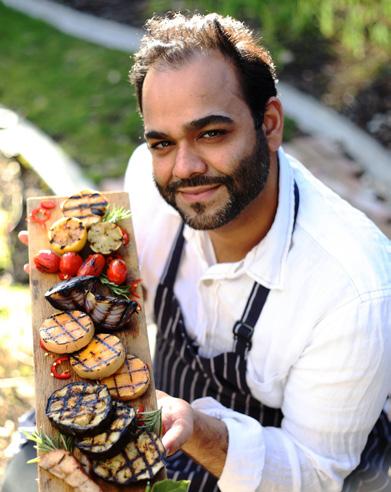





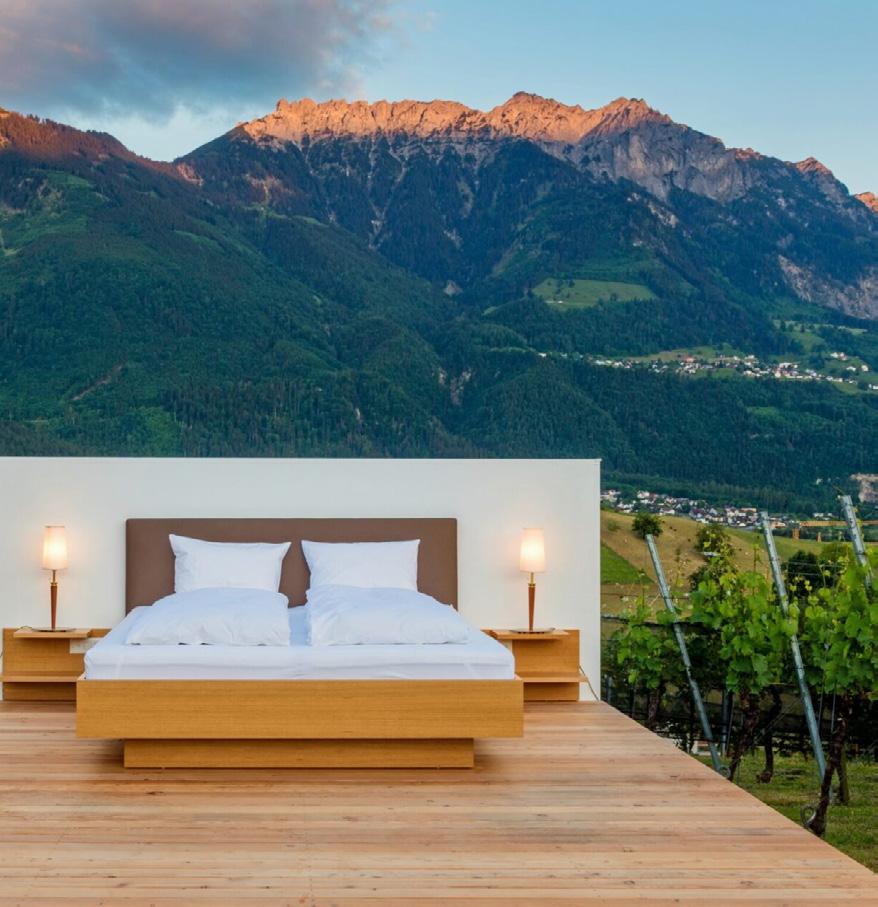
Tucked away in the heart of the coastal rainforest of Vancouver Island, the Free Spirit Spheres, with its unique suspended spherical treehouses, offer an interesting stay option amid nature. Raised above the ground, but not too high either, these orbs are works of art, gently swaying to the rhythm of nature. Built by Tom Chudleigh, these spherical treehouses are inspired by biomimicry, which learns from and mimics the strategies found in nature. Each sphere is held in the air using a series of suspension ropes and gives guests a serene sense of floating mid-air. Peace and relaxation in these tastefully designed, simple, and elegant spheres is guaranteed.
How about a stay in a hotel room that gives you a 360-degree unobstructed view of the magnificent Swiss Alps? Sounds incredible, right? But here’s the catch: this hotel room has no walls, no ceiling, no doors, and allows guests to sleep directly under the stars. Welcome to Null Stern Hotel—a truly unique hotel room concept by artists Frank and Patrik Riklin in collaboration with hotelier Daniel Charbonnier. Expect nothing fancy here, except the most hypnotic views of the Alps, as this hotel’s minimalist room is only adorned with a cozy bed, a pair of nightstands, and a pair of lamps. The nearest bathroom is about a 10-minute walk away, and a personal butler serves breakfast and dinner in bed. Though bookings have been offered in the past, especially for their Zero Real Estate suites, Null Stern Hotel’s unique concept means availability is limited and must be secured months in advance. For the current year, the hotel is still in discussions with potential partners for locations and availability. To put your name on their reservation list, you need to write to them at their official email address.
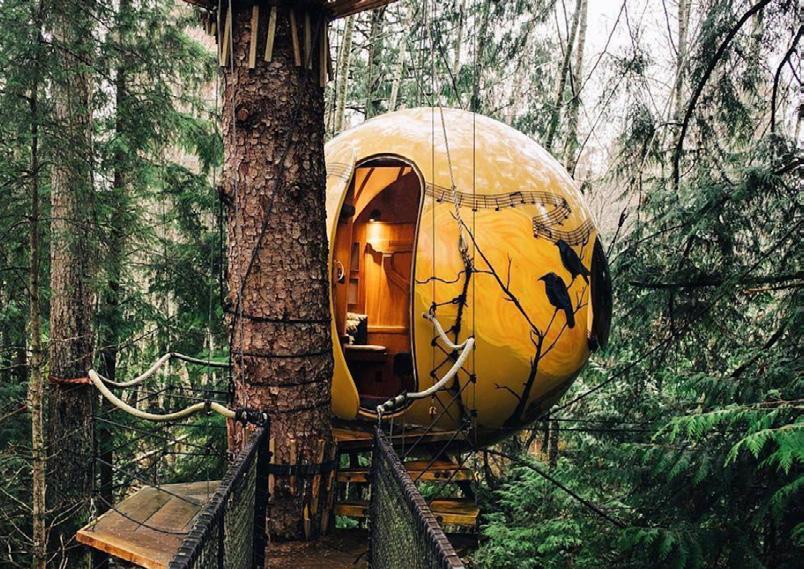
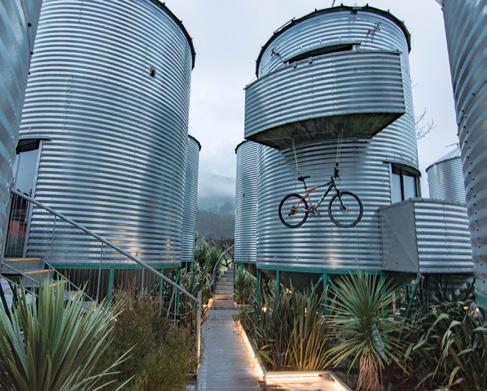
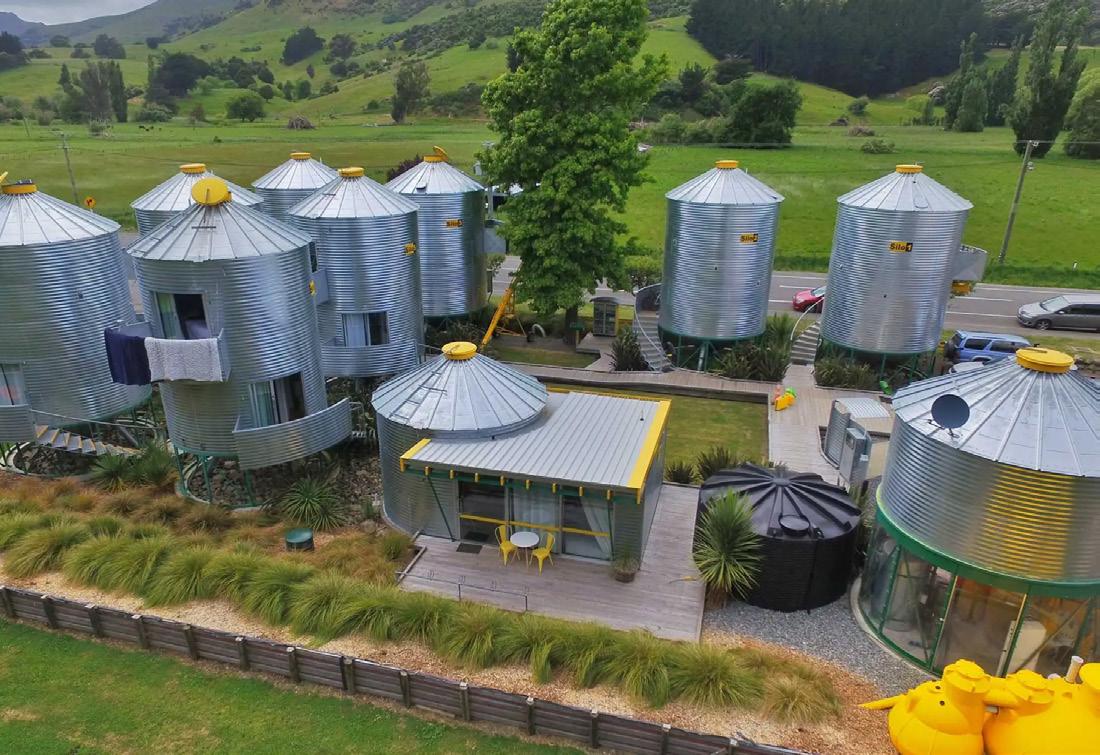

SiloStay is another experimental hotel that has cleverly converted humble grain silos into bespoke hotel units, offering a luxurious stay at affordable prices. Located in the heart of the picturesque township of Little River, in Christchurch, New Zealand, the SiloStay complex includes nine 8.7-metre-high silo units that come equipped with a fitted kitchenette, a relaxed seating area, toilet and external balcony on the ground floor. Upstairs, one can find a luxurious bedroom, bathroom, and balcony. Adding to the charm of this quirky stay, is the glazed silo lid, which offers an uninterrupted view of the sky, perfect for stargazing while lying in bed. Designed using a completely eco-friendly system with wool insulation, LED lighting, and a bio pod waste management system, each unit at SiloStay sleeps two people. SiloStay is perfect for travelers who value sustainability and care deeply about the environment.




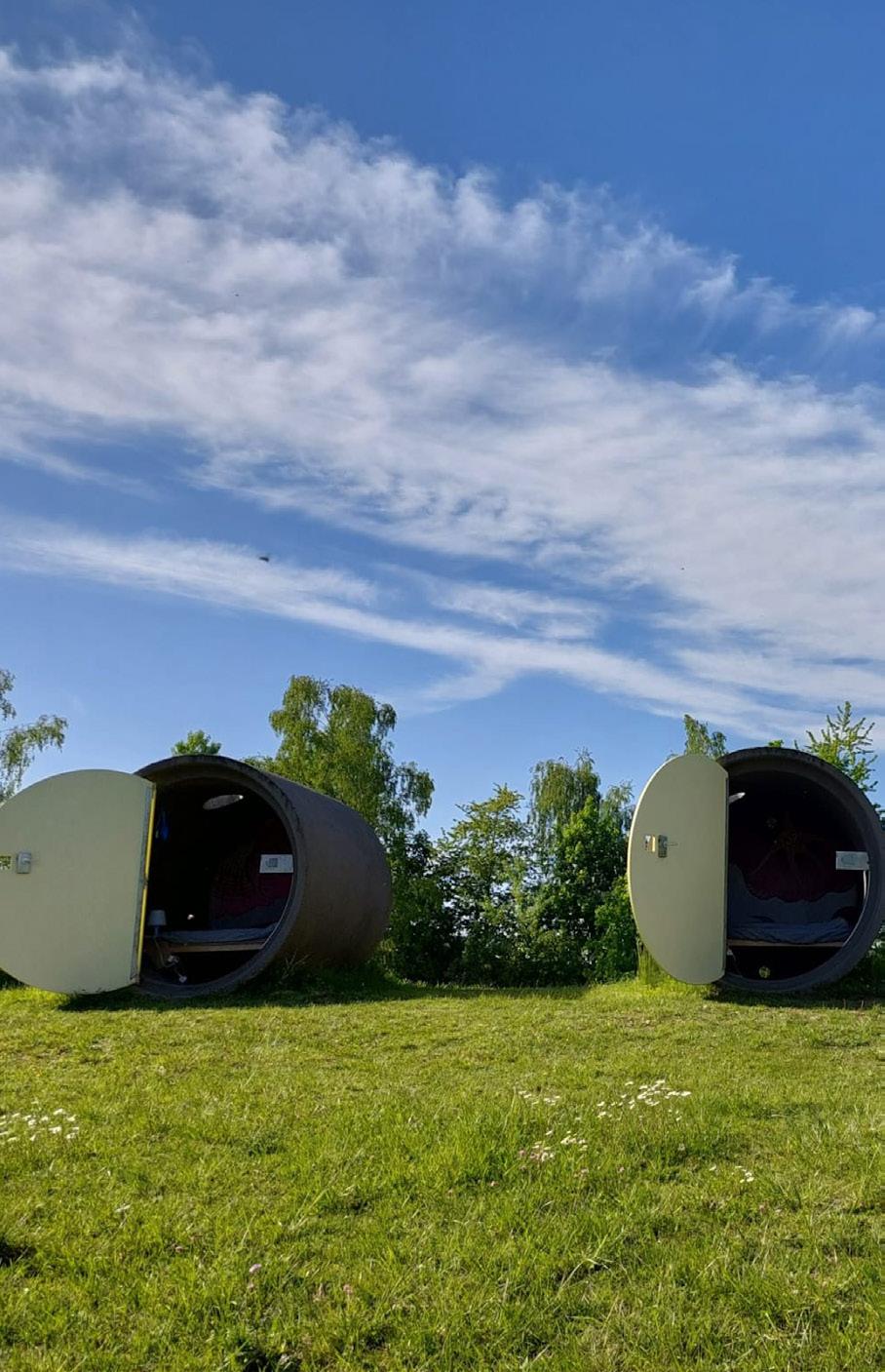



Talk about the weirdest hotels in the world, and Das Park Hotel tops the list. Nestled in a public park in Ottensheim, along the scenic Danube River in Austria, this unconventional stay has gained popularity among budget travelers for repurposing old concrete sewer pipes into surprisingly comfy rooms. Even better, it operates on a ‘pay what you want’ policy. Designed by Austrian artist Andreas Strauss, this affordable hotel provides maximum comfort in a compact space. Each room consists of a double bed, a lamp, storage space, bedding, and a power outlet to charge your gadgets. While the restroom and showers are located a 5-minute walk away in the park, a nearby restaurant is ideal for breakfast and other meals. Das Park Hotel is open from May through October. Bookings for its five cylindrical repurposed drainage pipe rooms can be made online. Following its success, the Das Park Hotel has now also opened a second location at Berne Park in
Germany.

DARPAN Magazine, in collaboration with The Dalmore, hosted an exclusive summer evening at the elegant Cask Whisky Vault in Club Versante. Guests were treated to a curated tasting experience featuring handcrafted Dalmore cocktails, gourmet small bites, and a guided exploration of The Dalmore’s exceptional Single Malt Scotch Whisky collection.
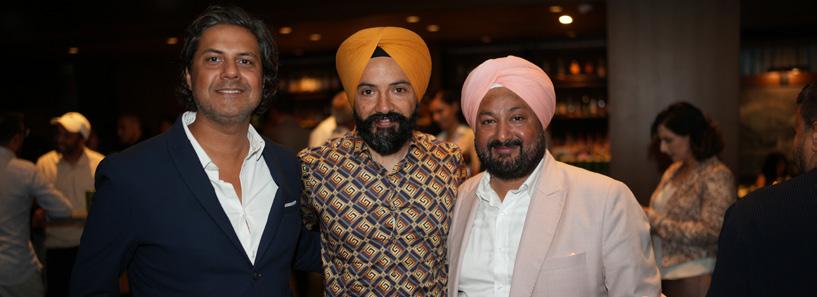
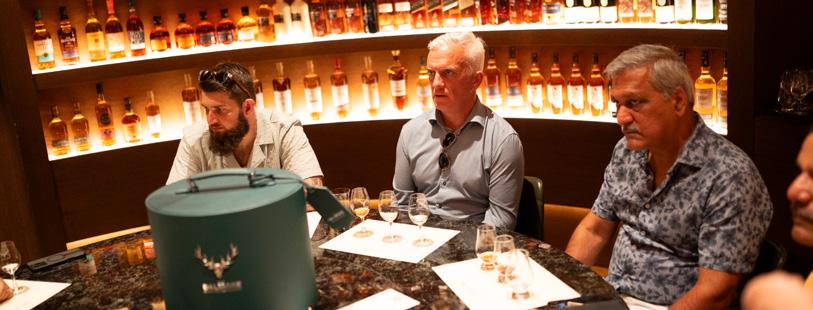

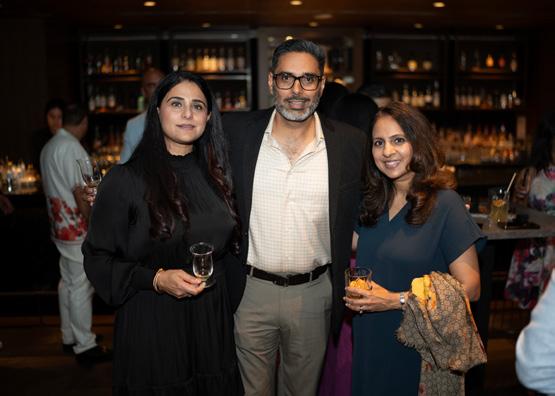
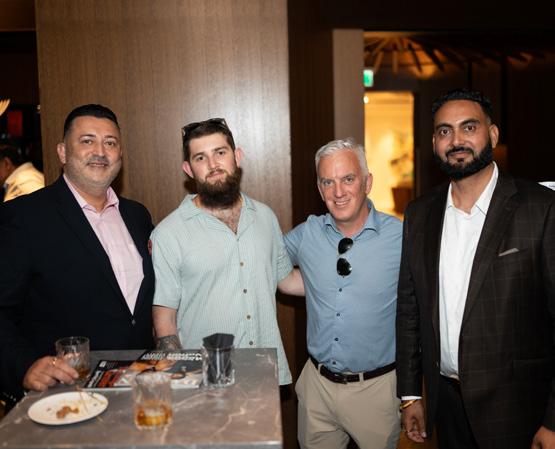
DARPAN Magazine was honored to attend a landmark moment for health care in British Columbia as the Dilawri Foundation announced a historic $60 million donation to VGH & UBC Hospital Foundation. This will establish the Dilawri Cardiovascular Institute—a world-class centre for innovation and care—right on the VGH campus.
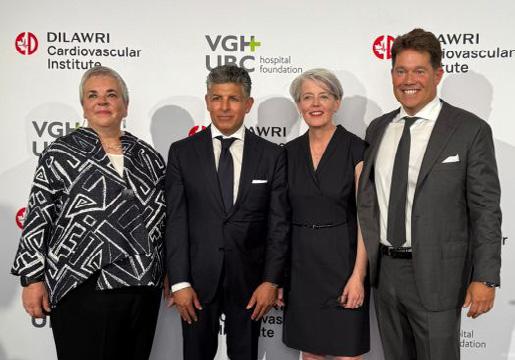
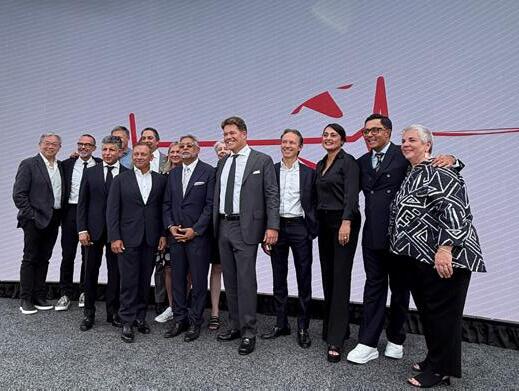

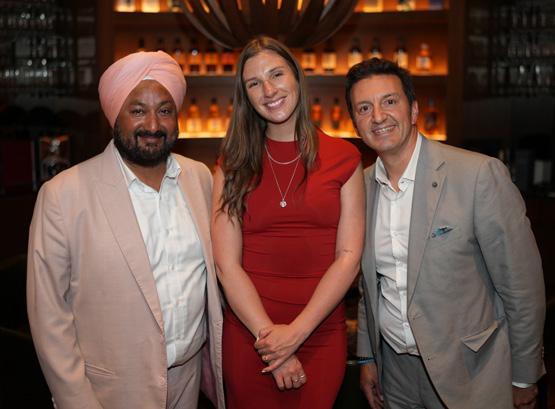
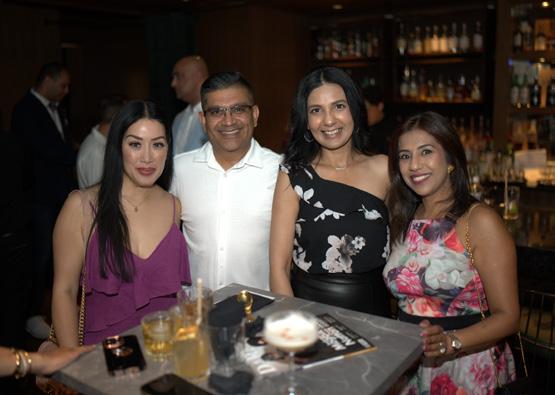

Khalsa Credit Union held its Annual Scholarship Gala on June 23 at Royal Banquet Hall in Surrey. This year, Khalsa Credit Union awarded 39 scholarships with each scholarship valued at $2,500. The event honored outstanding students and reinforced the credit union's commitment to supporting education and community development.

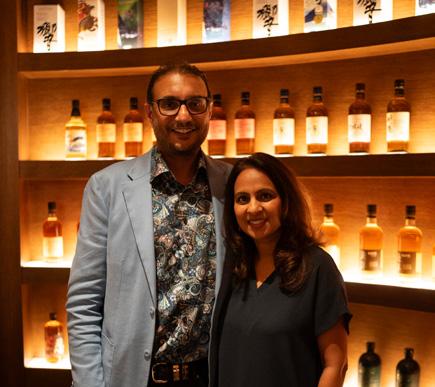


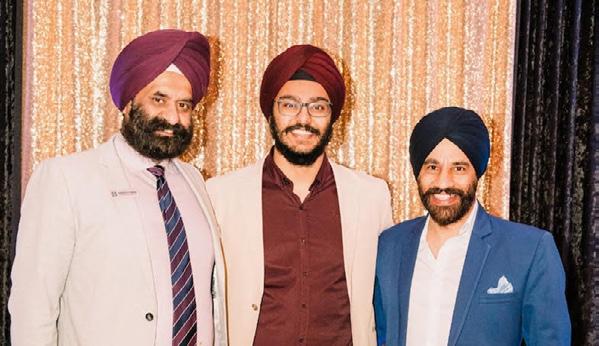
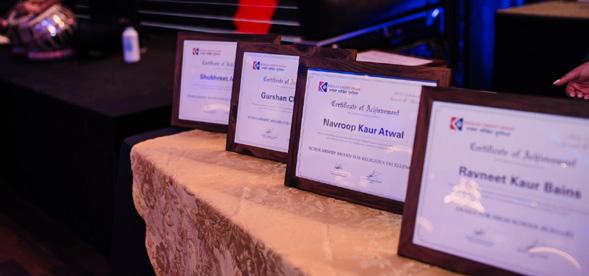







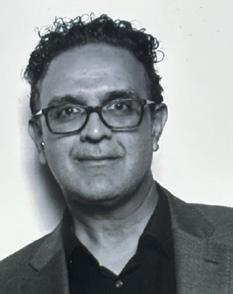


Q: How did you two meet, and what was your first impression of each other?
Neha: We met the good ol’ fashioned way—swiping right on Bumble! Neha, from Vancouver, had turned on Travel Mode when she matched with Vinay, a proud Calgarian. What was supposed to be a quick FaceTime intro turned into an eight-hour marathon. No breaks, no awkward pauses—just an easy, natural connection. When we finally hung up, we both knew this was more than just another app match. A couple of weeks later, Vinay flew to Vancouver to meet me in person, and from that very first moment, everything just clicked. What stood out to me right away was how grounded Vinay was. He made me feel safe and truly understood.
Vinay: I was instantly drawn to Neha’s warmth and energy. She was full of life and had this completely magnetic spark. And the way she talked about her family and friends, her work, her passions—I knew right away she was someone special.
Q: Can you share the story of your proposal/engagement?
It was exactly how I’d always imagined it. We were in Los Cabos with our closest friends when he secretly planned a private dinner at Sunset Monalisa, this stunning cliffside restaurant with incredible ocean views. I thought we were just dressing up for a fancy night out with the group. But as the sky turned golden and the waves crashed below, Vinay got down on one knee right as the sun was setting on April 19, 2022. When we got home, we did our engagement shoot at the Fairmont Banff Springs—one of our favorite places, and now one of our favorite memories too.
Q: Describe your wedding day for us. Did you have a favorite part of the wedding?
Our Hindu ceremony was everything we hoped for—meaningful, personal, and totally us. We made little booklets for our guests so they could follow along with the rituals. We also had a live painter capturing a scene from our ceremony. That painting now hangs in our home, and every time we walk by it, it brings us right back to that day.













Q: Tell us more about your reception.
We wanted the reception to feel like a true celebration, and it absolutely delivered. It kicked off with a fun cocktail hour, a 360-video booth, and CO2 guns lighting up the dance floor. Our first dance was to Neha’s all-time favorite song, Pehla Nasha, played live by a violinist. It was so dreamy and romantic. But the part that really stayed with us? The speeches. Our parents, siblings, and closest friends shared the most heartfelt stories. We’ve watched those clips more times than we can count… and yes, we still tear up every single time.
Q: Were any traditions or customs particularly important to include in your wedding?
We wanted to embrace all the traditions—mehndi, haldi, doli—each one full of love and meaning. What made it even more special was hosting those rituals in the home we bought together. We also surprised our parents by displaying their wedding photos at the entrance of the ceremony. It was such a special full-circle moment and
a reminder that our story is rooted in the love and legacy they built.
Q: Where did you honeymoon?
We went to Belize—and it was honestly the adventure of a lifetime! We snorkeled in the open ocean, swam with hammerhead sharks (still can't believe we did that), explored the islands by golf cart, sailed on a catamaran, flew over the Great Blue Hole, and ate some of the best food ever.
Q: What do you love the most about one another?
Neha: I love how Vinay shows up in every part of life—with intention, heart, and integrity. He gives everything to the people and things he cares about, and I really admire that. He’s super hardworking—you never have to ask or remind him to do anything. He leads with steady strength, and it’s so comforting to know he always has our backs.
Vinay: Neha has this amazing way of pouring into everyone around her. She’s confident, fiercely loyal, and always thinking about how to make life better or more joyful for others. She’s the glue in every group—the person everyone turns to—and the biggest joy in my life.
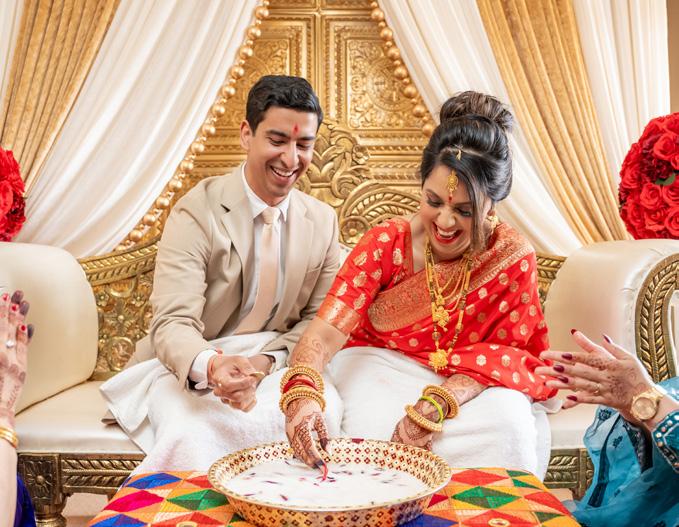
Q: How does it feel to be married, and what are you most looking forward to in this new chapter together?
It feels amazing. We’re officially each other’s forever teammates. Neha made the move to Calgary, and we’ve been settling into married life—cooking dinners, going to weddings, debating throw pillow colors. What we’re really excited about is building this life together—traveling, making new memories, and growing side by side.
Q: If you could give one piece of advice to couples planning their wedding, what would it be?
Communicate way more than you think you need to with your vendors. Don’t expect them to read your mind—send over vision boards, notes, inspiration photos, and feedback as early as possible. If you have a clear vision, own it. The clearer you are, the smoother and more magical your day will turn out!



MSRP: $48,825
MOTOR: 2.3-LITRE TURBOCHARGED FOUR-CYLINDER
HORSEPOWER: 315 @ 5,500 RPM
TORQUE (LB-FT): 350 @ 3,000 RPM


GEARBOX: 10-SPEED AUTOMATIC LAYOUT: FFRONT ENGINE, REAR-WHEEL DRIVE FUEL ECONOMY: 12.1 L/100 KM MIXED CITY/HIGHWAY (OBSERVED)



Six decades in, the iconic Ford Mustang shows no signs of slowing down, having just ushered in the seventh iteration last year. For open-air fun that won’t break the bank, enthusiasts can’t go wrong with the EcoBoost Convertible.
“Investing in another generation of Mustang is a big statement at a time when many of our competitors are exiting the business of internal combustion vehicles,” says Ford CEO Jim Farley, in an announcement when the model was first announced. “Ford, however, is turbocharging its ICE growth plan, adding connected technology, opinionated derivatives, and hybrid options to our most profitable and popular cars–all in the Ford Blue family–on top of investing $50 billion in electric vehicles through 2026.”
By Benjamin Yong
For fans of the outgoing product, the good news is that designers have stuck with a familiar formula but remixed it a little while throwing in some heritage flair. The grille is squarer than before, reminiscent of the original 1960s example. The slim Tri-Bar LED headlamps look tough and match the rear vertical taillights nicely. Overall, the shape just looks a tad sleeker and more chiseled, and dimensions remain nearly identical to the former except for a bit of extra width. Looking best when the onetouch, fully lined and insulated fabric roof is stowed, there is still decent trunk space when driving top-down. No less than 11 colors are available on the latest pony car, two of them first-timers: the bright Yellow Splash and the cool greyish Vapor Blue that coated DARPAN’s press loaner.

The biggest changes take place in the interior. Known for plenty of physical switches and dials over the years—which, full disclosure, I miss—the dash is now dominated by a 13.2-inch infotainment display. There’s still a single row of buttons for things like hazards and windshield defrost; however, most onboard controls are taken care of on the big screen. The analog speedo is also swapped for a 12.4-inch digital instrument cluster. The tech upgrade is nice, though it leaves the space feeling a little modern-day generic.
Still utilizing a 2.3-litre turbocharged four-cylinder, the EcoBoost mill has been reworked to deliver a modest additional 5 horsepower. Sadly, a manual transmission option is no longer offered (GT only), and instead, the rear wheels are spun via a 10-speed automatic transmission. If you opt for the base model, such as the one we drove, be aware that there are no steering wheel paddle shifters installed.
I was surprised at how throaty the four-banger ‘Stang sounded when the dynamic exhaust (+$1,495) is equipped. Your neighbors will hear you coming from blocks away, unless you turn on the silent mode, reducing the roar to a purr that’s great for cold, early morning starts. The car was plenty of fun to drive, even in an entry-level configuration.
To spice things up, a $6,500 High Performance Package bundles several goodies, including a Torsen limited-slip differential, 19-inch wheels, gunmetal alloy wheels shod in 255/40/ ZR19 rubber, drift brake, Brembo brakes, aforementioned paddle shifters, enhanced suspension system, and more.
The 2025 Ford Mustang EcoBoost Convertible starts at MSRP $48,825.
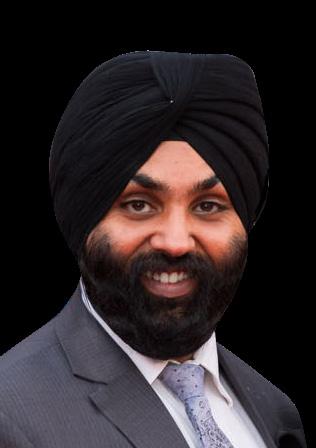


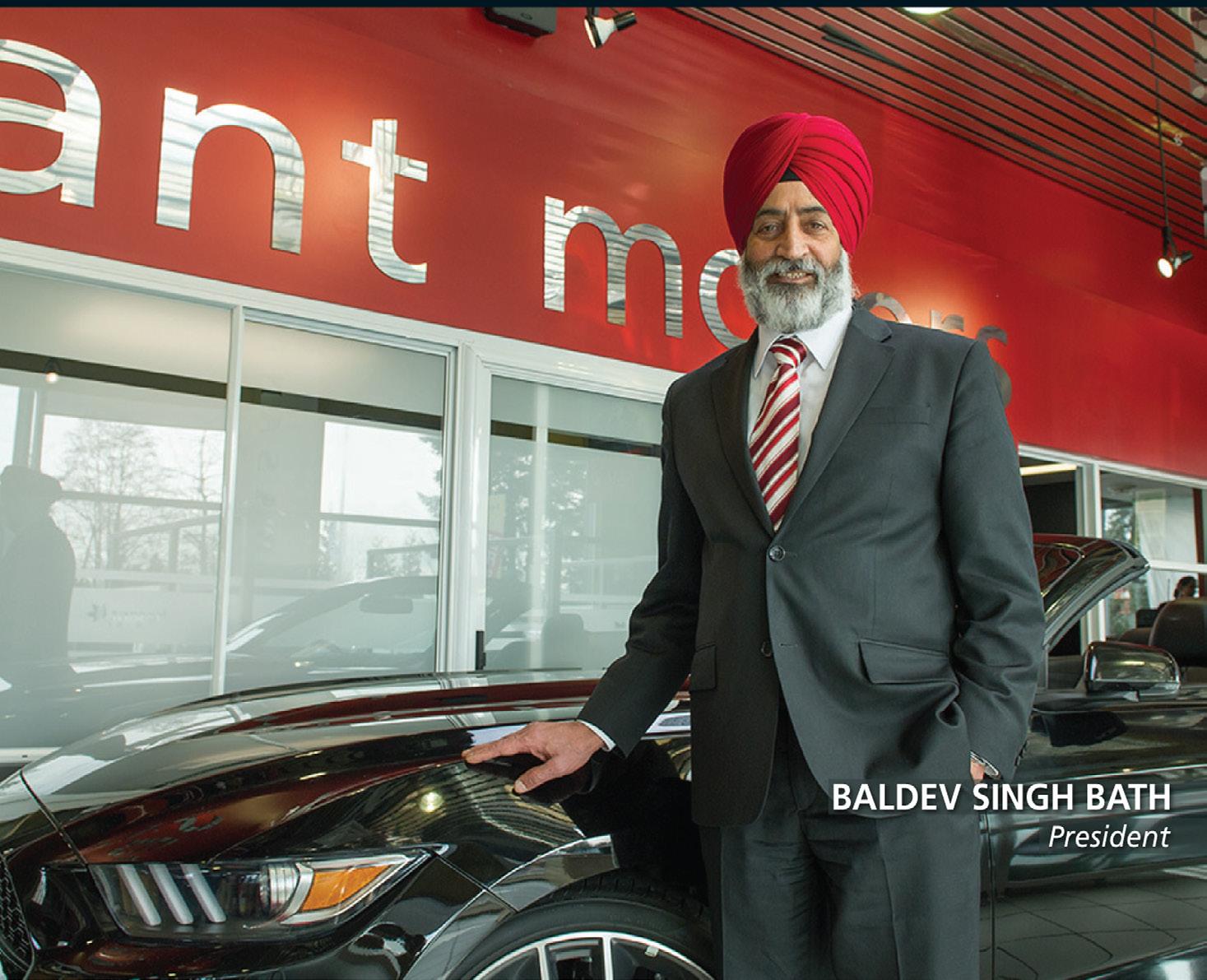

MSRP: $75,247

MOTOR: 2.0-LITRE TURBOCHARGED FOUR-CYLINDER WITH TWO ELECTRIC MOTORS
HORSEPOWER: 375 @ 5,250 RPM (NET)
TORQUE (LB-FT): 470 @ 3,000 RPM
GEARBOX: EIGHT-SPEED AUTOMATIC LAYOUT: FRONT ENGINE, FOUR-WHEEL DRIVE
FUEL ECONOMY: 11.3 L/100 KM MIXED CITY/HIGHWAY (OBSERVED)
Originally introduced in 2021, the plug-in hybrid version of the Jeep Wrangler has proven to be a popular choice for electric off-road enthusiasts. Recently, as part of a mid-cycle refresh, the brand has sweetened the pot, offering extra capability and convenience.
“The Jeep Wrangler is the archetypal adventure hero, embodying the spir-


it and the soul of the Jeep brand,” says Christian Meunier, Jeep brand CEO, in a media release. “Since its introduction, we have sold almost five million Wranglers around the world, setting new levels of 4x4 capability with each new generation. Today, we are raising the bar once again by combining the most capable Wrangler to date with more technology, comfort, and safety features. This is a no-compromise combination enhanced by the freedom to choose from four different powertrains, including our electrified 4xe.”
For the first time, the Wrangler boasts a full-float Dana solid rear axle, which increases the durability of the axle, permitting owners to run larger wheels and tires as well as increasing towing capacity. A badass-looking
By Benjamin Yong
winch is also optionally fitted to a steel front bumper (+$1,495) to provide easy vehicle recovery in sticky situations.
Stylistically, not much has changed, although two fresh paint colors are offered: Bikini (blue) and Anvil (+ $395), found on our press loaner, the latter a bluish-grey hue that looks unique. The signature seven-slot grille receives a minor update featuring a slimmer presence, painted bezel, and textured slats.
A Sunrider partially fabric roof is standard, but I prefer the easy operation and feel of the Sky One-Touch power soft top, ensuring occupants in both rows enjoy an obstructed overhead view, while still affording some security behind proper C-pillars and privacy

glass. The caveat is quite a bit of on-road wind noise when it’s open.
Uconnect infotainment is among the best in the segment, and the fifth version powers a 12.3-inch touchscreen. Wireless Apple CarPlay and Android Auto are supported, and users can download off-road adventure trail guides showing detailed routes across Canada and the U.S., with difficulty ratings and waypoints, shown right on the central display.
The Nappa leather package (+$2,495) adds super-comfortable power-adjustable leather front seats, leather shift knob and parking brake, and premium trim on the doors. One observation is a lack of storage space in the front cabin. For example, there’s nowhere really to stash a phone other than in the dual cupholder area.
There are no changes to the 4xe powertrain consisting of a 2.0-litre turbocharged four-cylinder engine, two electric motors and a 17-kilowatt-hour lithium-ion battery, mated to an eightspeed automatic transmission, making 375 horsepower and 470 lb-ft of torque.
The partially electrified Rubicon is fun to drive, and even just having an all-electric range of approximately 35 kilometers helps run errands around town between charges. The full complement of hardware that enthusiasts love remains, such as a Rock-Trac part-time transfer case, electronic front sway-bar disconnect, and Tru-Lok front and rear axle lockers providing maximum traction and articulation over challenging terrain. Chunky 17-inch alloy wheels wrapped in 33-inch BFGoodrich all-terrain tires is the cherry on top.
New for the 2025 model year is available Active Cabin Ventilation, allowing owners to pre-set an interior temperature via the mobile app before entering for optimal comfort. The Jeep Wrangler Rubicon 4xe is built at the Toledo Assembly Complex in Ohio.











MSRP: $142,500
MOTOR: 4.0-LITRE TWIN-TURBOCHARGED V8
HORSEPOWER: 510 @ 5,500 RPM
TORQUE (LB-FT): 538 @ 2,000 RPM
GEARBOX: NINE-SPEED AUTOMATIC
LAYOUT: FRONT ENGINE, ALL-WHEEL DRIVE
FUEL ECONOMY: 15.4 L/100 KM MIXED CITY/ HIGHWAY (OBSERVED)
The 2025 Mercedes-Benz GLS 580 isn’t a brand-new model, but rather a facelifted offering that gives the flagship luxury SUV a more refined appearance and a little extra oomph.
Grilles are where the German automaker always puts a lot of effort when introducing a refreshed or redesigned vehicle, and the same is true here. The outgoing twin-blade example is retired instead of a four-louvre unit finished in Silver Shadow, a treatment normally reserved for Maybach products.
The rest of the front fascia is much sportier as well, with body color air intake bezels and gloss black trim. At the rear, three LED blocks inside the taillamps complement the signature daytime running lights. Deep Twilight Blue Metallic and cool MANUFAKTUR Alpine Grey are new paint options. At 5,215 millimeters long and

2,030 millimeters wide, the boxy shape is perfect for fitting up to seven passengers (six if captain’s chairs are fitted) and/or recreational gear. On a spring trip into the mountains, the cavernous cargo area was nearly able to accommodate two snowboards oriented vertically.

By Benjamin Yong

Refreshingly, the interior is rather subdued. Gorgeous open-pore wood lines the dashboard and door cards, the ambient lighting isn’t too over-the-top, and most of the controls are handled via the infotainment display. An updated steering wheel incorporates touch controls on the twin horizontal spokes, and the supportive multi-contour front seats boast eight different programs, such as the spa-inspired “hot stone” and “active workout” to mitigate fatigue on the back and legs. The air vent slats are also given the Silver Shadow treatment to match the grille. The equipped $7,000 Premium Rear includes heated, ventilated, and massaging second row seats and entertainment screens behind the forward uber-cushioned headrests. Two 100-watt USB ports at the back ensure mobile devices stay charged up.

Under the hood is still the 4.0-litre twin-turbocharged V8, mated to a nine-speed automatic transmission, which engineers have massaged to now produce 510 horsepower and 538 lb-ft of torque—an improvement of 27 and 22, respectively. Delivery is buttery smooth, but as you’re actually maneuvering the SUV around town, its girth is definitely felt. AIRMATIC air suspension is standard and automatically chooses the correct damping level depending on the driving environment to offer maximum comfort and performance.
Equipping the $1,300 Acoustic Comfort Package makes the ride even more enjoyable. The windshield and windows are laminated with a special membrane that helps to block out unwanted noise and absorb heat from the sun. In addition, other sound-deadening measures are applied elsewhere in the cabin to keep the experience as serene as possible. The ENERGIZING AIR CONTROL advanced filtration system utilizes sensors to constantly monitor and optimize occupant air quality. Most buyers probably aren’t taking the GLS off-roading, but there are features like Transparent Hood that use onboard cameras to visualize the steering angle of the wheels, potential obstacles underneath the vehicle, and more. An available Off-Road Engineering package installs underbody protection and provides higher ground clearance.






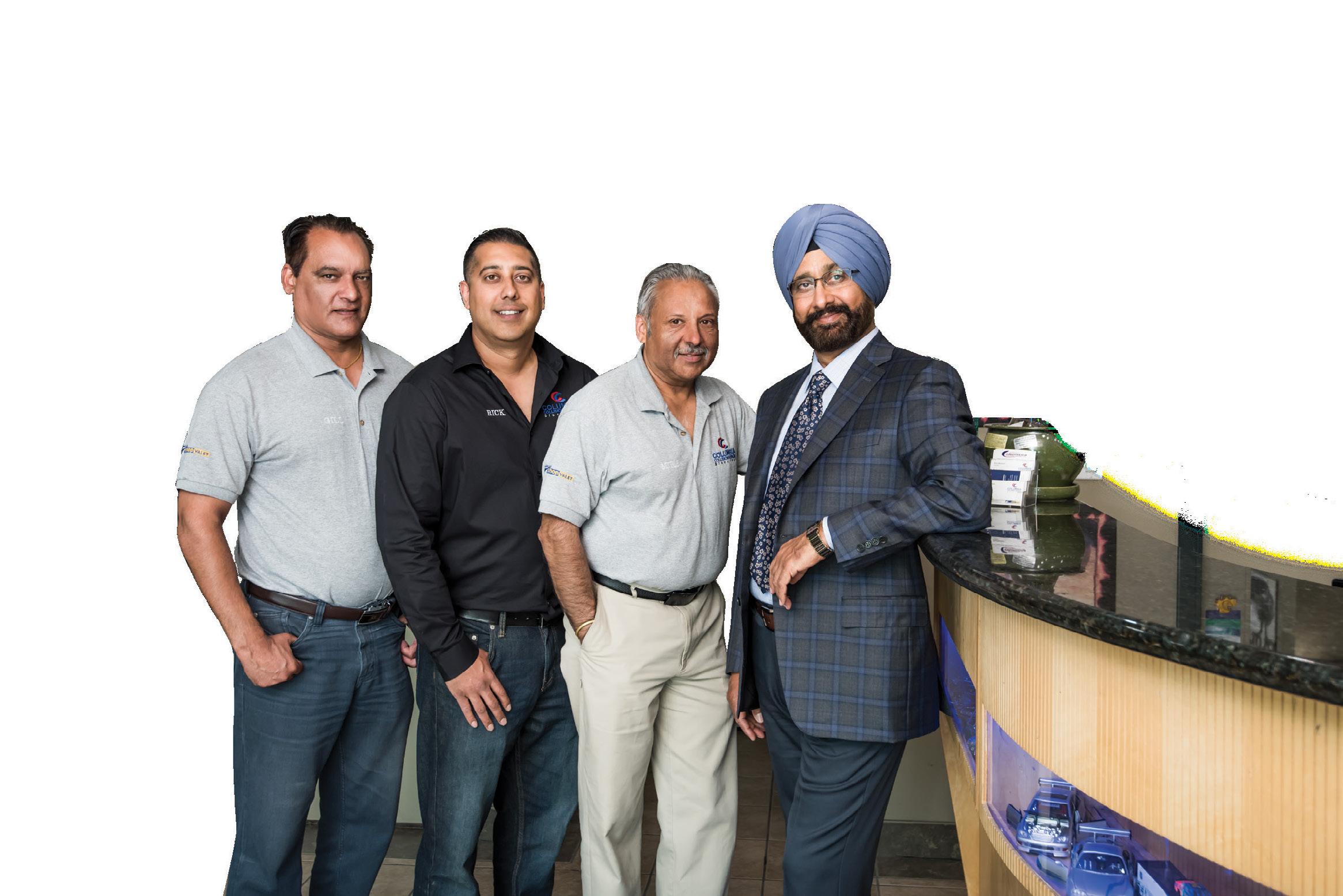
The 2024 Mercedes-Benz GLS 580 is built at the company’s Tuscaloosa factory in Alabama with a base MSRP of $142,500.




What inspired you to make the move to Canada, and how has your journey been so far?
In 2008, I was set to pursue my Master’s in Australia, having received offers from top universities. But something didn’t feel right. During a family gathering, a cousin who had visited Canada spoke highly of its beauty and opportunities. I did my research, found a good program, and came to Canada as a student. I arrived during the 2008–2009 economic crisis and studied in Oshawa, a city deeply affected by the downturn. Despite the challenges, I felt God’s guidance every step of the way. Two months after graduating, I landed my first role as a QA technician with a food processing company. Today, I feel deeply grateful for this country, the people who supported me, and most of all, for God’s grace that lit the path.
Where did you first stay when you arrived in Canada?
When I first arrived, I didn’t know a single person. I spent my first eight months in college residence and was picked up directly from the airport by a college service. It was a bit scary being in a completely new country alone, but I
Jayant Banwar, Director of FSQA at Halenda's Fine Foods, made Canada his home in 2009. He now lives in Brampton with his wife, Sandeep Kaur, who works as a dental hygienist.
soon realized how friendly and helpful people were. I still laugh remembering how, on my second day, I asked where to shop and was told “downtown”—I thought it was the name of a store and kept searching for it!
How would you describe your experience finding a job in Canada?
Job search in Canada is unique. I’ve learned that even a strong resume or solid experience isn’t always enough. Referrals and networking play a crucial role—with the right connections, the process can be smooth.
What were some of the biggest surprises or challenges you faced when you arrived?
I was pleasantly surprised by how kind and accepting people in Canada are. When I arrived, I knew no one, but within months, I had friends from diverse backgrounds. I was also struck by the everyday etiquette— saying “thank you” or “sorry,” and holding doors open—small gestures that left a big impression.
How has your experience as an immigrant shaped your view of Canada as a country?
To be honest, I was welcomed so warmly by
the community that I rarely felt like an outsider. While I had to learn and adapt along the way, that’s part of the journey. Canada offers endless opportunities, and with wise choices and hard work, the sky’s the limit.
If you could go back in time, would you do anything differently about your immigration journey?
I wouldn’t change a thing. God has been incredibly kind, and I’ve been blessed with everything I once dreamed of—a loving wife, a beautiful home, a supportive community, and the privilege of caring for my parents. All I hope now is to be a blessing to others and help them grow.
How do you see the future for yourself and your family in Canada? What are your hopes and aspirations?
The news lately is quite depressing, but I remain hopeful about the future, both for Canada and my family. I’m working towards starting my own consultancy firm and believe it will come to fruition soon.
Proudest Moment in Canada
I was honored to speak at the 18th Annual Canadian Summit on Food Safety in Toronto—a truly special moment for me.
Advice for Immigrants
Tune out the negativity in daily news. Canada is a beautiful, welcoming country—if we embrace it with open arms and an open mind, it will do the same for us. Spread love, stay positive, and remain humble.


